The publication for all lighting professionals

HIGH LIGHTS
How lighting is changing how we experience, and enjoy, air travel
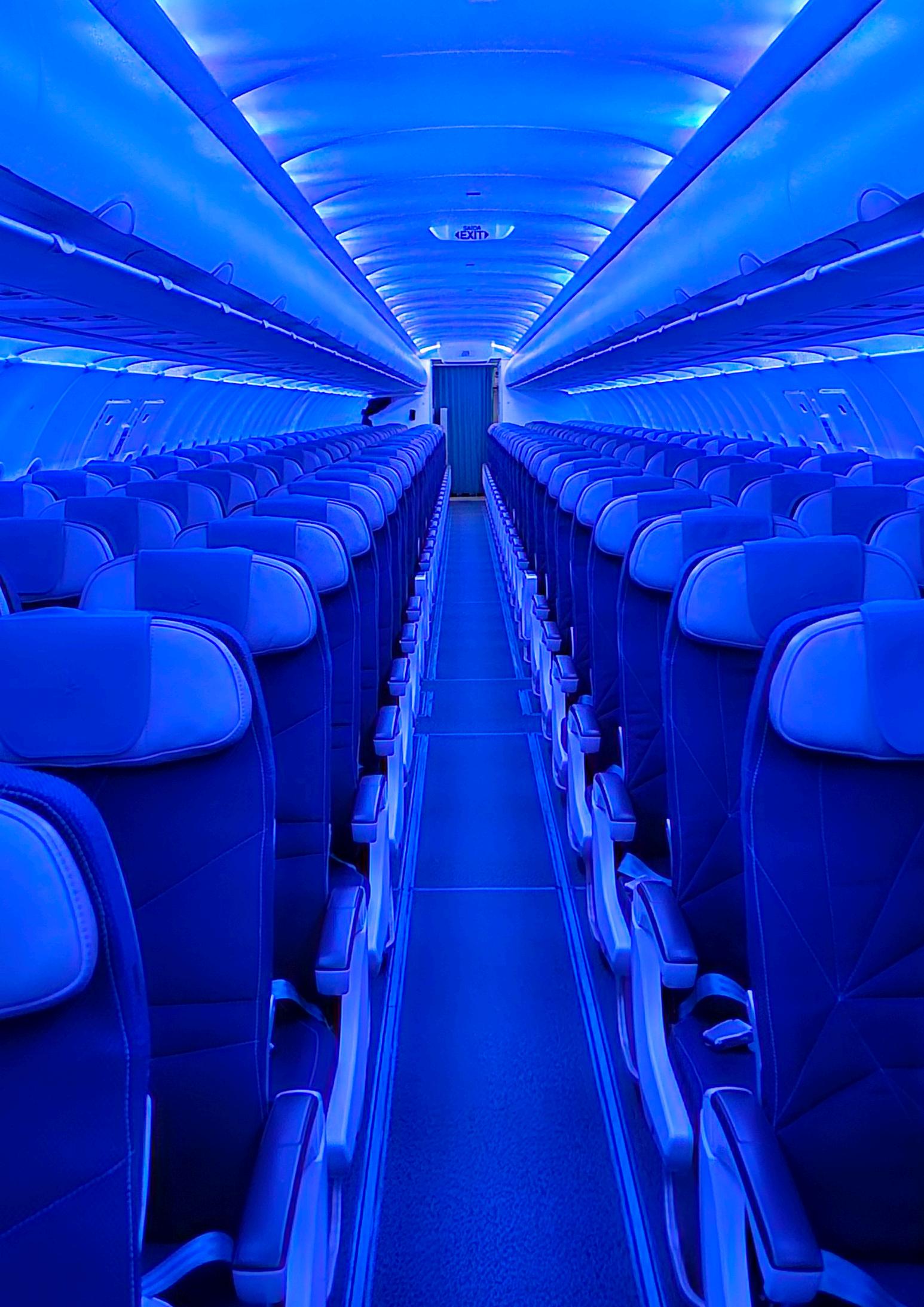
PICTURE PERFECT
The headaches, and rewards, of lighting the V&A’s Photography Centre
SHIPPING SHAPE
Rising to the challenges of lighting challenging environments
Professional
best practice from the Institution of Lighting Professionals
October 2023
LETS MAKE OUR STREETS SAFER. DAY AND NIGHT.
"Tackling violence against women and girls is higher up the agenda than ever before. Smartwatch™ systems can provide monitoring, interventions and reassurance."
“We chose to install Smartwatch™ with the city’s Safer Streets funding because it is a uniquely intelligent tool for good. The system is supportive and elegant rather than intrusive; helping us in our aim to prevent unwanted behaviours for a safer, stronger, more confident city.”
Janice Jones

Community engagement
A sense of well-being
Public use of spaces
Smartwatch™ integrated lighting, cameras and software can encourage Smartwatch™ provides
Real-time notifications

Two way audio support
Deterrence for crime & anti-social behaviour
 Community Reassurance Theme Manager City of Doncaster Council
Jess Gallacher Exterior Lighting BDM ASD Lighting
Community Reassurance Theme Manager City of Doncaster Council
Jess Gallacher Exterior Lighting BDM ASD Lighting
saferstreets@asdlighting.com Discover more
JOINING UP NET ZERO
Achieving net zero is, of course, about reducing emissions and achieving greater sustainability. But, for local authorities especially, it is also about joined-up thinking, writes Perry Hazell
MEASURING PEDESTRIAN REASSURANCE
Higher illuminance leads to higher pedestrianreassuranceandareduction in the differences between the levels of reassurance reported by men and women, a field study has suggested. Shahab Gorjimahlabani, Dr Jim Uttley and Professor Steve Fotios report
PICTURE PERFECT
VIRTUAL VISUALISATION
As a technology, virtual reality (VR) visualisation is not new but, as Jack Cunningham explains, its ability to visualise and configure colour-change animations, dimming regimes, and a variety of control-based solutions can significantly enhance and streamline the lighting design experience

RIVER RECLAMATION
A stunning new lighting scheme along the the River Rhône in Lyon,France, is a key part of the city’s ongoing ‘reclamation’ of the river for its citizens
CAREERS SERVICE
Jess Gallacher
Exterior Lighting BDM

ASD Lighting
Lighting theV&A’s new Photography Centre, including its walk-in Camera Obscura, created a whole range of lighting challenges for Michael Grubb Studio. But the result has definitely been worth all the testing and prototyping, reflects Michael Grubb

HIGH LIGHTS
Size, weight, reliability and safety and all key considerations when specifying airline lighting. But, increasingly, as a new scheme for Azores Airlines has shown, jetting off on holiday is also about experiencing immersive, colour-changing lighting scenes, as Pierre Michard explains
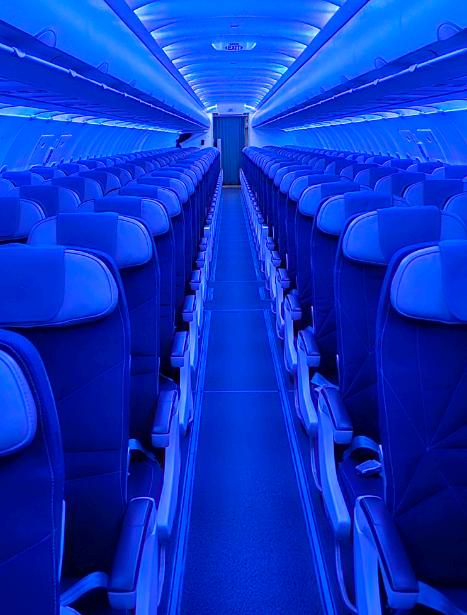
COME FLY
New floodlighting in London Stansted Airport’s short-stay car park has made the site more accessible, safe and energy efficient
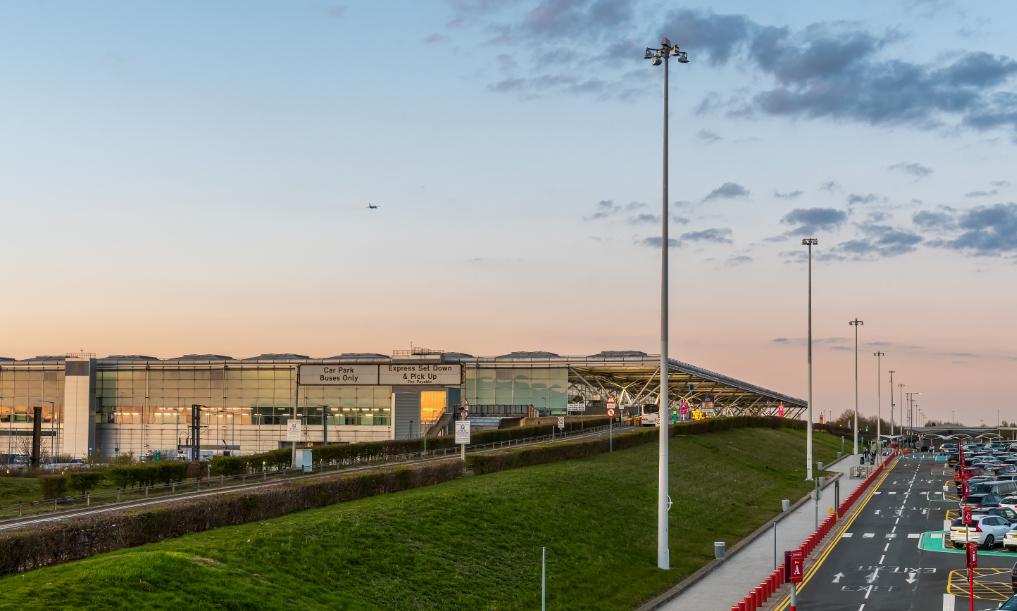
SHIPPING SHAPE
From maintenance costs and energy savings to safety and visibility improvements, switching to LED lighting can make a significant difference for customers operating in challenging or hazardous environments, writes Matthew Sieglitz

SHUTE AND SCORE
Illuminating the 165m-long ShuteShelveTunnelinSomersetsoasto not disturb its delicate populations of batsandspidersmeantcarefulplanning, specification and collaboration,including with ecologists,as Ross Evans writes
The ILP’s popular Exterior Lighting Diploma is running again this autumn. It provides would-be lighters with the core skills, knowledge and confidence to kickstart their professional futures in lighting, writes Guy Harding

‘IT WAS PROOF THAT I AM A “PROPER” LIGHTING PROFESSIONAL’

DW Windsor’s Emma Gregory describes her ELD ‘journey’ and the value it has brought to her lighting career
‘I LIKE HOW LIGHTING CAN CHANGE PERCEPTION AND ATMOSPHERE’
From a chance meeting in a taxi through to running a team in Bangalore, assistant lightingengineerJordanBrienexplainshow lighting has led him to where he is today
COVER PICTURE
The ‘ocean’ lighting scene created for Azores Airlines by STG Aerospace, as part of its push to rethink the ‘experience’ of flying off on holiday. Turn to page 26,where Pierre Michard outlines how (and why) immersive, colourchanging lighting scenes are becoming the future of air travel
06 42 46 50 51 54 12 18 26 30 32 38 12 32 42 18 30 www.theilp.org.uk OCTOBER 2023 LIGHTING JOURNAL Contents 3
Janice Jones Community Reassurance Theme Manager City of Doncaster Council
LIGHT UP, DRIVE OVER EMINERE™ INGROUND anolislighting.com

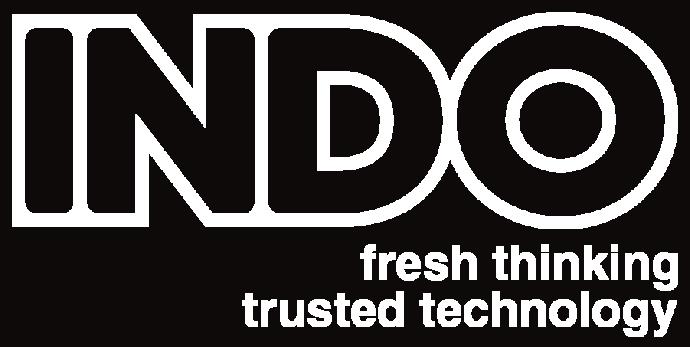

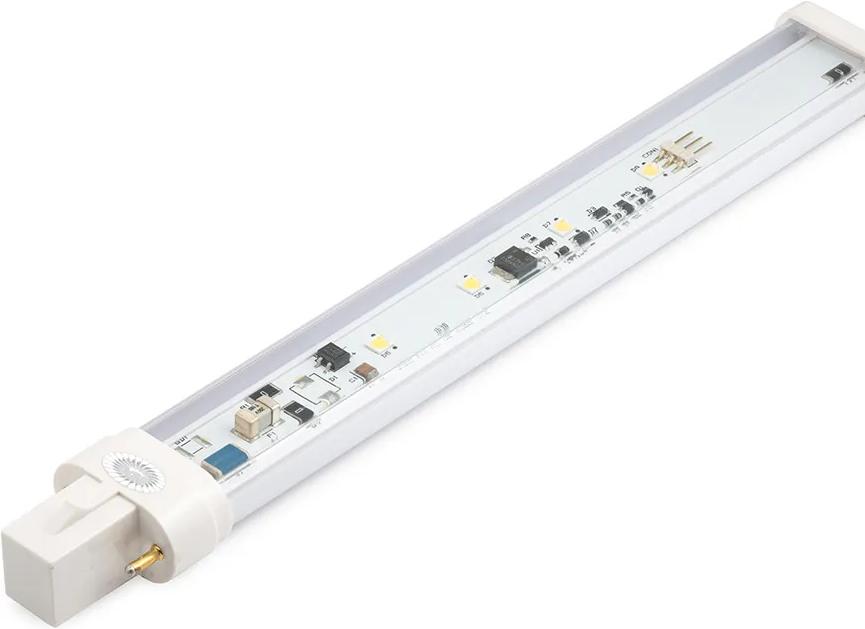





OCTOBER 2023 LIGHTING JOURNAL 4 info@indolighting.com www.indolighting.com 02380982022 W E T INDO’sRoHSCompliant LEDLampRange EXISTINGLAMP INDOREPLACEMENT FluorescentT8 T8SA FluorescentT5 T5UE GX24/G24Base GX24 PL-T/DuluxT/E PSTS FluorescentPL-L PLLS SOXLamps LSSS FluorescentPL-S PLUE
Volume 88 No 9
October 2023
President
Rebecca Hatch IEng MILP
Chief Executive
Justin Blades
Editor
Nic Paton BA (Hons) MA
Email: nic.cormorantmedia@outlook.com
Lighting Journal’s content is chosen and evaluated by volunteers on our reader panel, peer review group and a small representative group which holds focus meetings responsible for the strategic direction of the publication. If you would like to volunteer to be involved, please contact the editor. We also welcome reader letters to the editor.
Graphic & Layout Design
George Eason Design
on behalf of Matrix Print Consultants Ltd
Tel: 07506075098
Email: hello@georgeeason.design
Advertising Manager
Emma Barrett
Email: ebarrett@matrixprint.com
Published by Matrix Print Consultants Ltd on behalf of Institution of Lighting Professionals


Regent House, Regent Place, Rugby CV21 2PN
Telephone: 01788 576492
E-mail: info@theilp.org.uk
Website: www.theilp.org.uk
Produced by Matrix Print Consultants Ltd
Unit C, Northfield Point, Cunliffe Drive, Kettering, Northants NN16 9QJ
Tel: 01536 527297
Email: gary@matrixprint.com
Website: www.matrixprint.com
© ILP 2023
The views or statements expressed in these pages do not necessarily accord with those of The Institution of Lighting Professionals or the Lighting Journal’s editor. Photocopying of Lighting Journal items for private use is permitted, but not for commercial purposes or economic gain. Reprints of material published in these pages is available for a fee, on application to the editor.
If there’s a theme running through this month’s edition of Lighting Journal, it’s how lighting professionals consistently overcome even the most challenging environments tocreategreatspaces.
Arguably, of course, the V&A Photography Centre can’t be described as a ‘challenging’ environment in the traditional sense. But, as Michael Grubb emphasised to me (from page 18), the effortless simplicity and clean lines that have been achieved throughout belie the complexity, and extensive testing and prototyping, that has gone intomakingthisvenerablespacework.
Lighting the centre’s Camera Obscura, in particular, created some real headaches for Michael’steamintermsofgettingthedesiredeffectinthespacewithoutsimplyblinding ordisorientatingvisitorsorendingupwithaspacethatwasoverlyshadowed.

Similarly, the galleries, while at one level all relatively homogenous light and airy ‘boxes’, also required very careful thought, planning and prototyping, not to mention somecreativeon-siteinstallationsolutions.
By comparison, Rotterdam’s Rubis Terminal shipping terminal is a much more conventionally ‘challenging’ space, given that it stores petrochemicals and biofuels, amongotherindustrialproducts.
Here, as Matthew Sieglitz has highlighted (from page 32), lighting teams frequently need to be creative and innovative in how they manage and mitigate hazards such as corrosivesaltspray,dust,chemicalvapours,heat,moistureandtheriskofflammableor explosiveenvironments.
It was the same story (as Ross Evans writes from page 38) in the lighting scheme for the Shute Shelve Tunnel in Somerset, with in this case the added complication of needing to minimise light pollution/trespass into the upper tunnel canopy and lessen anyimpactonwildlifeandecology.
Yet, however advanced the technology, it is only as good as the lighting professionals specifying it, collaborating and leading on the project and, most of all, thinking outside thebox,somethingweseeespeciallyclearlyinlighting’songoingdrivetonetzero.




As Southwark’s Perry Hazell emphasises in this edition from page six, local authority lighting professionals can really make a difference to how this sustainability agenda is pushedforwardbythinkingbeyondjustlighting,thinkingaboutthingsintheround.


In Southwark’s case this has meant either investing in or simply investigating new sensor and solar lighting technologies, EV charge-points (of course), EV commercial and fleet vehicles, EV bikes and mopeds, carbon offsetting, living walls and columns, kinetic walkways,evensolar‘trees’,amongotherinnovations.
AsPerryhasexplained,thishasalsomeanthimandhisteamrecognisingtheyneedto bethinkingaboveandbeyondjustroadlightingandEVcharge-points,thattheyneedto be prepared to be creative and test the water on a wide range of new technologies – and evenacceptthatnotallbrightideaswillnecessarilyworkand/orcometofruition.
Finally, is VR (virtual reality) visualisation going to be the future of lighting design? Certainly,asJackCunninghamarguesfrompage42,theadvantagesitcanbringinterms ofbeingabletovisualiseandconfigurecolour-changeanimations,dimmingregimesand controlscansignificantlyenhanceandstreamlinethelightingdesignexperience.
Again, however, for me, the key is this brave new technology complementing and enhancing the expert, nuanced humandimension of lighting design, specification and manufactureratherthanreplacingit.Onnetzeroespecially,forexample,asitishumans who have set the challenge, so it will ultimately need to be human ingenuity and creativity,bothwithinandoutsidelighting,that(weallhavetohope)solvesit.
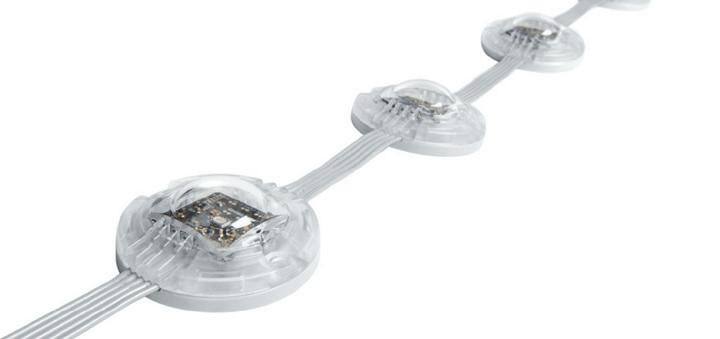 NicPaton Editor
NicPaton Editor



SUBSCRIPTIONS
ILP members receive Lighting Journal every month as part of their membership. You can join the ILP online, through www.theilp.org.uk. Alternatively, to subscribe or order copies please email Diane Sterne at diane@theilp.org.uk. The ILP also provides a LightingJournalsubscription service to many libraries, universities, research establishments, non-governmental organisations, and local and national governments.
OCTOBER 2023 LIGHTING JOURNAL Editor’s letter 5 MEDIA IN MOTION ARCDOT™ anolislighting.com ARCPIX II™
JOINING UP NET ZERO
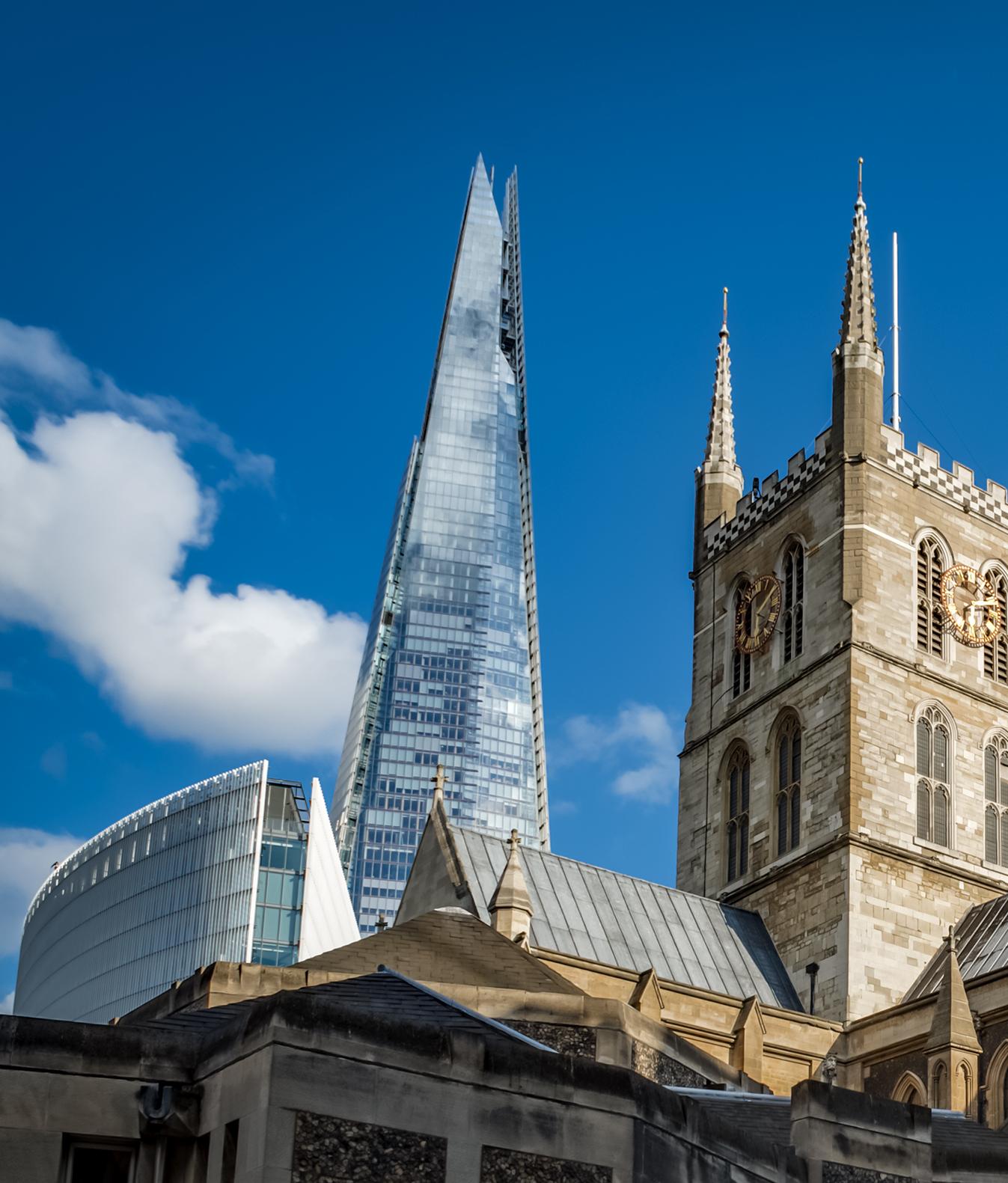
Achievingnetzerois,ofcourse,aboutreducing emissionsandachievinggreatersustainability. But,forlocalauthoritiesespecially,itisalso aboutjoined-upthinking
 By Perry Hazell
By Perry Hazell
OCTOBER 2023 LIGHTING JOURNAL 6
When it comes to sustainability and net zero, a lot of our focus as local authority lighting engineers in the past few years has been on two things: street lighting and electric vehicle (EV) charge-points.

While those are of course important conversations,gettingtonetzeroby2030 –asisourambitioninLondonBoroughof Southwark(likemanycouncils,tobefair) –itisimportanttorecognisethisissomething that has to happen across the wider spectrumofthecouncil.
We need collaboration across departments, to start thinking about the whole task at hand and not individual silos of work.Ifwearegoingtomakearealchange, itwillbeatastrategiclevelpullinginresourcesanddrivingefficienciesinallareas.
For us in Southwark, we’ve calculated that we ‘only’ need to spend a mere £3.92bn to get to net zero. So if anyone’s gotanysparechangedownthebackofthe sofayou’remorethanwelcometoinvestit inourborough!
Anotherimportantpointisthat,evenas alocalauthority,thereisonlysomuchyou can do directly. At Southwark, we’re only responsible for an estimated 12% of the emissionsacrosstheborough.Soasalocal authoritywecanmakeadent,butthereis still a massive chunk of emissions out there, emissions that we need to try to impactorinfluencetochangeandreduce.
When we look at emissions, we emit about 1,074 kilotons of carbon dioxide equivalents as a borough each year. The vast majority (28%) of borough-wide emissions come from residential housing and industrial buildings (29%), followed by commercial premises (16%), road transport(15%)andwastedisposal(5%).
Within this, street lighting accounts for some 6.2 million kilowatt-hours (MKW). Lighting across all of our estates and commercial

Lighting and net zero
buildings is another big contributor in terms of emissions, along with the use of old inefficient services such as gas boilers andsoon.
So,whatarewedoing?Onroadlighting – and in much the same vein as Lighting Journal has discussed in many previous articles – we’re doing everything that everyone is doing: LED upgrades, adaptive lighting, switching off where we can, dimming and trimming, EV charging and smallcelldeployments.
For me, this ‘journey’ is not just about reducing consumption but recognising that sometimes you have to add kit, add extra equipment, to bring about reductions in the longer term. Smart city functionality now allows for a proactive, reactive maintenance programme for highwaysassets,ratherthanjustacyclicalone; this will be critical but will need buy-in fromalldepartments.
WIDESCALE ELECTRIFICATION
However,ifwe’relookingatnetzerointhe round this means looking beyond road lighting.So,forexample,howwecanbestto pushtowardsnetzerothisinourindustrial buildings?
In some buildings, such as our depot in Peckham, we’re installing brand new lighting systems. We’re making greater use of occupancy sensors. We’re doing insulation and heating upgrades, converting to air source heat pumps where appropriate. We’re looking at heating areasof buildings rather than whole buildingsthemselves.
We’re investigating water harvesting and,ofcourse,recycling.We’re
looking at implementing working zones. Postpandemic,moreandmorepeopleare now working from home, where we have two floors with 50% occupancy, we’re naturallyworkingtobringteamstogether ontothesamefloor.Thathelpswithcollaboration and the sociability of the work environmentandallowsuseithertoclose floors or, probably more usefully, reuse or repurposethem.
Another change we’ve brought in is quick-deployment solar lighting. So, if we havethird-partydevelopmentworkgoing on where a column removal is required, rather than just sticking up hoarding lighting without much thought to the British Standard, we are able to remove the column and deploy a similar output lanternintheshapeofasolarlight!Asthe deployments are temporary, we can match the programme of most builds and reinstallthecolumninthesamelocation.
A big positive of these deployments is commercialisation.Thesolarcolumnsare chargeable for the time period they’re deployed. Some of our columns are already cost neutral. To the point where some deployments are now making us money. And it is also of course a win on the green factor. Well worth exploring as a local authority.
WhenitcomestoEVcharge-points,our aimistoachievemore than2,000inSouthwark
7
LIGHTING JOURNAL OCTOBER 2023 www.theilp.org.uk
Lighting and net zero
and we’re currently at around 1,600. So we’rechargingahead…getit?
What that also now allows us to do is look at the electrification of our 220strong fleet of vehicles. The key message hereisthatitisnotjustaboutEVcharging but about using EV charging to facilitate widerelectrification.
For example, we been trialling an EV mobileelevatingworkplatform(MEWP), developed by IntraFleet, with a fully electricboom.
The electric MEWP can carry out 30 to 40 passes, on a full charge, a pass is up in the bucket around 360o and down again. That doesn’t sound a lot but, actually, it was more than adequate for our day-todayworks.

It has an 80-mile range which, again, is absolutely fine for our level of work. We are,however,luckyinthatwequiteasmall boroughgeographically.
One of the issues we have had with it, however,isthesizeofthebucket,whichis quitesmall.Iamonthesmallerendofthe scalecomparedtosomeofouroperatives, andevenI'vefounditasqueeze!
Plus, it only has a 120kg safe working load, which is not a lot when you’ve also got your lantern, your bracket, your tools. We fed that back to IntraFleet and, they are now looking at other suitable vehicles that can accommodate a higher safe workingload.

EV CARGO BIKES
Alongside the MEWP, we’ve trialled EV cargo bikes. I even took one out for a spin myself.Itwasgood,andacomfortableride, even though halfway through my ride I foundoutithadnoreversegear,sothatwas astruggle!
We’retalkingaboutusingthemtomake
small deliveries to sites. Or to use them as partofourparks’maintenance.Thereare still some issues that need to be addressed, such as the visibility isn’t great – you can’tseebehindyou,forexample–butall inalltheyareapositiveaddition.
We’ve also looked at electric bikes or mopeds,thesearecurrentlybeingusedby

our traffic wardens. I think these sorts of small electric vehicle will become more and more apparent in some urban environments, especially where are ULEZs (ultra-low emissions zones), now expanded of course within London. The new worldof‘micromobility’.
We’ve been doing work around carbon
innovationdevelopedbyIntraFleetthat maybeofinteresttolightingengineersis off-grid mobile welfare units for operatives(asshownopposite).
The solar and wind-powered units can accommodate up to 16 people and include rainwater harvesting and grey waterflushing.

OFF-GRID MOBILE WELFARE UNITS

As well as the zero-emissions MEWP being trialled by Southwark, another
They have a fully insulated wall and roofsystemwithnocoldbridging,PIRactivated LED lighting, a 4 x 200ah battery bank, 5.5kW solar roof panels withanda1kWwindturbine.

OCTOBER 2023 LIGHTING JOURNAL www.theilp.org.uk
8
Electric innovations councils can be considering. Clockwise from left: a 'living' column, an electric MEWP, a quick-deployment solar light, and a kinetic tile for walkways

www.pudseydiamond.com |01264336677
Lighting and net zero
offsetting and reducing carbon within materials. For example, we work with a large bollard manufacturer that has implemented a big scheme around offsettingofcarbon.Theyproducecarbon,they get that, but they’ve also got rid of 360 tonnes of CO2 through various carbon offsettingschemes,plantingtrees,putting inwindfarmsandsoon.
There are other innovations coming over the horizon, too. The quick deploymentofEVchargerstodevelopmentsites is,forexample,beingtrialledinneighbouring Westminster and is something we’re also looking at for Southwark. This opens up the opportunity to use electric plant and maybe even charge your electric cargo bike up during works. A great initiative.
Living walls and living columns/lamps
CIRCULAR ECONOMY PRODUCT VERIFICATION SCHEME
The LIA and Cibse have joined forces to introduce a new product verification scheme aimed at promoting circular economy practices within the lighting industry.
The scheme, known as the TM66AssuredProductConformity Scheme, is intended to provide independent verification of lightingmanufacturers’circularity claims, ensuring accuracy and credibility.
TM66 Assured, argue both the LIA and Cibse, will become an essential component of the TM66 toolkit to assess the circular economy credentials of lighting products throughout the supply chain.

It complements the existing TM66 CreatingaCircularEconomyintheLightingIndustryguidelines and the TM66 Circular Economy Assessment Methods (CEAM), published in 2021.
One manufacturer already embracing it is Holophane Europe, whose managing director David Barnwell said of the launch: ‘Anything that helps drive greater awareness of the environmental benefits associated with a circular economy approach is a positive step forward. The TM66 Assured Product Conformity Scheme allows participating manufacturerstodemonstratetheirsustainability efforts, providing clear differentiation from unsubstantiated greenwashing.’
are great for creating biodiversity. We aren’t currently doing this in Southwark, but both are on our radar. They’re solarpowered and come with their own irrigation as well as insect and bird boxes. They’re great for improving air quality andsimplythefeelofanarea.Youcanalso wrap solar-powered festive decorations aroundthem.This,tomymind,isthesort of thing all local authorities need to be thinkingabout.
SUSTAINABLE PARKS
One project in Southwark that I am quite passionateaboutisafullysustainablepark. We can produce, store and use what we make.We’renotthereyet,ifitdoeskickoff, hopefullytheywillcallitthePerryPark!
So how are we going to produce the energy?Wehave kineticwalkways.These probably are not that useful in, say, a park if there’s not that much footfall but can workwellinotherurbanrealmareas,such as large urban realm areas, or outside trainstationsandsoon.
Another thing I’m a big fan of is solar panel ‘trees’. These are where you have a ‘tree’ of smaller solar panels rather than one big panel, which can often look better
aesthetically in the urban environment. We’relookingatkineticplayequipmentas well.
Ultimately, for me, the message is that we need to recognise that sustainability isn’t all about reduction. We all talk about reducing, stopping, cutting stuff, and that’sfine.
But, actually, let’s also make things, add positive things, do things differently. It’s about joining up the sustainability ‘dots’ across your council and thinking beyond, say,justroadlightingorEVcharge-points. That’s also going to involve collaborative and cross-departmental working, but that’snotabadthing.
If we can start to build real momentum towards net zero as local authorities, to really be seen as pioneers and test-beds for innovation, we’ll start to see manufacturersjumpingonboardandalsobringing new technologies, new thinking, to the table. And pushing for net zero will becomeareallypositiveplacetobe.
LUCY ZODION CORNISH EV PROJECT
Street lighting manufacturer Lucy Zodion has partnered with Enervo to support Cornwall County Council in its drive to roll out electric vehicle charge points, in particular the installation of 109 new ‘SWARCO’ charge points across 42 car parks throughout the county.
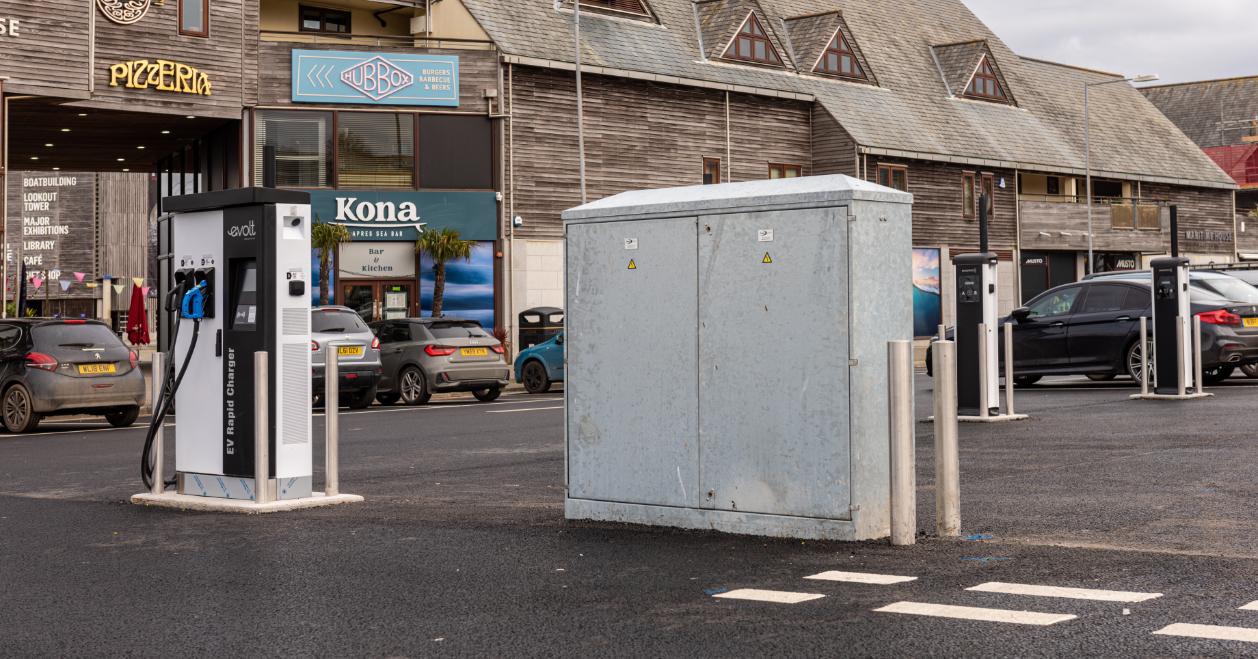
The project includes the deployment of 19 rapid 50kW chargers, capable of recharging an EV battery to 80% in around 40 minutes, and 90 7kW slow chargers,typicallyusedovernight.
To power each car park efficiently, LucyZodionhassuppliedits‘EVIS’prewired feeder pillars, which included a
mixof100Aand200ADNOfeederpillar cabinets. The initiative is part of the Drive EV2 Project, which is funded by theEnglandEuropeanRegionalDevelopmentFundundertheEuropeanStructural and Investment Funds Growth Programme2014-2020.
Matt Williams, new business manager at Enerveo, said: ‘The Lucy Zodion team was fundamental to the success and efficiency of this EV installation. The preset configurations allowed us to easily select the right EV supply pillar for each car park’s requirements, with the freedom to change at any point in theeventofanissueorchangeinchargepointconfiguration.’

OCTOBER 2023 LIGHTING JOURNAL www.theilp.org.uk
10
Perry Hazell is business manager, Asset Management Services, at London Borough of Southwark, as well as the ILP’s Senior President Elect

Higherilluminanceleadstohigherpedestrianreassuranceandareductioninthe differencesbetweenthelevelsofreassurancereportedbymenandwomen,arecentfield studyhassuggested
By Shahab Gorjimahlabani, Dr Jim Uttley and Professor Steve Fotios
MEASURING PEDESTRIAN REASSURANCE ‘P
edestrianreassurance’istheterm definedbytheCIEtoencapsulate conceptssuchasperceivedsafety and fear of crime when walking [1]. One aim of road lighting in residential roads is to enhance the reassurance that it is safe to walk, with a longterm goal being to support government initiativestopromoteactivetravel.



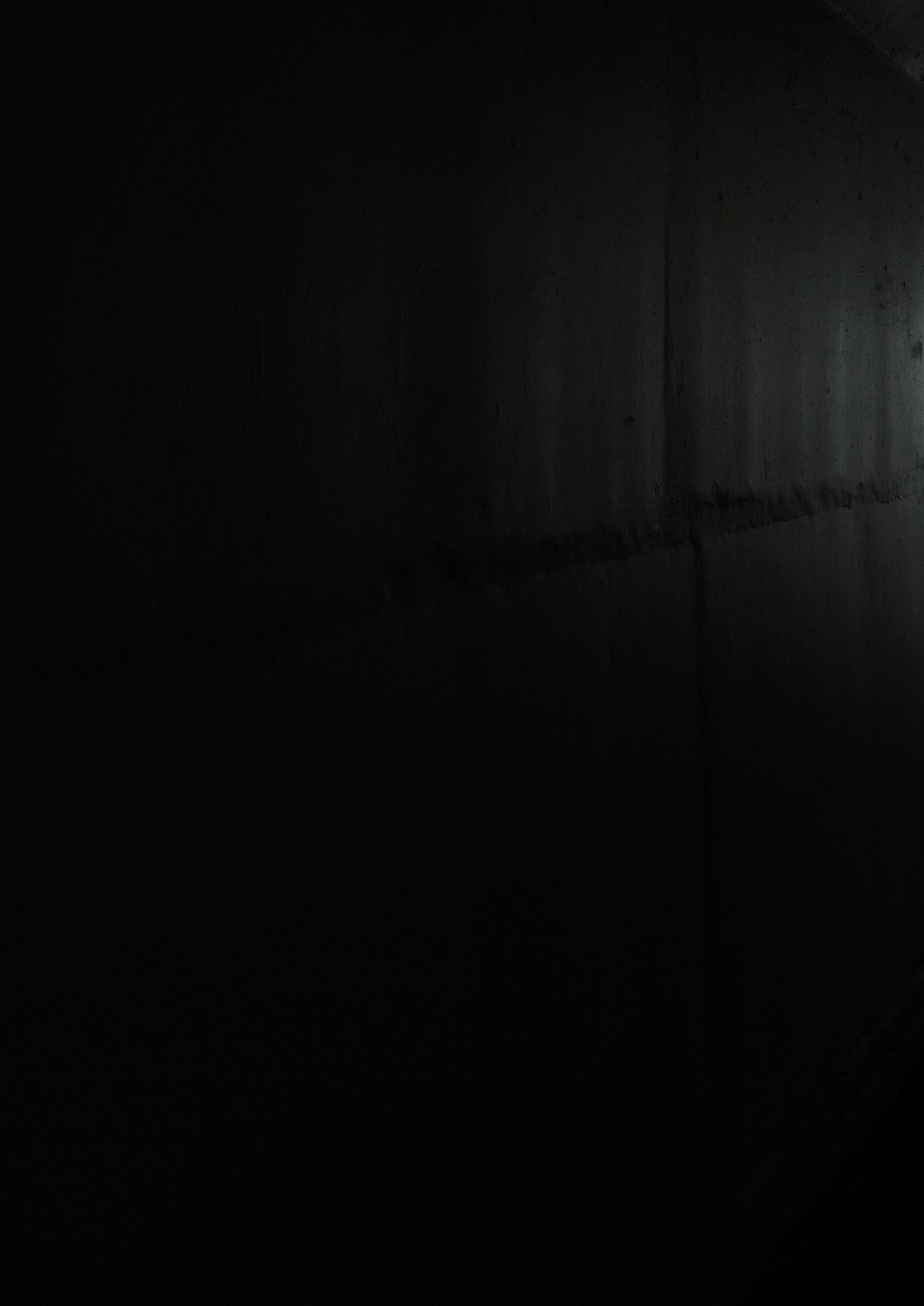
Understanding pedestrian reassurance is useful to lighting design because it is a keydeterminantofoptimallightingdesign criteria[1]. Manystudies–suchasBoyceet al2000,Fotiosetal2019,Peña-Garcíaetal 2015, Portnov et al 2022 – have been conducted to investigate optimal design criteria, most commonly the amount of light [2]. However, there is still no agreed consensus on the optimum light level for pedestrian reassurance in any given context.
Oneproblemisthatreassuranceisdifficult to measure [3]. The most common approach is to ask people (typically either peoplepassingbyaspecificlocationortest participants recruited to visit several locations)tomakeanevaluationusingarating scale. This is not an easy evaluation to capture. It is common for the way a question is asked or the context it is asked in to unintentionally bias the response. That may lead us toward the wrong decisionsaboutroadlightingdesign.
Shahab, who is a PhD student at SheffieldUniversity,isinvestigatingthemeasurement of pedestrian reassurance for his PhDresearch.Wedescribeherehisrecent experiment.
FIELD STUDY
A field study was conducted around February 2023 in a residential neigh-

bourhood of Sheffield. The 122 test participantswereaskedtoevaluatehow safe they felt when visiting each of twelve locations, three of which are shown in figure 1. There were three questions about reassurance, with responses given using a six-point rating scale ranging from one to six (with highervaluesindicatingahigherlevelof reassurance).
The locations were chosen to represent different light levels (arithmetic mean illuminances ranging from about 3 lux to 12 lux), different types of path (alongside a road, and a footpath through a wooded area), and different degrees of reassurance as estimated by the experimenter beforehand. Within this work, Shahab was able to question a number of factors about the measurement of reassurance.
OCTOBER 2023 LIGHTING JOURNAL 12
Figure 1. Three examples of the 12 locations in which reassurance was evaluated: on a path through wooded area (left) and on footpaths adjacent to a road (middle and right)
MORE LIGHT = SAFER?

Figure 2 shows the average after-dark safety ratings (the average of the three questions about reassurance) at each location, plotted against the average illuminance.
The best fit line to these data, a linear trend, shows that reassurance increased with higher illuminance. In other words, if the desire is to help people feel safer so that they choose to walk, then these results suggest road lighting is a benefit afterdark.
One problem with after-dark evaluations is that they do not account for the underlying level of reassurance at a location. There will be variations due to the nature of the physical environment such

asthepresenceoflitter,graffitiorderelict properties.
If a location feels unsafe in daylight (daytime) then it is likely to feel unsafe


after dark, regardless of the light level. A high illuminance in a location of otherwise low reassurance may feel less safe thanalocationoflowerilluminance.
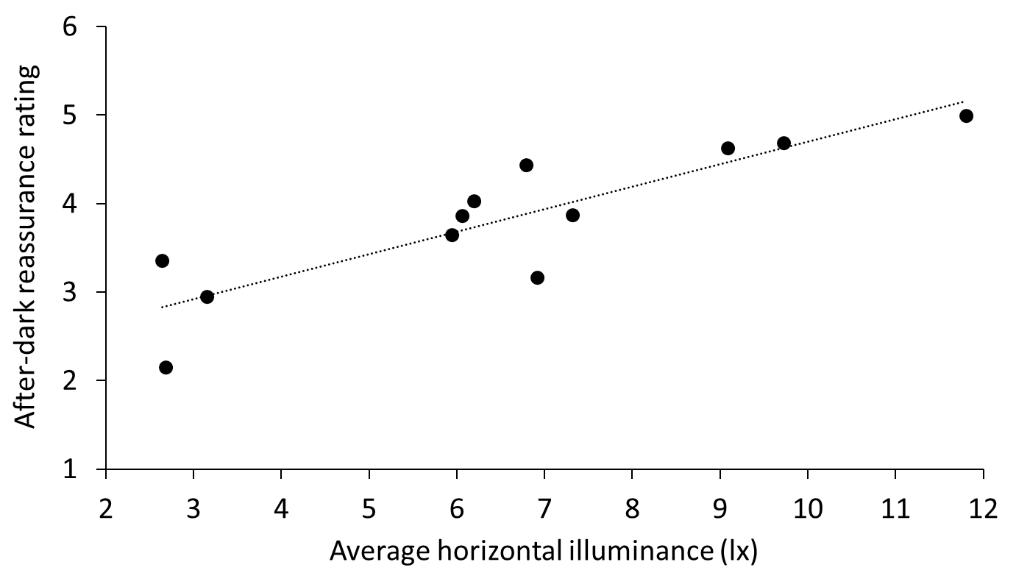
13
LIGHTING JOURNAL OCTOBER 2023
Pedestrian lighting
anolislighting.com HIGHLIGHTING OUR HERITAGE LIGHTING SOLUTIONS FOR HERITAGE BUILDINGS DIVINE™
Figure 2. Average after-dark reassurance ratings plotted against average horizontal illuminance in the 12 test locations
Pedestrian lighting
The field study therefore sought reassurance evaluations at each location on two occasions, once after dark and once in daylight,bythesamesampleoftestparticipants. The effectiveness of lighting was then indicated by the difference between their daylight and after-dark evaluations (the day-dark difference) with better lightingbeingthatwhichbringsasmaller day-darkdifference.
Figure 3 shows the average day-dark differenceateachlocationplottedagainst average illuminance. It can be seen that the day-dark difference approaches zero withhigherilluminance.Higherhorizontal illuminance increases reassurance towards the level experienced in daylight atthatparticularlocation.


Analyses using both the average afterdark rating and the day-dark difference suggest that roads lit to higher average illuminances enhance pedestrian reassurance.
DO FEMALES EXPRESS GREATER FEAR THAN MALES?
It is commonly found in reassurance-type surveys that females express a greater degreeoffearthanmales[4].This,however, should not be taken as proven evidence of an underlying difference between the genders. For example, the responses may be affected by socially desirable responding, that males underplay their fear and reportahigherlevelofreassurance.
Furthermore, the (usually) small difference between male and female responses in daylight tends to become greater forevaluationsafterdark,suggestingthat road lighting would be of greater benefit to females than males. However, if pedestrians are observed, rather than asked about how safe they feel, the difference betweenmalesandfemalesisabsent[5].
If the use of ‘improved’ road lighting is used as a tool to support females in response to violent attacks [6], much more research is needed to ensure that is a valid response, not a politically useful response, and has a positive effect on crime against females in addition to their perceptionofsafety.
In his experiment, Shahab recruited similar numbers of males and females. In daylight, males tended to report feeling slightly safer than did females, and this difference increased after dark as expected, but in neither case was the malefemaledifferencesuggestedtobestatisticallysignificant.
Figure 4 plots the difference between male and female reassurance ratings against average illuminances. With higher illuminances, the male-female difference decreases and this association
is statistically significant. In summary, figures 2 and 3 show that higher illuminances lead to greater reassurance after dark,andfigure4showsthatthisisagreatereffectforfemalesthanformales.
WALKING ALONE?
Reassurance is defined by the CIE as the confidence a pedestrian may gain from road lighting (and other factors) to walk aloneafterdarkalongafootpathorroad[1]. While this definition refers to walking alone, and this is likely to be the more important situation, in many experiments the test participants are instructed to operate in small groups. There are good reasonsfordoingthis.
Taking participants in groups is more efficient and more responses can be
recordedinashorterperiodoftime.Also, asking test participants to visit alone locations where the physical environment suggests a low feeling of safety may betoorisky.
However,peoplewalkingingroupsand thus accompanied by others might feel safer than those walking alone, or their responses may be influenced by the presenceofothers[7].
In Shahab’s experiment, the test participants were therefore assigned to one of two modes of evaluation (table 1). For solo evaluations, each participant was instructed to visit the 12 locations alone: for accompanied evaluations, the participants visited the 12 locations in small groups (of up to six people) accompanied bytwoorthreeexperimenters.
OCTOBER 2023 LIGHTING JOURNAL www.theilp.org.uk
14
Figure 4. The difference between average male ratings and average female ratings in after-dark evaluations plotted against average horizontal illuminance in the 12 test locations
evaluations Soloevaluations Overall sample 61 61 Number of females 31 29 Agerange (years) 18-37 18-38
Table 1. Sample characteristics
Accompanied
Figure 3. Average day-dark reassurance rating difference plotted against average horizontal illuminance in the 12 test locations

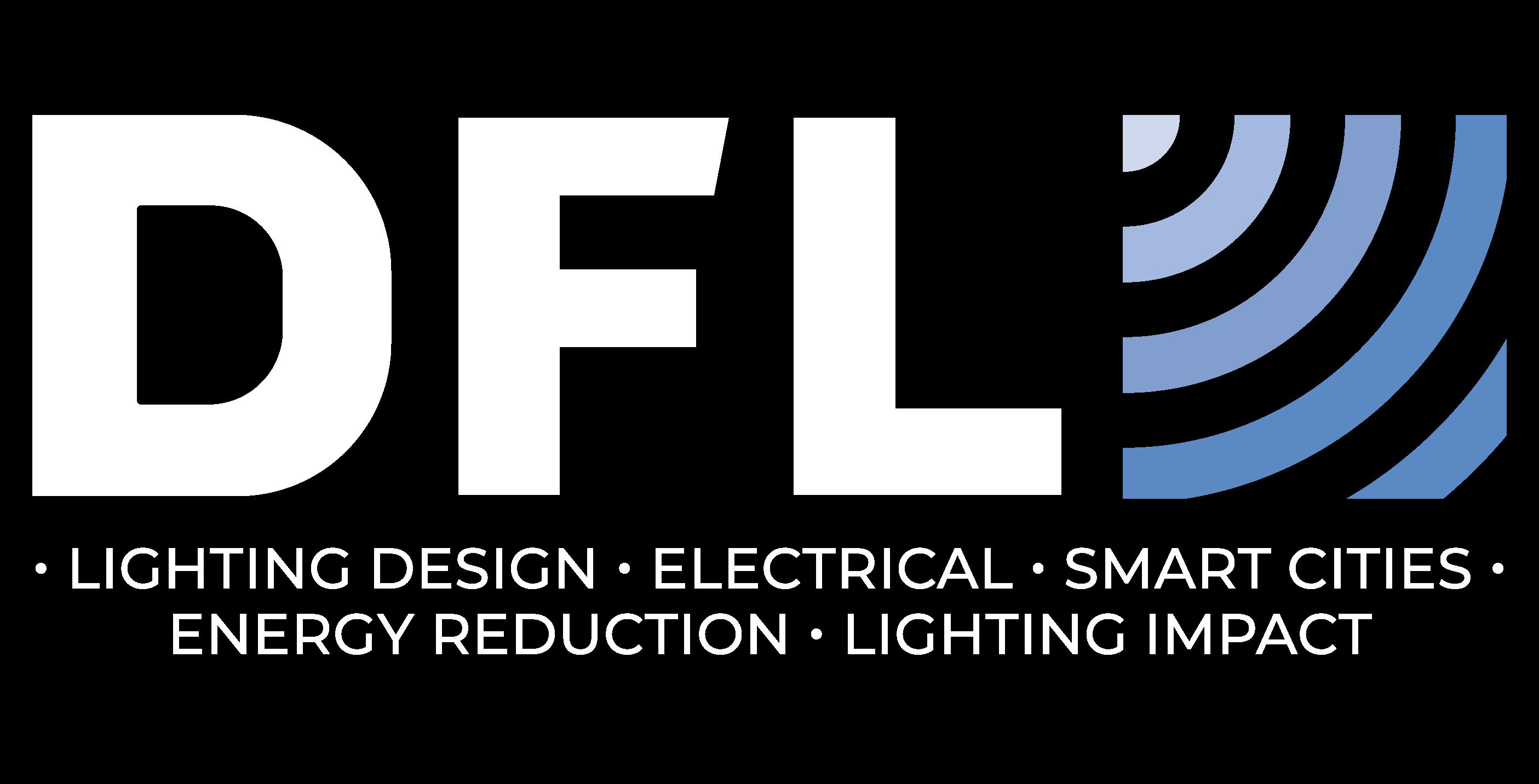
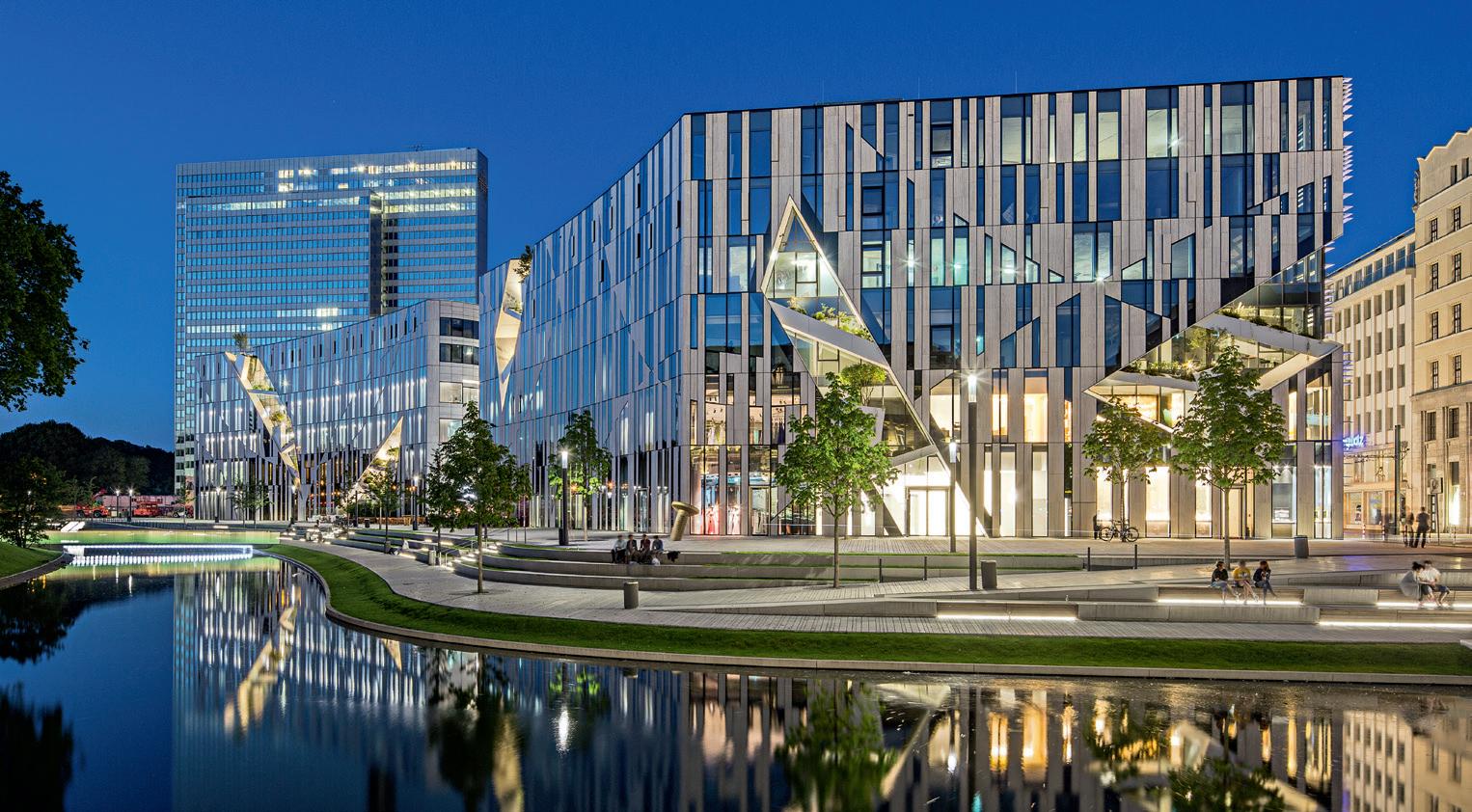


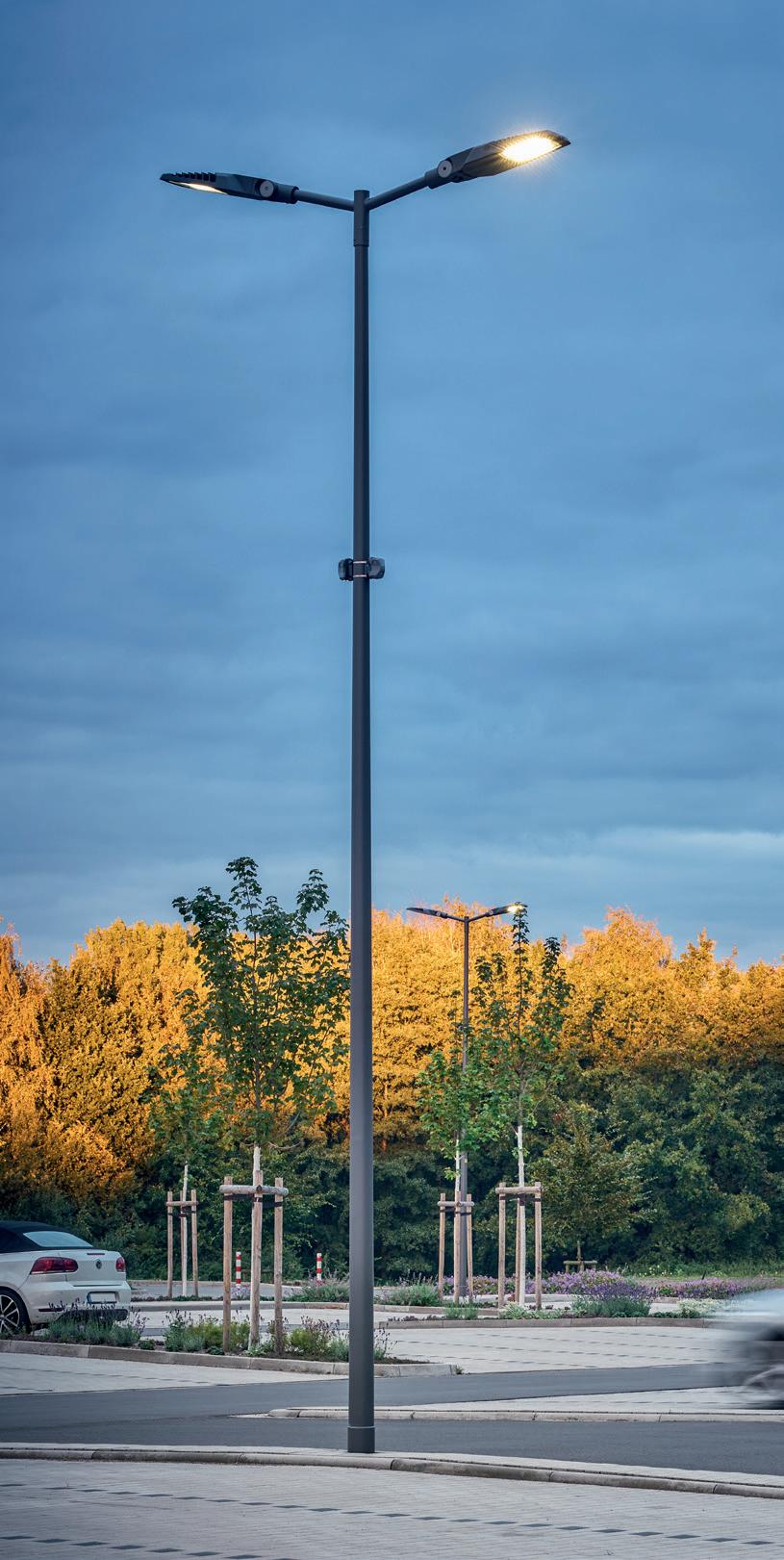
www.theilp.org.uk OCTOBER 2023 LIGHTING JOURNAL Examplary running head • • • • • T HE P OW ER T O M AK E LIGH T WORK OUTDOOR LIGHTING BY TRILUX www.trilux.com/constela DESIGNING OPEN SPACES SUSTAINABLY Inserat_Outdoor_EN_210x148,5.indd 1 04.09.23 16:43
Pedestrian lighting

Figure 5 shows the average after-dark ratings from the solo and accompanied participants. Of the 12 locations, accompanied participants gave very slightly higher ratings in some, indicating a higher feeling of safety compared to solo participants

However, the differences are small and were not suggested to be statistically significant. A similar trivial difference was found when comparing instead the day-dark differences for solo and accompaniedparticipants.
WHAT’S THE QUESTION?
A reassurance survey might ask: ‘how safe doyouthinkthisstreetis?’.Oneproblemis that ‘safe’ might be interpreted differently bydifferentrespondents.
They might, for example, assume it referstotheriskofbeinginvolvedinacar crash. It is therefore good practice to use multiple questions and construct an impression of the benefit of road lighting fromresponsestoall.
Doing so gives a more reliable measure of the latent construct being investigated (in this case, reassurance) than just using asinglequestion.
In the field study, Shahab therefore used two additional questions: ‘I would rather avoid this street if I could.’ And: ‘How anxious do you feel when walking downthisstreet?’.
As seen in figure 6, the question influences the evaluation. Participants tend to evaluate a street as being slightly safer when asked: ‘How anxious do you feelwhenwalkingdownthisstreet?’than when asked ‘I would rather avoid this streetifIcould’or‘Howsafedoyouthink thisstreetis?’.
The choice of question can also influence the relative safety ranking of streets. For example, when asked, ‘How safe do you think this street is?, test location R11 was rated to be slightly less safe than location R8, but this ranking was reversed when the two alternative questionswereasked.
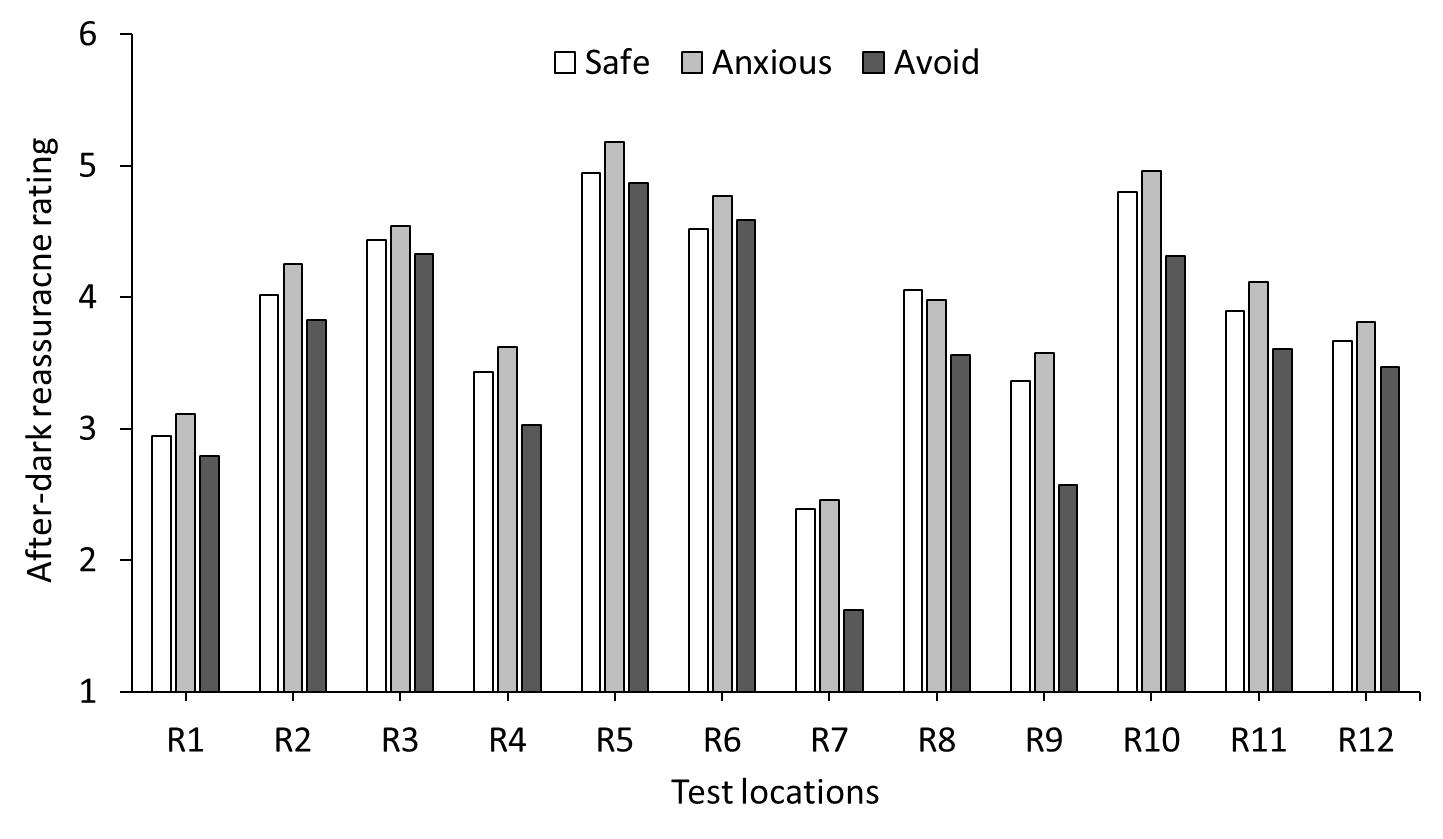
Note also that responses to the avoid question tend to indicate the lowest feeling of safety while the anxious question tends to indicate the highest levelofsafety.Thesedifferencesaresmall but can be sufficient to change the outcomeofastatisticalanalysisandhencethe
conclusionsdrawnfromanexperiment.
We therefore measure reassurance through multiple questions, and in ongoing work are using principal components analysis to generate a composite ratingofreassurance.
SUMMARY
It is easy to measure pedestrian reassurance–anyonecandrawupaquestionnaire. But it is not easy to measure reassurance with minimal bias so that the findings are robust.

As a PhD student, Shahab’s focus is as much about questioning how reassuranceismeasuredasitisthedegreetowhich roadlightingenhancesreassurance.
The results from this field study show that higher illuminance leads to higher

reassurance and a reduction in the differences between the levels of reassurance reportedbymalesandfemales.
The results also show that evaluations by solo and accompanied participants lead to similar conclusions about the effectiveness of lighting, and that the choice of question can change the outcomeofanalysis.
Shahab Gorjimahlabani is a PhD student in the School of Architecture at the University of Sheffield. Dr Jim Uttley BSc, PGDip, PhD is lecturer in architectural science and Professor Steve Fotios PhD BEng(Hons), PGCE, FHEA, FSLL, MILP is professor of lighting and visual perception at the University of Sheffield
C.‘Impact of public lighting on pedestrians’ perception of safety and well-being’. Safety Science 2015; 78: 142-148; Portnov B A, Fotios S, Saad R, Kliger D.‘Establishing optimal illuminance for pedestrian reassurance using segmented regression’. Lighting Research and Technology 2022; 14771535221080649 [3] Fotios S, Castleton H.‘Specifying enough light to feel reassured on pedestrian footpaths’. Leukos 2016; 12(4); 235-243. [4] Foster C, Hillsdon M, Thorogood M. ‘Environmental perceptions and walking in English adults’. Journal of Epidemiology & Community Health 2004; 58(11): 924-8; Gover A R, Tomsich E A, Jennings W G, Higgins G E. ‘An exploratory study on perceptions of safety, fear of crime, and victimization experiences among faculty and staff at an urban university: A focus on gender’. Criminal Justice Studies 2011; 24(1): 37-55. [5] Fotios S, Uttley J, Gorjimahlabani S. ‘Extending observations of ambient light level and active travel to explore age and gender differences in reassurance’. Lighting Research and Technology 2022. First posted online on 20 June, 2022 as doi.org/10.1177/14771535221080657 [6] Menendez E. ‘Government vows £45 million fund for safer streets including lighting and CCTV’. Metro. 15 March 2021. https://metro.co.uk/2021/03/15/ministers-vow-45m-fund-for-safer-streets-including-lighting-and-cctv-14249940/
OCTOBER 2023 LIGHTING JOURNAL www.theilp.org.uk
16
[1] CIE 236:2019.‘Lighting for Pedestrians:A Summary of Empirical Data’. Commission Internationale De L’Éclairage 2019,Vienna.
[2] Boyce P R, Eklund N H, Hamilton B J, Bruno L D.‘Perceptions of safety at night in different lighting conditions’. Lighting Research and Technology 2000; 32(2); 79-91; Fotios S, Monteiro A L, Uttley J.‘Evaluation of pedestrian reassurance gained by higher illuminances in residential streets using the day-dark approach’. Lighting Research and Technology 2019; 51(4); 557-575; Peña-García A, Hurtado A,Aguilar-Luzón M
[7] Schulman A I. ‘Asch conformity studies: Conformity to the experimenter and/or to the group?’. Sociometry 1967; 30(1); 26-40.
Figure 5. Average after-dark reassurance ratings in the 12 test locations for the solo and accompanied evaluations separately
Figure 6. Average after-dark rating for each of the three questions in the 12 test locations (safe = ‘How safe do you think this street is?’, anxious = ‘How anxious do you feel when walking down this street?’, avoid = ‘I would rather avoid this street if I could.’)
Do your staff have career progression?

Government backed apprenticeships are a recognised way of enhancing skills and building capability into your organisation. They keep staff motivated and engaged for the long term, while developing their skills over a long period with both classroom and practical on site training. While new staff can undertake a Level 2 apprenticeship,

qualifying and registered HERS staff can start on a Level 3 apprenticeship.

The Highway Electrical Apprenticeship gives your staff the step up they require to support our industry & become the leaders of tomorrow.
To find out more visit www.electricaltesting.co.uk/apprenticeships


PICTURE PERFECT
LightingtheV&A’snewPhotographyCentre,includingitswalk-inCamera Obscura,createdawholerangeoflightingchallengesforMichaelGrubb Studio.Buttheresulthasdefinitelybeenworthallthetestingandprototyping
The Victoria & Albert Museum’s photographic collections in London’s South Kensington are among the oldest in the world. In fact, the V&A was the first museum even to collect photographs, beginning in the 1850s when photography was still very muchinitsinfancy.
The collection was significantly expanded in 2017 when the Royal Photographic Society Collection was transferred to the V&A.This,inturn,promptedthemuseum to develop a new Photography Centre, which is now the largest space in the UK dedicated to a permanent photography collection.

The collection comprises more than a million objects related to the history of photography,includingphotographs,negatives, cameras, technical equipment, books,periodicals,andarchivalmaterial.
The centre itself is located across seven galleries. It showcases objects from the beginnings of photography alongside cutting-edge new commissions as well as housingawalk-inCameraObscura.
With architects Gibson Thornley leading the design of the new centre, Michael Grubb Studio was appointed to createthelightingdesignforgalleries95to 99,includingtheCameraObscura,whichis housedinGallery95.
The practice had worked with the V&A on a number of projects previously but, explains founder Michael Grubb, in any project like this – in such an old and historic building (which dates back to 1852) –youhavetoacceptthatitisnotgoingtobea quick‘inandout’-typejob.
‘We’dbeendoingquitealotofworkwith theV&Aanyway,mostlytemporaryexhibitions, over the past five or 10 years; so we knew the team well,’ he tells Lighting Journal
‘There are a lot of structural and engineering surveys going on and, as well as architectural team, you’re working with a big in-house team. So, there is always a lot

OCTOBER 2023 LIGHTING JOURNAL 18
ofco-ordinationandcollaboration.
‘Furthermore, we knew there was always going to need to be a lot of prototyping and testing, both at our studio and on site. To make a space feel really clean, simple and minimal – to make it seem effortless – actually takes a ridiculous amount of time and effort, especially on somethingasimportantasthis.
‘Afterall,thesesortsofprojectsareonce in a generation; they’re not looking to do these galleries again for a very, very long time. So it is how do you create something that is new, engaging and exciting but remainstimeless?’Michaeladds.
The lighting design therefore needed to besensitiveto,andinkeepingwith,therich historic architectural fabric of the museum, with each gallery requiring a different approach to suit the needs and useofthespace.
CAMERA OBSCURA CHALLENGES
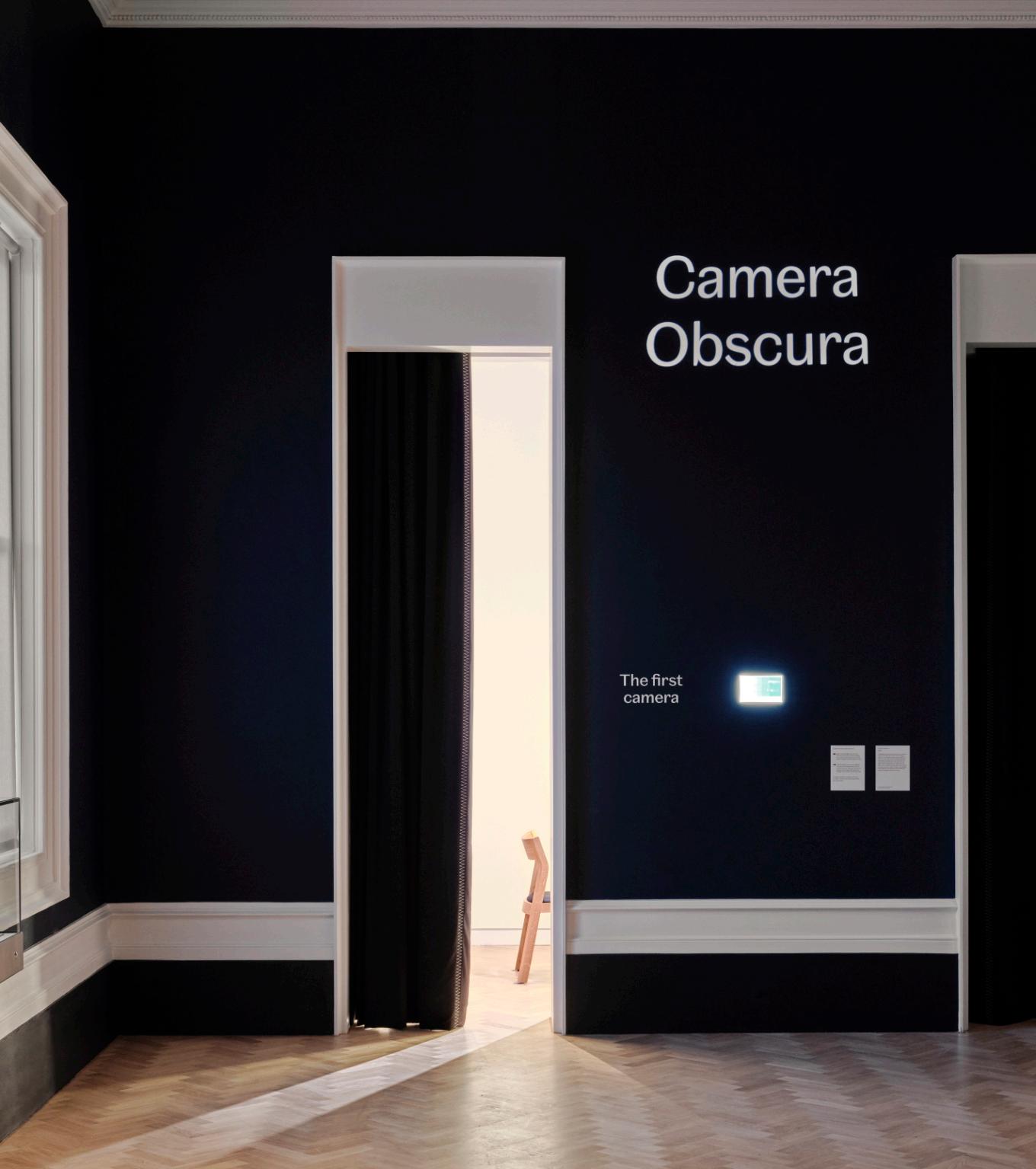
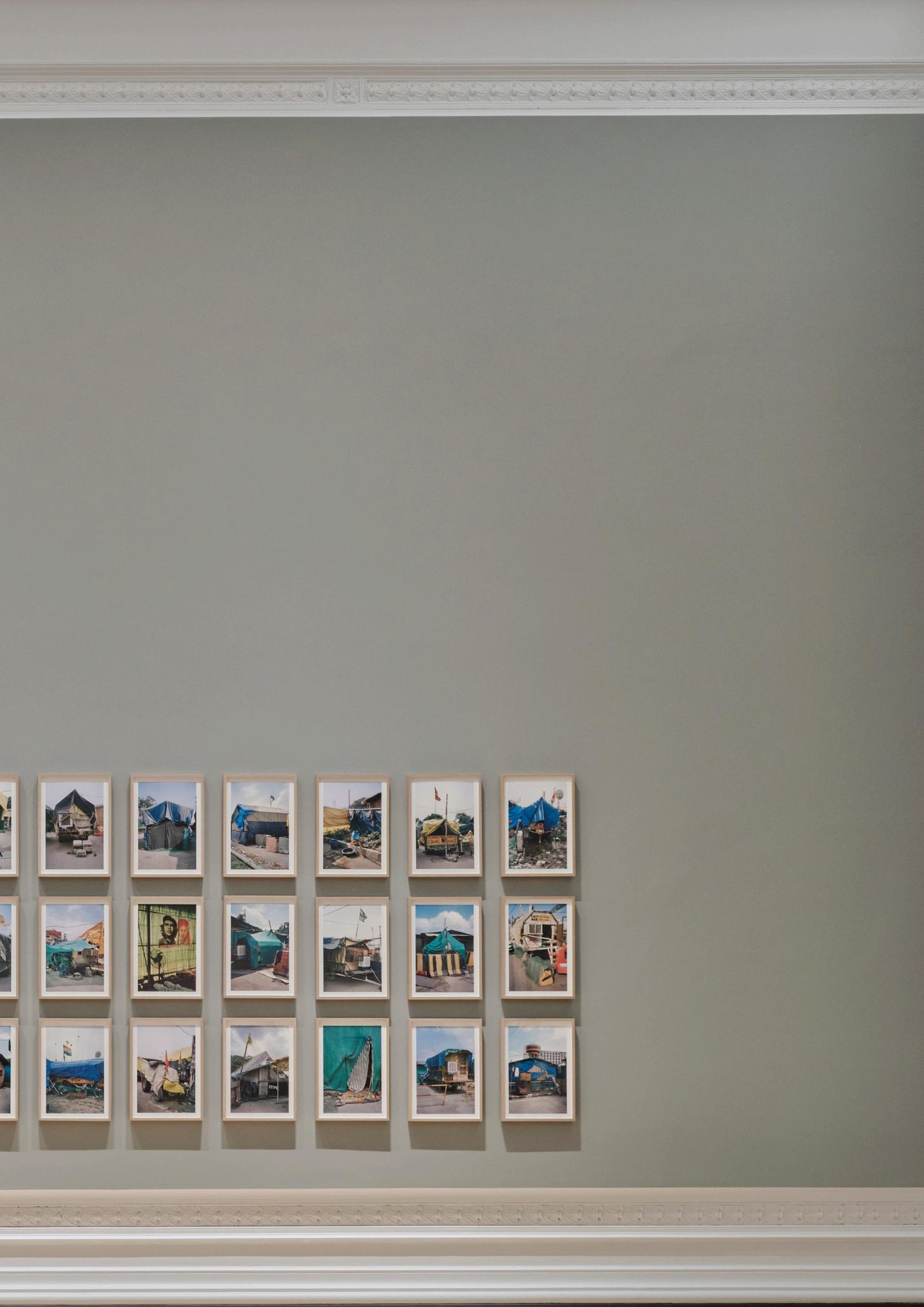
Taking Gallery 95 first, this needed appropriate lighting to operate and view the Camera Obscura, and posed a range of not inconsiderable challenges when it came to thelighting.Carefulconsiderationwasalso necessarytoensuretherewasnolightspill ontotheadjacentlight-sensitiveGallery94 tapestries and Gallery 95 artefacts, as Michaelexplains.
‘WiththeCameraObscura,you’retrying to explain how cameras and lenses work, how light works, in fact. Photography essentiallyislight;that’swhatyou’redoing,
you’re letting light in through a lens and capturingit,’hesays.
‘One of the biggest problems, first of all, wasthenatureofwherethesegalleriesare. They’re right at the end of the building. So you’ve got corridors, different levels of daylight, running throughout and the eyes of visitors will have been constantly adaptingastheywalkthrough.
‘Within the Photography Centre, the Camera Obscura is the first space; it is the space that sets the tone. Yet for it to work really well, ideally you’d want to flood that space and person in light. Which means you’reblindingthem!
‘Thedangerisyou’retakingpeoplefrom a relatively controlled lit environment in terms of levels and then putting them into a space – which you don’t anticipate them being in for more than a few minutes –where, if you’re not careful, you can completely mess up their eyes. And then you’rethrowingthemintotheexhibition.
www.theilp.org.uk OCTOBER 2023 LIGHTING JOURNAL
19
Museum lighting
The V&A Photography Centre's Camera Obscura and (below) Gallery 97. All photography by Thomas Adank
Museum lighting
‘So, naturally, there was a lot of dialogue anddiscussionabouthowweweregoingto do this and then loads of experimentation, testing and prototyping right through. It was about trying to find that balance between the whole experience and its purpose being realised. It was a huge team effort,’Michaelemphasises.
‘One of the things you need for the Camera Obscura to work really well is a huge amount of light on the face. But the problemwithlightingafaceisthattheeyes of course are connected to the face. We could get a really sharp, amazing image in the black room but it was so bright the person would have to shut their eyes. In fact, even when you shut your eyes you could still see the light through your eyelids;so,clearly,thatwasnotasolution.
‘Itwas,dowedimitup?Howdowegive

people something to look at? How do we protectpeoplebutalsogivethemthemaximum impact? At one point we were looking at having very bright sources from high level coming in. But that created lots of shadow and an eerie image once it was upside down in the space. So, then we looked at using much softer white light, a bit like being in a photo booth,’ Michael continues.
‘The other problem we had was the height of the space. Because people are different heights and so sit differently in the area you’re trying to light, you can’t be overlyprecise.Weendedupgoingwiththe brightest, softest light we felt we could use but in the most discreet yet also flattest positionwecouldgetawaywith.So,everything was always a slight compromise, to getthemaximumeffect.
‘Itwasverymuchaquestionoftweaking and playing with it all the way through. Oncewegotitright,thecleannessofit,and it felt really sharp, it all just sort of fell into place. But it was a question of constant balancing,prototypingandadjusting.Once itdidwork,however,wefeltreallysatisfied withit,’Michaeladds.
FLEXIBLE TRACK AND SPOT LIGHTING
For the other galleries, Gallery 96 and 97 (withGallery97housingtheParasolFoundation Gallery, which celebrates female photographers) both use more traditional gallery track and spotlighting. These allow for flexibility for event use and to allow for curatedchangesofshowcasedworks.Itwas alsoimportanttobeilluminatingkeyfeatures of these spaces, such as the beautifully renovatedceilingsandcornices.

OCTOBER 2023 LIGHTING JOURNAL www.theilp.org.uk
20
Gallery 98, The Kusuma Gallery

Museum lighting
‘The brief was to get a very clean and sharpfeeltothegalleries,’Michaelexplains.
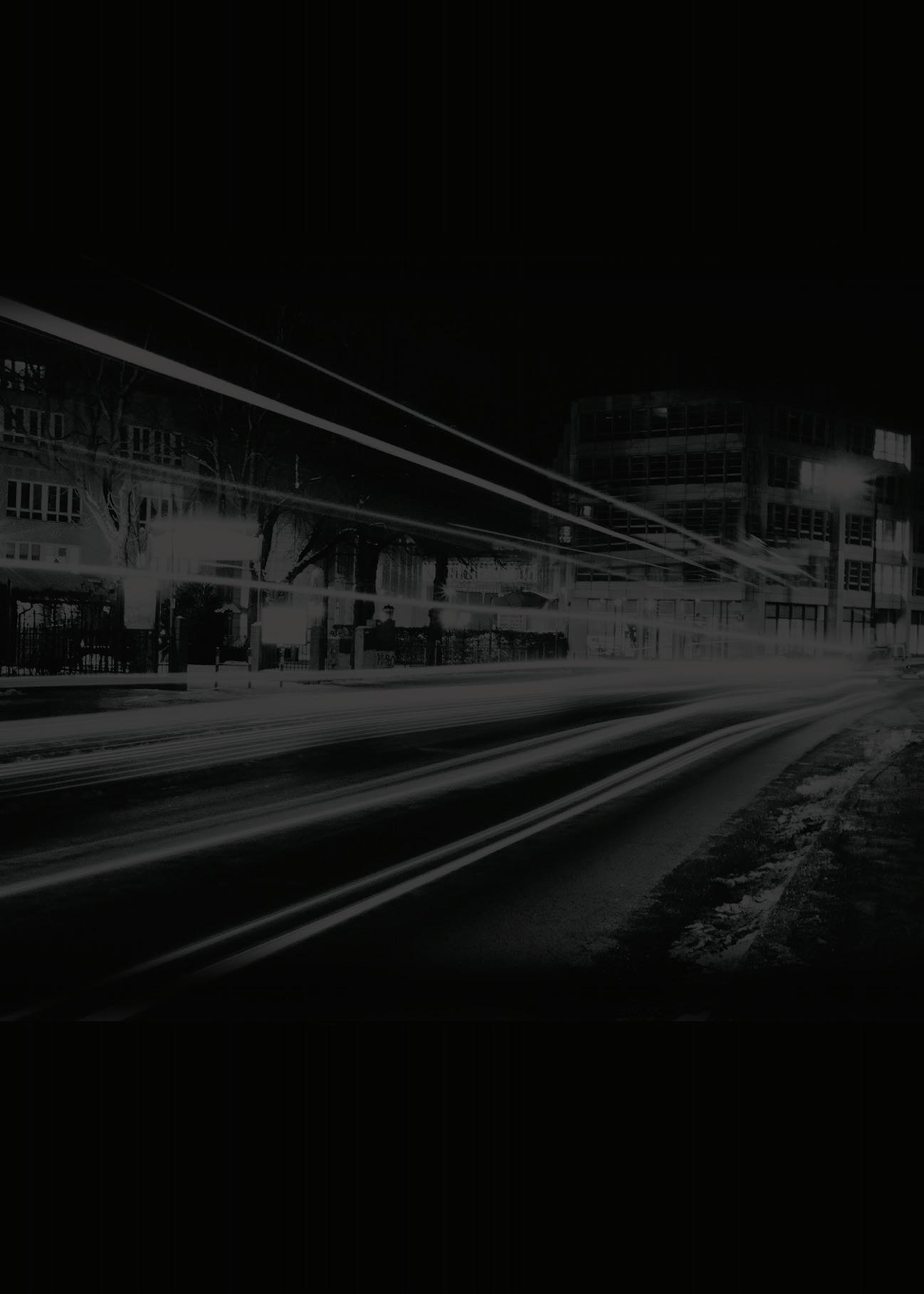
‘The gallery spaces are all obviously of a similarperiodbecauseoftheageofthebuilding. They’re also very airy and roomy; they’re very generous in the wall hangings, thereisalotofspaceallowedforit.
‘In all of them there is a threefold hierarchy. That is the artwork, the photographs or displays, which are obviously the most important thing; that’s what peoplecometolookat.Thentherearethe descriptions and explanatory texts and graphics, which people need to be able to read easily. And then there’s the architectureandthespaceitself.
‘So, the scheme needed to be very clean yetrestrained;sympathetictotheartworks
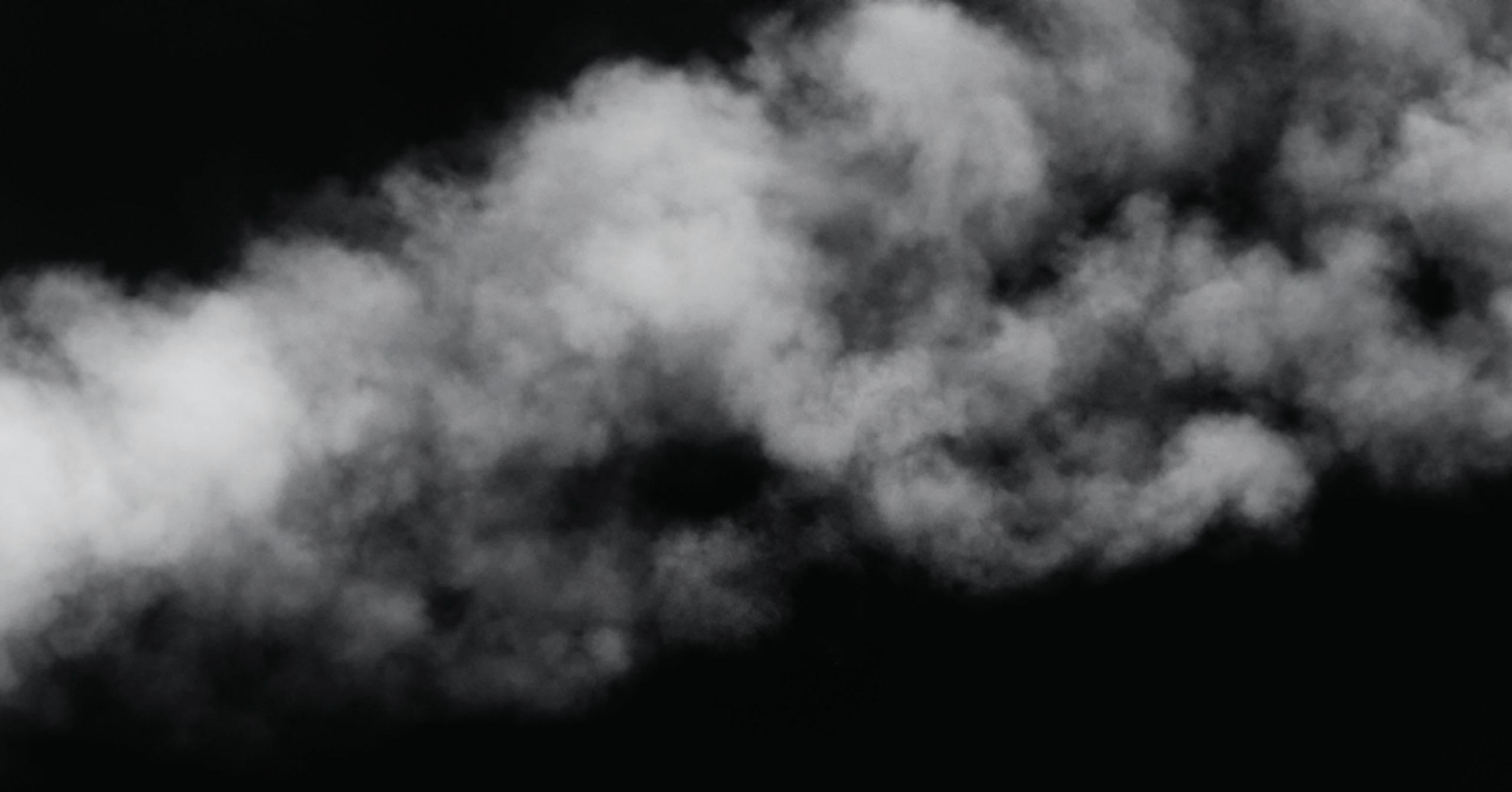
and the texts but also just as a supporting roletothemainevent.Plusofcoursethere is fact the artworks will be rotated. The tracking spots allow for adjustability and flexibility but are also as integrated as we couldpossiblygetthings,’headds.
In Gallery 98, The Kusuma Gallery, whichisdedicatedtophotographicbooks but also has staff working spaces and a central mezzanine, the lighting design had to combine sensitive low levels of functional lighting with decorative and architecturallighting.

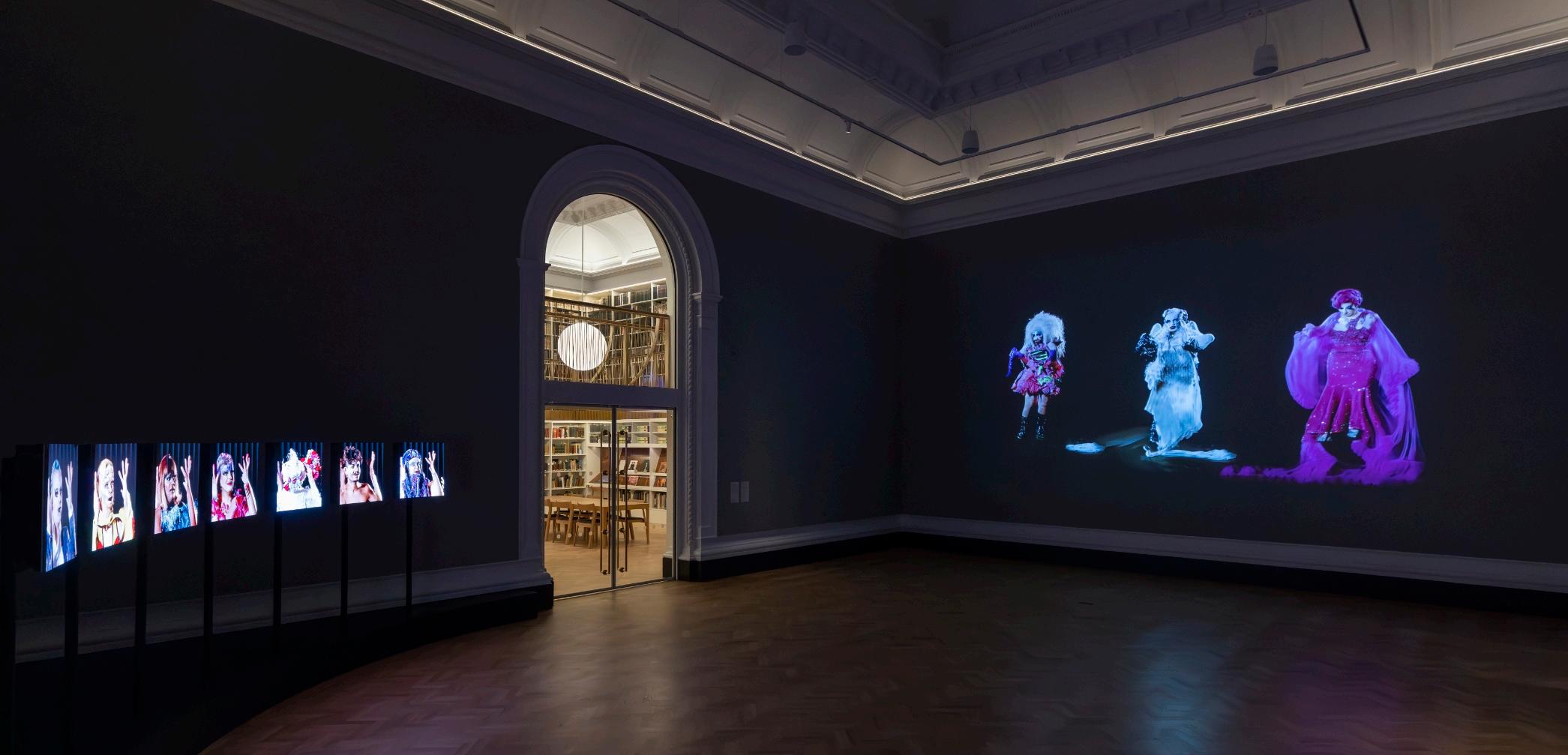
‘The library area was probably the most interesting space in the whole of the projecttolight,’Michaelreflects.
‘It’s a strange space, given that you’re midway through a museum or gallery
experience. One of the biggest challenges was how to create an environment that is protecting all the books and displays but also makes you want to go and read, look andstudy.
‘So, all the light on the books is just 50 lux. We wanted everything to feel light and airy and engaging and fresh, even though there is no natural daylight in there. We focused very much on lighting the walls, ceiling and edges and then havinglocalisedlighting.
‘Itwrapsthespaceinlight.Theyamount ofspilldirectlyontotheobjects–whichare of course very sensitive to light – is very small. It allows that kind of balance to it and, I feel, is really successful. Again, however, that took a huge amount of
OCTOBER 2023 LIGHTING JOURNAL www.theilp.org.uk
22
Gallery 97, The Parasol Foundation Gallery
The Zizi Show, by Jakes Elwes






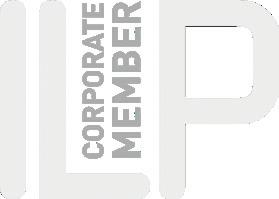
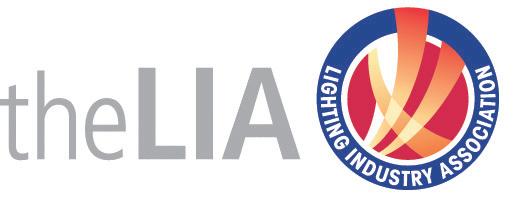
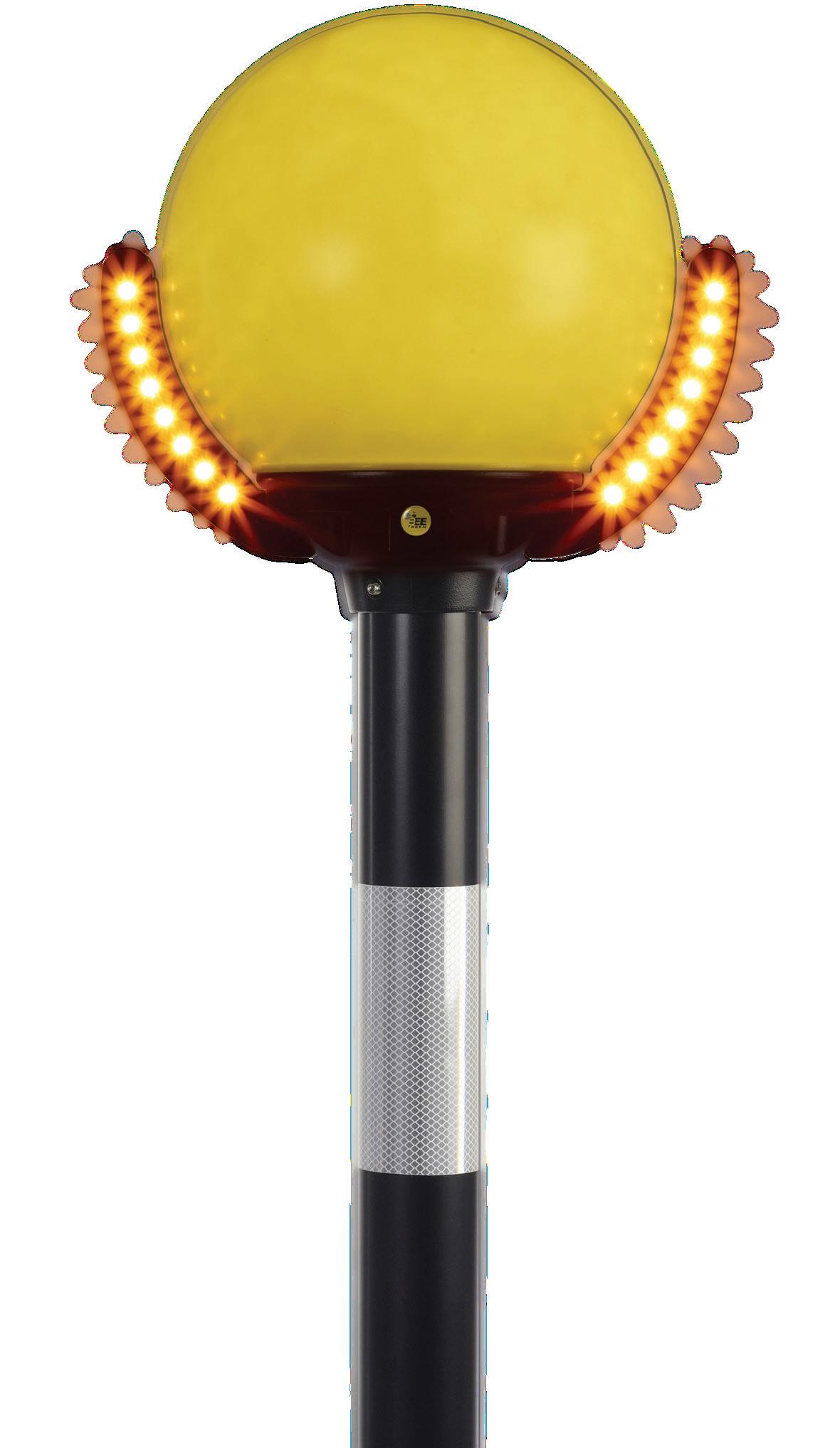


ISO 45001 See us at Portland Traffic are a division of Portland Lighting and are part of the FW Thorpe PLC group of companies, working in partnership with TRT Lighting. visit www.portlandtraffic.co.uk call us on 01922 666725 or email sales@portlandtraffic.co.uk For more information ..be Safe 18-19th October 2023, Stand 138 26th October 2023
Museum lighting
testing and prototyping to get right. ‘The globesthathanginthemiddleoftheroom are, in truth, more decoration than they are function; they generate very little light, and if you were to turn them up to full capacity it would feel extremely unpleasantanduncomfortableontheeye. But we needed something in that space to hold it all together. To get the height right wesimplyusedheliumballoons.Wehada big balloon of that diameter on some string and just raised it until it was in the position that we felt was right. It’s tricks like that behind the scenes that can make allthedifference,’Michaelsays.
Finally, Gallery 99, The Modern Media Gallery, showcases digital and projected artwork and therefore needs very low levels of lighting. Until next March it is also home to the Zizi Show, a ‘deepfake’ drag cabaret that explores the ethical problems that exist in Artificial Intelligence(AI).
Thelightinghere,again,hadtobeflexible, to provide functional lighting for the visitorexperienceaswellasrelatevisually totheothergalleries.
LEARNING POINTS
What, then, in conclusion are Michael’s learning points or reflections from a projectsuchasthis?
‘On a project like this, you always know it’sgoingtotakealotofinvestmentintime and effort, the consultation and the testing,butitstillalwaystakeslongerthan you think. If you ever priced for exactly how long it was going to take, you would neverwinthejob!’Michaeljokes.
‘However,attheendofthedayitisdefinitely worth it. It has to be a thorough process; it does take time. You can’t leave any stones unturned in terms of all the options and thinking and processes. But thatisalsowhatmakesitreallyrewarding asaproject,’headds.
PROJECT CREDITS:
Client:VictoriaandAlbertMuseum, London
Fit-outarchitects:GibsonThornley
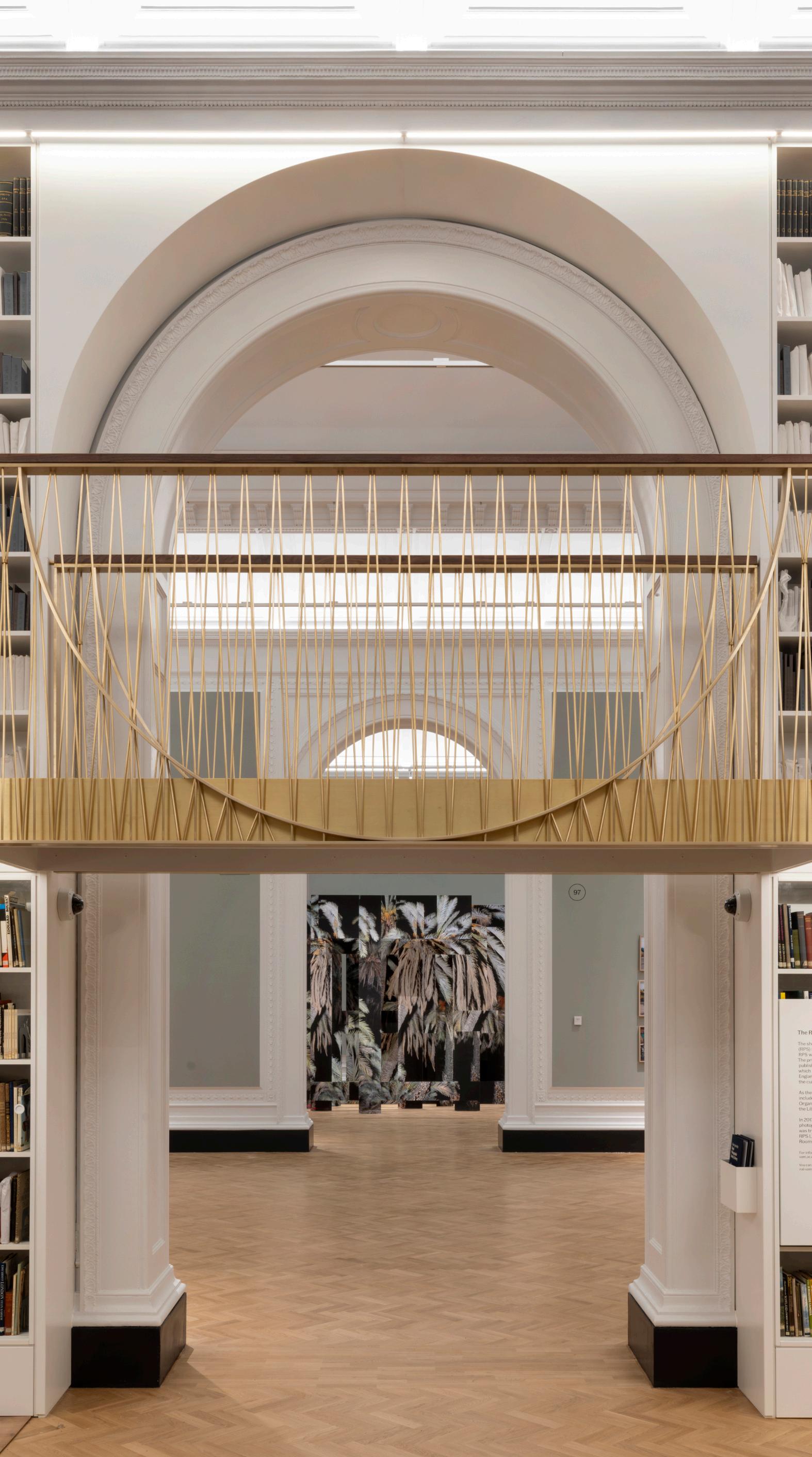
Architects
Basebuildandleadarchitects+
heritageconsultant:Purcell
Lightingdesign:MichaelGrubb Studio
StructuralandM&Econsultants: HarleyHaddow
Projectmanagement:AvisonYoung
Contractor:Quinn
Electricalcontractor:Lowe&Oliver
Quantitysurveyor:CurrieBrown

OCTOBER 2023 LIGHTING JOURNAL www.theilp.org.uk
24
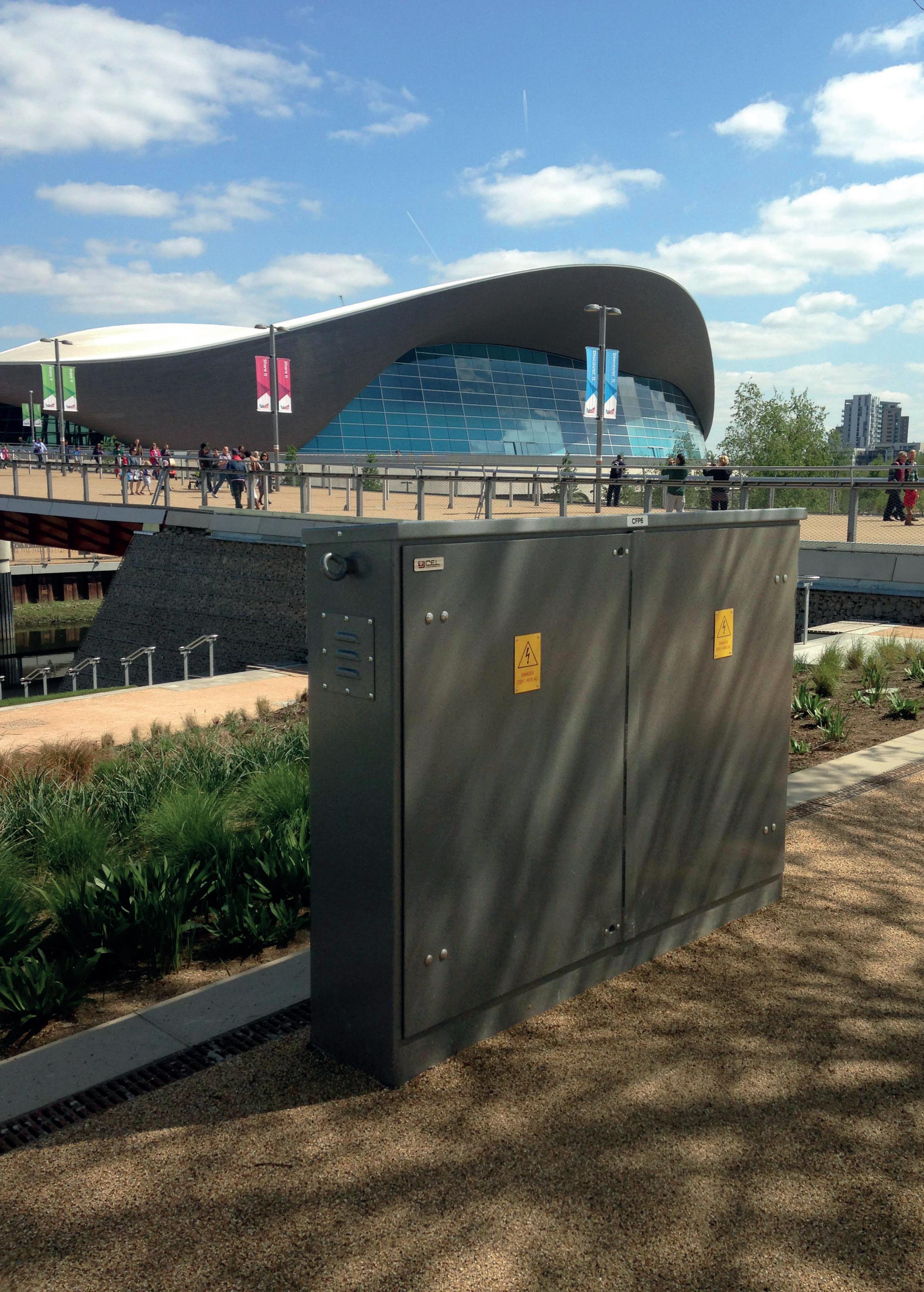




Feeder Pillar Shells Pre-wired Distribution Cabinets EV Supply Cabinets NEW 2023 BROCHURE AVAILABLE Wessex Way, Wincanton Business Park, Wincanton, Somerset, BA9 9RR Company reg no 1855059 England +44 (0)1963 828 400 - info@charlesendirect.com - www.charlesendirect.com

OCTOBER 2023 LIGHTING JOURNAL 26
Examplary running head
Airline lighting
HIGH LIGHTS
Size, weight, reliability and safety and all key considerations when specifying airline lighting. But, increasingly, as a new scheme for Azores Airlines has shown, jetting off on holiday is also about experiencing immersive, colour-changing lighting scenes
 By Pierre Michard
By Pierre Michard
Aerospace is a conservative industry,bydesign.Giventhatsafetyis and always will be paramount, it hastobeofcourse.
But, as we’ve found at STG Aerospace – and through our work with Azores Airlines over the past couple of years – when it comes to thinking about lighting, and the light experience, within airlinesthesedays,thingsarechanging.
There are two ways generally that you dolightingmodificationsonaircraft.First, therearepurelyengineering-drivenmodifications, mostly to the lights that the aircraftneedstofunctionsafelyandeffectively.
For this type of work, safety, reliability and meeting rigorous certification standards are very much top of the list. You also want to save energy, for obvious reasons. Weight is also extremely important, as more weight means more fuel. Space, too, is at a premium. So, you want light products that are as lightweight and ascompactaspossible.
The second aspect where lighting is increasingly coming into play is the passenger experience. The challenge for airlines today, especially in what is now a highly competitive and price-driven marketpostpandemic,istobecreatingan experience, a brand, that passengers will remember, and which will differentiate themfromtheircompetition.
It is nowadays very easy to buy an airlineticket.Yougoonline,therearetonnes of comparison websites; people barely look at the name of the airline, they just click and get their ticket. Travellers’ decisions are often driven almost solely by price and travel time. So, if it is a convenient departure time and affordable (enough),they’llgowiththatairline.
That means, once on board, the airline needs to show passengers who they are and, critically, why you should fly with themagain.
Therearedifferentwaystodothat.You can be like Ryanair with a clear focus on price and being in your face with, in my view, non-refined marketing, messaging and bright colours. If you are an airline such as Qatar Airways, it is all much more subtle, more upmarket, and lighting plays amajorpartinthis.
PASSENGER EXPERIENCE
All of which brings me to our work with Azores Airlines. As a carrier predominantly flying between Lisbon and the Azoresbutalsosomelonger-haulflightsto theUS,theairlinehasinrecentyearsbeing lookingtoreinventitself.
It used to be – and used to be seen by passengers as – very much a state-owned carrier with something of an attitude of ‘we’re just there to transport you; we’re a public-serviceshuttlebusbetweenLisbon andtheAzores’
The Azores, however, has a unique geographic position; there is a reason why there is a big US air base there. It is essentially an aircraft carrier in the middle of theAtlantic.Tourismalsoprovidesincreasingly important revenue, with visitor numbers surging since the pandemic, attracted by the islands’ scenery, rainforests and coastline (of which more in a moment).
With that in mind, Azores Airlines completely rebranded, brought in a more growth-minded team, and in the past few yearshasfocusedonexpandingthetourist market. The aim is that the passenger, as soon as they board the aircraft, already feelstheyareontheirwaytotheirdestination, their holiday; that their stay on the islandhasalreadystarted.
To that end, the colour, material and finishoftheaircraft–whatisknownasthe ‘CMF’ – has been carefully considered. The background music, the food, the whole experience has been made much moreconsistent.
www.theilp.org.uk OCTOBER 2023 LIGHTING JOURNAL
27
Airline lighting
Withthelighting,throughoutthecabin there is now an extensive blue, orange and green palette. Airline interior lighting creates its own set of quite distinct challenges. You have to adapt to the fact that you’ve got a very contained environment to work within and one that, to compound things, has reflective surfaces everywhere. It would be quite rare in a building to have such a narrow andreflectiveenvironment;everythingis veryshinyandglossy.
MANAGING GLARE
We’ve therefore needed to make sure there isn’t any glare, which is one thing that can be quite disturbing to passengers. If you have something reflecting glareatyoufor,say,10hours,itisgoingto be an unpleasant flight. To that end, we usediffusedlensestomakesurethelights disperseappropriately.
We’ve also done a lot of work on the angles to make sure the light gets washed evenly across the space. What you want to avoid is the Christmas tree effect. Especially on long planes (which the A321is),youdon’twant,say,thefifteenth light on the right-hand side to look any different from the one on the left. Consistency is very much key in terms of the finishedfeelandambience.
Perhaps the biggest change however has come back to creating that sense of experience for the passenger as soon as they board. Whatever the airline, for take-off and landing, the lighting will of course be all about safety. The lights will be dimmed, passengers will stay seated, and you want things to feel relaxed so peoplecalmduringtake-off.
Some airlines, too, just want to get boarding done as fast as possible. So, they’ll want bright lights so people can find their way to their seats quickly and easily. Others (like Azores Airlines) prefer a more engaging boarding experience,whichthenfeedsintoandcomplements a more experiential flying experience.

IMMERSIVE SCENES
UsingourliTeMood®product,we’veused thelightingtocreatetwodistinct,immersive, colour plug-and-play configurable lighting scenes: rainforests and the ocean.

The Azores’ rainforest has lots of giant trees, wildlife, greenery, with the islands also known for their hedgerows of blue hydrangeas. The ocean, obviously, is about the amazing beaches, water sports, and boat trips to see whales offshore and otherwildlife.
So, for the ocean scene, once seated on

theaircraftthereisaverysubtleblueand whitelighttravellingalongthecabin.And in your ears, you get the sound of seabirds. The rainforest is similar, but a landversionwithsubtlydifferentcolours and,forthesounds,parrots.
The scenes are set but the cabin crew on each flight can decide to use them in whatever context they wish. For longhaul flights – and Azores Airlines holds the record for the longest commercial flight,LisbontoBogotáinJanuary2021–they can set a range of scenes that can be usedindifferentorders.

We designed the scheme with Azores Airlinesusingamock-upofthecabinthat we created at our headquarters in Wales. We sat down with them to work out the colour schemes they wanted and then implemented them in light. If they want later to update the in-flight experience, perhaps to add a volcanic scene or another natural feature, they now have the ability to do that while keeping the aircraft in service. We can create it and loaditontothecontrolsystem.
To conclude, as I said at the beginning, as an industry, airlines are not generally known for embracing change very quickly. On an aeroplane, you have a lot of constraints around certification, safety, space and weight; you need to be absolutely sure that the lighting is not interfering with anything. So, we wanted to create that immersive experience that was also fully compliant with the aerospace requirements. The hardware is the same;itdoesn'tchangeanythinginterms ofsafety.
Passengers, especially when they’re
heading off on holiday, increasingly now expect an experience that feels like a hotel as soon as they board their airline. Younger passengers especially often like having an opportunity to share their experienceonInstagramorTikTok.They want to have that background to show ‘heylook,I’msomewhereunique’.
And the lighting is a key part of that. Innovative lighting professionals and lightingdesignersrecogniseandembrace the fact that the technology and functionality is now there to allow airlines to be that bit more creative, that bit more immersiveandspecial.
OCTOBER 2023 LIGHTING JOURNAL www.theilp.org.uk
28
This image and below: the Azores Airline 'ocean' lighting scene, with 'rainforests', main image on the previous page
Pierre Michard is director of sales and programmes at STG Aerospace
Kirium Pro S Scaled to fit your needs.
A more sustainable lighting solution designed to meet the needs of both people and the environment. Now available in a range of sizes to suit your project requirements.

OCTOBER 2023 LIGHTING JOURNAL Examplary running head 29 dwwindsor.com
Airport Lighitng
COME FLY
New floodlighting in London Stansted Airport’s short-stay car park has made the site more accessible, safe and energy efficient
 By Nic Paton
By Nic Paton
London’sStanstedAirportestimates that more than 27 million people pass through it every year, jetting offonholidaysorbusiness.
The short-stay parking, which is walkingdistancefromthemainterminal, is of course a key part of that travelling ‘experience’ and has become more accessible,safeandenergyefficientthankstoa recentupgradeofitsfloodlighting.
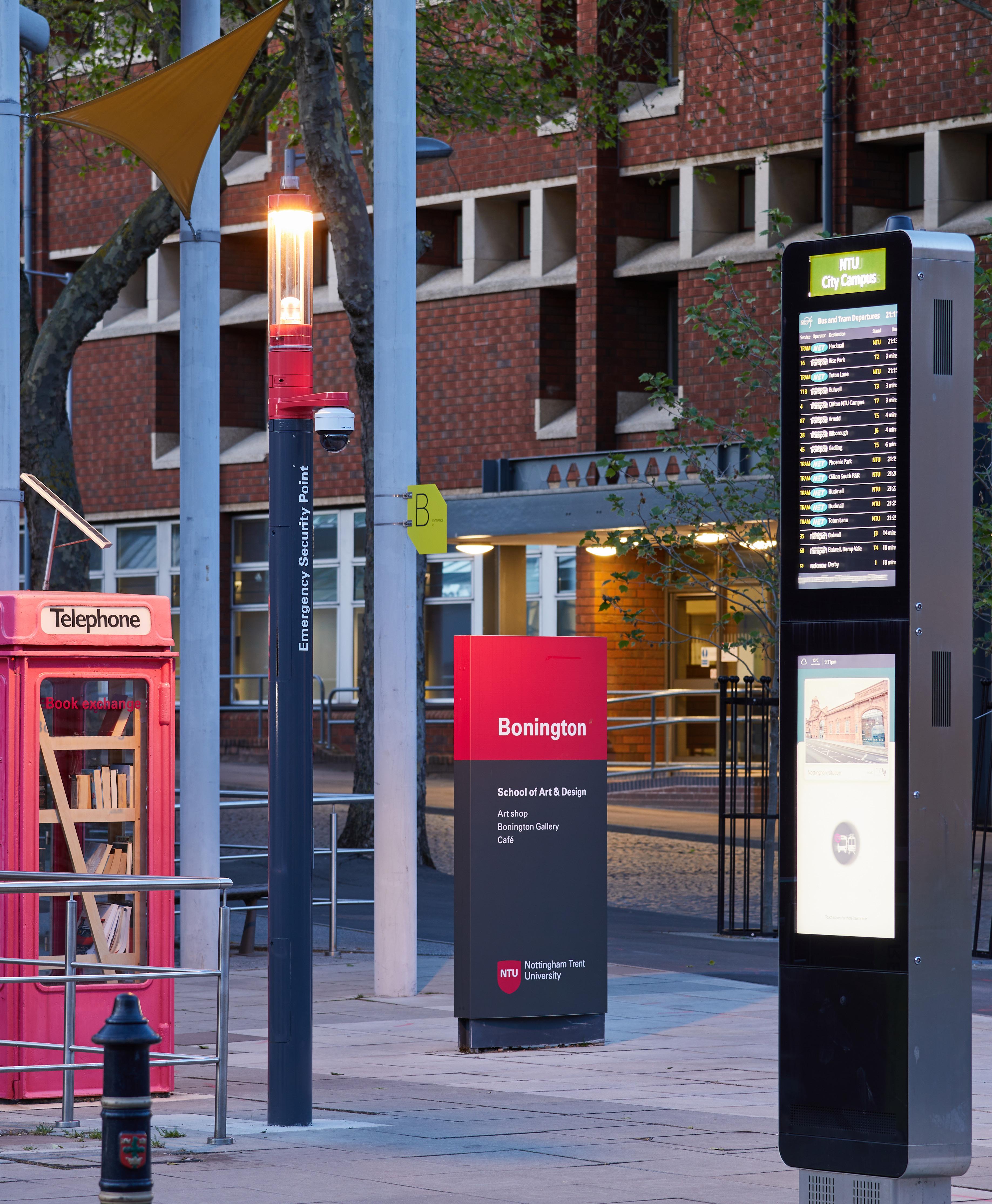
The scheme, carried out over the course of a fortnight last July, saw CU Phosco install 186 of its FL800D floodlights across 32 high masts plus design
andmanufacture32replacementlantern carriages.
‘The project's main objectives were to improvethelightqualityandcolourrenditiontoimproveStansted’scustomerexperience,enhanceStansted'scarparksafety, and increase the energy efficiency of the car park lighting by use of LED lighting andcontrolledbyCMS,’contractsdirector BobGaskelltellsLightingJournal.
DETAILED EVALUATION
The company first went on site to carry out a detailed lighting evaluation. This
included auditing and measuring the lighting levels and then compare these against what was being specified as needed by Stansted Airport.
Obtrusive light and any skyglow was also identified and, where necessary, redesigns undertaken.
‘All the existing lantern carriages were measured and, where required, new lantern carriages to accommodate the new luminaires were manufactured at our Westage factory,’ says Bob.
‘We also modified the electrical supply network to provide a permanent electrical supply to allow the new CMS to function effectively.
‘Once the luminaires were delivered to site, the experienced on-site CU services team ensured that all luminaires were correctly aimed and angled according to the lighting design,’ he adds.
Andtheresult?Theschemeisalready bringing benefits, including some 65% energy savings as a result of the switch to LED.
Airfield engineering manager James Pritchard described himself, and the airport, as being ‘delighted’ with the results, adding that the floodlighting now provides ‘exceptional light quality and energy efficiency, improving safety and reducing our costs’.

OCTOBER 2023 LIGHTING JOURNAL www.theilp.org.uk
30






www.theilp.org.uk Talk to us about making the right connections. Get in touch at logic@urbis-schreder.com digital columns integrate several services to enhance the feeling of security on campus. SMART
SHIPPING SHAPE
Industrialapplicationscanbesomeof the most challenging areas for lighting professionals. Especially when those industrial applications are hazardous and potentially explosiveenvironments.
 By Matthew Sieglitz
By Matthew Sieglitz
Marine environments, too, present the hazardsofcorrosivesaltspray,thepriority of providing excellent illumination for a safe working environment for personnel, the requirement of low energy use, and difficult maintenance requirements.


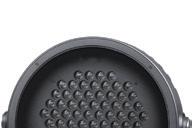

Dealing with all these challenges can go beyond the capabilities of many conventionallightingproducts.


Dialight Corporation, a global market leader for lighting such challenging environments,developsLEDindustriallighting precisely for illuminating such harsh and hazardousindustrialapplications.



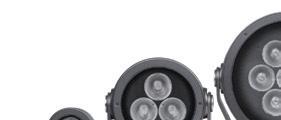


This includes environments with the presence of dust, chemical vapours and volatile organic compounds, high heat, moisture and corrosion, vibration, unpre-







From maintenance costs and energy savings to safety and visibility improvements, switching to LED lighting can make a significant difference for customers operating in challenging or hazardous environments
OCTOBER 2023 LIGHTING JOURNAL 32
anolislighting.com CALUMMA™ OUR NEW FAMILY
dictablepowerconditions,andflammable orexplosiveenvironments.
Workinginpoorlyilluminatedharshand hazardous conditions can lead to injury or even death, costing billions of pounds in medical expenses and lost productivity. The risk of slip, trip and fall accidents can be reduced by as much as 60% with clear illumination, such as LED lighting, where crisp, clear illumination helps to expose accidentrisksbeforetheyhappen.
Given the challenges facing individuals working in these harsh and hazardous environments, another key priority is maintenance.
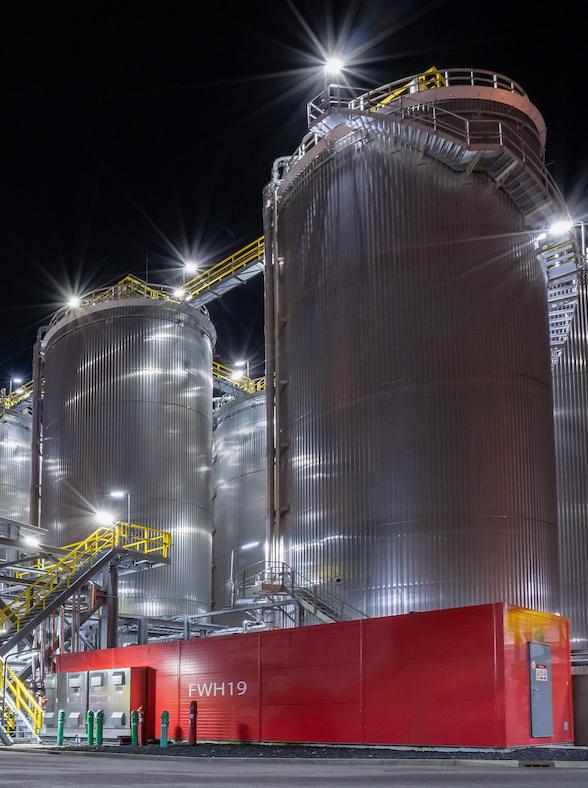
Lighting challenging environments
Examplary running head

www.theilp.org.uk OCTOBER 2023 LIGHTING JOURNAL
33
Lighting challenging environments
Maintenance in industrial applications can be a dangerous and costly process. It can mean customers needing to shut down production lines and machinery and often having to rent costly machinery in order to access fixtures at elevated mounting heights. Customers deserve reassurance that their lighting fixtures will not fail, need to be replaced – or even worse lead to a potential injury. The long lifespan of LED fixtures helps to significantlyreducethedangeroustaskofmaintaining industrial lighting in hard-toreachandhazardouslocations.
Reducing maintenance saves time and money while simultaneously helping to improve employee safety in challenging environments.
MEETING STANDARDS
Lighting standards and requirements differ from application to application and areatoarea.Itisimportanttounderstand notonlytherecommendedlightlevelsfor an area or a task but also the particular hazards of the environment and application.

ATEX and IECEx are certifications of hazardous environments, with the main differencebeingthegeographicallocation where the certification is recognised and/or accepted. ATEX is the European certification, while IECEx is its internationalcounterpart.
It is important that the fixtures speci-
fied for use in these hazardous environments have been designed specifically to meettheneedsandrequirementsofthese certifications.
A recent successful installation in Rotterdam illustrates these points. The Paris-based Rubis Group, a global leader for the storage and distribution of industrial liquid bulk products, recently completed the second phase of a total conversion to LED industrial lighting throughout its state-of-the-art terminal forthestorageofmineraloilproductsand chemicalsinRotterdam.

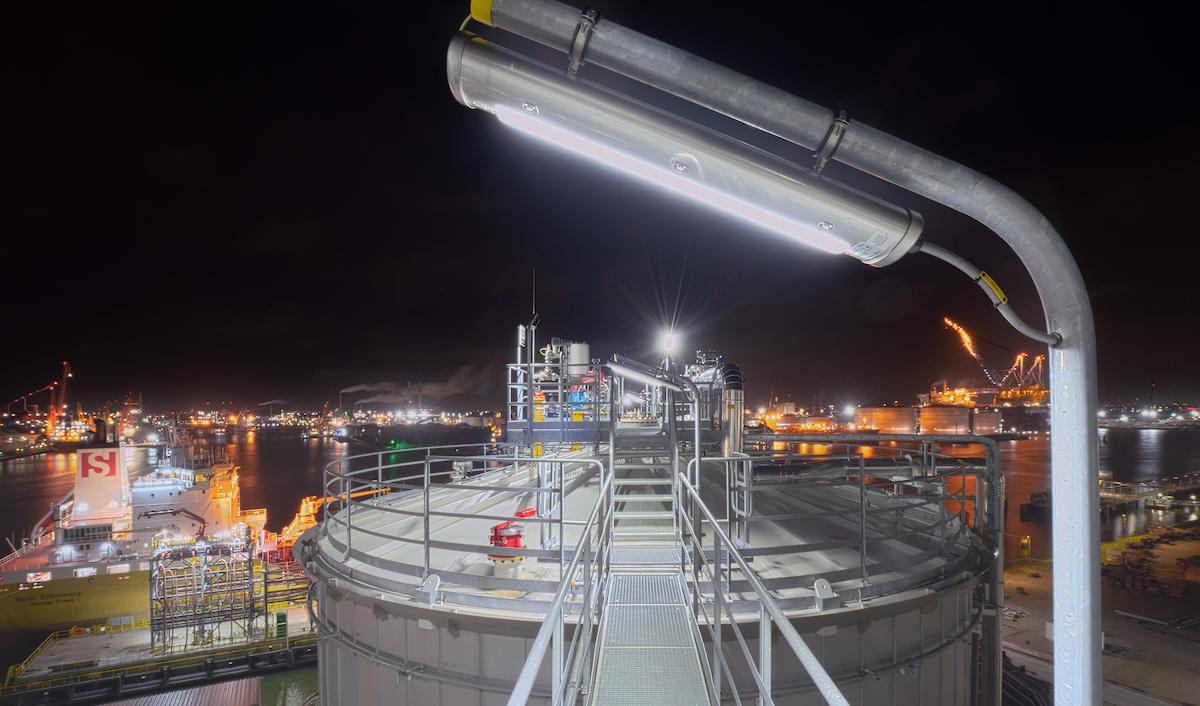
ROTTERDAM TERMINAL
Located in Botlek Chemiehaven, with a gross storage capacity of 277,000 CBT, the Rubis Terminal Rotterdam specialises in the storage and trans-shipment of petrochemicals, especially chemicals and biofuels.
Safety,efficacyandreliability,efficiency and sustainability were high on Rubis Terminal's list of requirements, with both corporate and government mandates requiring energy-efficient and lowemissionoperations.
LEDlightingofcourseofferssignificant
OCTOBER 2023 LIGHTING JOURNAL www.theilp.org.uk
34
Main image on previous page, this page and overleaf: the newly illuminated Rubis Terminal in Rotterdam

Lighting challenging environments
energy savings and reduction in carbon emissions,sowhenRubisconstructedthe new Terminal II at its Rotterdam facility in 2016, the company opted for site-wide transition to LED. Both the original project as well as the Terminal II were completed using Dialight LED lighting fixtures.
For the first phase more than 270 ATEX-certified and non-certified fixtures were installed, replacing the previous failure-prone fluorescent fixtures. The result was reduced energy consumption by 60% with €100,000 annual maintenance savings, all of which has helped to make the new Rubis Terminal II a zeroemissionsfacility.
Becausethefixturesarehighlyresistant to salt-spray corrosion, they also hold up much better to the harsh environment alongtheNorthSeacoast.
Inaddition,theyprovideamuchhigher CRI and quality of light compared with conventional fixtures. This, coupled with strategic light placement to ensure clarity and visibility for workers, enabled the fixtures to create a safe, comfortable and welcoming environment for everyone at thesite.
The project was so successful that the companyhasnowexpandedtheprogramme – the second phase – to retrofit all its existing terminals with new Dialight LED fixtures.
As Stephan Cappon, Rubis Terminal electrical and instrumentation maintenance supervisor, explains: ‘The original Dialight fixtures are still in place and continue to deliver the same quality and performance as the day they were installed.

‘We’ve seen no degradation of the light quality or lumen output and, aside from a

little cleaning now and then, they’ve requiredvirtuallynomaintenance,sothat it only made sense to retrofit Terminal 1 and the entire facility with additional Dialightfittings.’

PHASING OUT OF FLUORESCENT
Another factor, which lent an urgency to theproject,wasthefacttheexistinglights–mostly T8 or tube fluorescents – were extremely prone to failure because of salt sprayandvibration,requiringreplacement everysixtotenmonths.
Manywerealsomountedindifficult-toreach locations, meaning each maintenance episode required scaffold-building, puttingworkersatriskandcostingalotof timeandmoneyinlabour.
‘Withthesaltspray,it’sprettymuchthe worstpossibleconditionsyoucanimagine there for conventional lights,’ Stephan
Capponcontinues.‘Justopeningthefixturetochangeabulbwouldcausetheentire thing to fall completely apart, requiring a completefixturereplacement.’
Further complicating matters, as part of the European Union, the Netherlands has recently banned the production and use of fluorescent TL lighting in an effort to reduce greenhouse gas emissions, which would have made replacing the bulbs and fixtures extremely difficult, if not impossible.
Spurred on by these factors, Rubis recentlycompletedphasetwooftheretrofit at Terminal I, with more than 180 new Dialightfixturesbeinginstalled.
‘Our contractors love that the Dialight fixtures offer various mounting options andflexibility,’Stephansays.“Thefixtures are easy to pre-wire and install on site which makes it much faster and easier, especially considering many areas are toughtoreach.’
Because of improved light output and exposure, Rubis was also able to reduce the number of fixtures needed to illuminate the same space. In many areas now, particularly the truck/train loading station and tank pits, staff report major improvements in visibility, which naturally creates a much safer working environment.
In sum, in some of the world’s most demanding environments making the transition to correctly specified LED lighting can help industrial customer improve business, maintenance, safety andsustainability.
OCTOBER 2023 LIGHTING JOURNAL www.theilp.org.uk
36
Matthew Sieglitz is product marketing manager at Dialight Corporation
Lighting a sensitive area?
Whether you’re lighting an underpass used by the local bat population or a footbridge or staircase in an area of outstanding natural beauty (AONB), Raillight is the solution.
Cost-effective, and quick-to-install Raillight is an engineered lighting solution which can be installed into existing handrails or infrastructure.

Interested? For further information on Raillight contact hello@acrospire.co or visit:
acrospire.co


Lighting challenging environments

SHUTE AND SCORE
Illuminating the 165m-long Shute Shelve Tunnel in Somerset so as to not disturb its delicate populations of bats and spiders meant careful planning, specification and collaboration, including with ecologists
 By Ross Evans
By Ross Evans
Artificial lighting, all ILP members know, plays a crucial role in providing illumination and visibility in challenging environments, especially when natural light sources might be insufficient, inconsistent, or non-existent. These environments can range from underwater to outer space and from extreme weather conditions to confined spaces,suchastunnels.
In addition to the physical structure of the environment, when illuminating such challenging spaces consideration must be given to the inhabitants of the area too, bothhumanandwildlife.
Lighting designs and installations must

also focus on minimising light pollution and light spill and other negative impacts ontheenvironment.
Lighting solutions in challenging environmentsarecontinuallyevolvingtomeet thespecificdemandsofeachsituation.
Thesesolutionsofteninvolvetheuseof advancedtechnologies,durablematerials, energy-efficient designs, and adaptable mounting options to provide reliable illumination in even the most demanding circumstances.
TheadoptionofLEDtechnology,smart controls, and sustainable practices all contribute to creating lighting solutions that are not only functional but also considerate.
OCTOBER 2023 LIGHTING JOURNAL www.theilp.org.uk
38
Examplary running head

















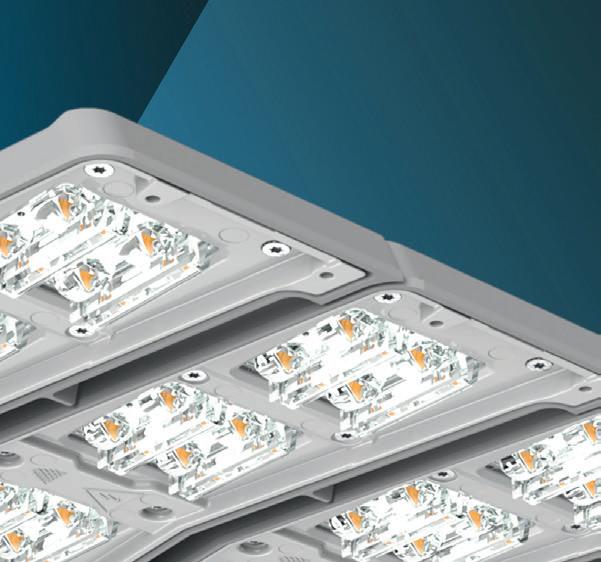


www.theilp.org.uk OCTOBER 2023 LIGHTING JOURNAL
39
Lighting challenging environments

The goal is to provide adequate illumination while using resources efficiently andavoidingharmtothenaturalworld.
PROJECT OVERVIEW
Inthisarticle,I’mgoingtoillustratehowat TRT Lighting we managed all those considerationsoutlinedaboveinthedeliveryofa single project: illuminating the Shute ShelveTunnelinSomerset.
The Cheddar Valley Line, a branch of the Great Western Railway, ran between Witham Junction and Yatton until the Beechingcutsofthelate1960s,atthetime thiswasknownasthe‘StrawberryLine’.
This 10-mile disused railway line has now become a popular route for pedestrians, cyclists and wheelchair/mobility scooterusers.
The pathway winds through the Mendip Hills, embracing the flora and fauna and, at King’s Wood, the mouth of the 165m-long Shute Shelve Tunnel begins to enter the hillside, housing a varietyofbatspeciesandspiders.
When Bristol Water unveiled its ‘Southern Resilience Scheme’, which was a project to install 30km of pipeline underground, it included accessing Shute Shelvetunnel.
As part of the project’s planning conditions, a lighting upgrade was required to illuminate the tunnel’s path during daylight hours to improve visibility for constructionworkersandusers.
In keeping with the rest of the Strawberry Line route and other neighbouring rural areas, which remain unlit, lighting wasnottobeactivatedduringthenight.
PROJECT SOLUTION
TRT Lighting was tasked with producing a highly efficient LED solution for this new installation, while at the same time giving key consideration to the protected bat species that roost and hibernate in the tunnel.
Initially, a site survey was conducted to assess the tunnel and understand the environment and all the mitigating factors.
Thenextstepwastoseekecologyadvice from independent consultants who specialiseintherelevantfield.

Discussions were also undertaken with a number of other interested parties, including the local council and SUSTRANS (the custodians of the NationalCycleNetwork).
A lighting design was then produced based on the use of low-level lighting to minimise the amount of light pollution/ trespassintotheuppertunnelcanopyand lessentheintrusiontowildlife.
Our ‘Via’ bollard was deemed the
perfectchoice,asitisspecificallydesigned to meet lighting guidelines for footpaths and cycle paths and is compliant to BS13201.Awarmwhitecolourtemperature of 3000K was also felt to be the ideal ecologically friendly option, reducing as it didtheamountofbluelightbeingemitted.
Because of a large spacing window of more than 10m, the number of bollards requiredwaskepttoaminimum.Notonly did this reduce costs and installation time but it also meant less infringement on the footprint allowing more space for the users.
The bollard’s dark grey powder-coated finish allowed it to blend in with the cut rock and weathered brick surroundings, and a root-mounted solution allowed the cables to be safely routed underground rather than in conduit along the irregular limestonerockface.

PROJECT CHALLENGES
This project was unique in that Shute ShelveTunnelwasrequiredtobeilluminated during the daytime for the safety of pedestrians and cyclists whilst minimising the upward light and disruption to the roosting bats. When the tunnel is typically notusedatnight,theluminairesweretobe turnedoff.
To overcome this challenge, we created a lighting scheme that reverse-switches the photocells, providing a pattern that is theoppositeofwhatisnormallyrequired.
The main objective was of minimising upward light into the tunnel canopy, wherethebatsroost.
Reflected light from the tunnel sides was minimised using the discreet, switchable downward-performing Via bollard optic, with durable 180o shields fitted to obscure any back-light and redirect the lightontothepathwaywhilstmaintaining excellent uniformity and keeping visibilityataconstantlevel.
Finally, TRT Lighting is proud to say that, with all these complex project factors, the scheme now successfully illuminates Shute Shelve Tunnel during the daytime while protecting the wildlife and without compromising on the users’ safety.
We were also very pleased to work with Mark O’Brien (contracts manager) and his team for Centregreat North Somerset Council, who were tasked with the installation.
OCTOBER 2023 LIGHTING JOURNAL www.theilp.org.uk
40
Ross Evans is managing director of TRT Lighting




RELIABILITY & QUALITY ARE VITAL USING MEAN WELL LED DRIVERS PROVIDES PEACE OF MIND FIND OUT MORE ABOUT OUR PRODUCTS 0118 982 3745 sales@powerled.uk.com www.powerled.uk.com www.theilp.org.uk OCTOBER 2023 LIGHTING JOURNAL Examplary running head 41
VIRTUAL VISUALISATION
By Jack Cunnigham
The emergence of virtual reality (VR)technologycouldrevolutionise the way we light public spaces through the visualisation of potential problems or challenges in real time. This can enable the identificationofissuesthatmayhave gone unforeseen in other lightingsoftware.
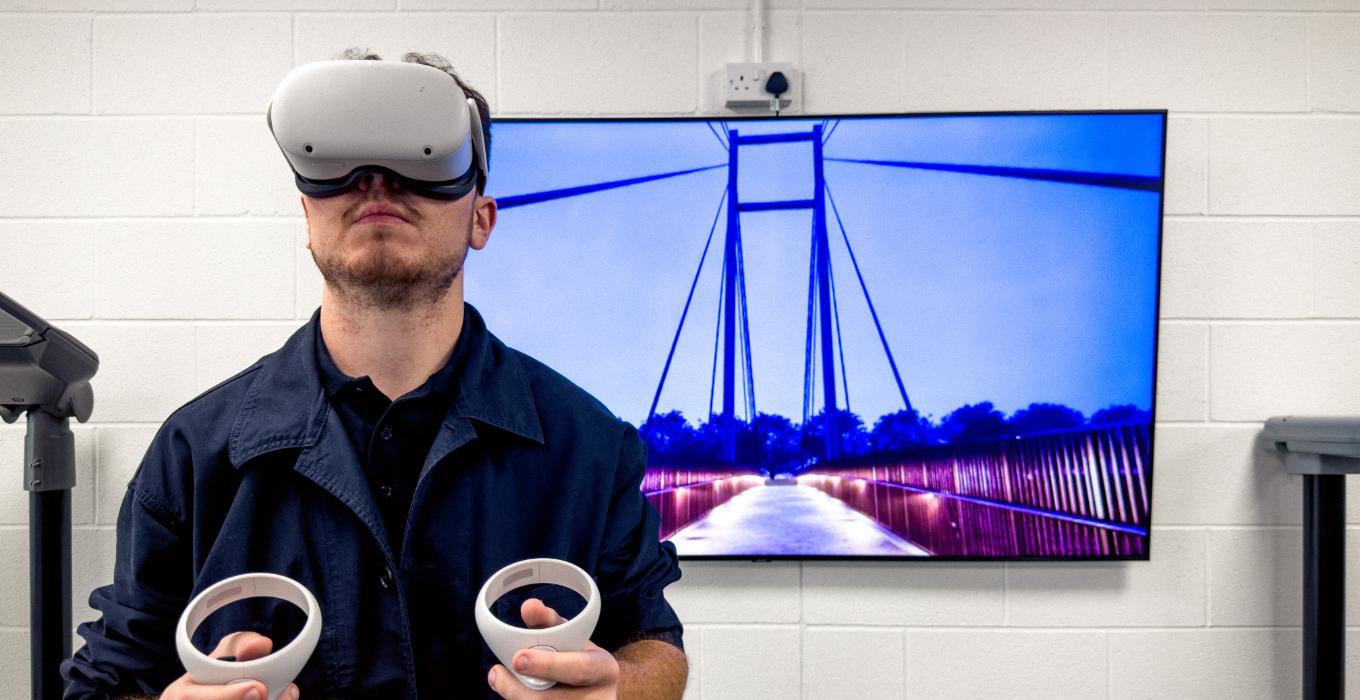
I was recently asked to complete a lighting calculation for a public realm lighting development on behalf of a local authority. This involved illuminating a high-street with static white task lighting, and a dynamic colour-changing lighting element for use in different eventsandemergencysituations.
The initial lighting calculation was produced using the Lighting Reality software. To set the scene, there were eight
lighting columns located throughout the scheme. Each column featured three static white urban lighting luminaires (from our Valinta range) mounted at 8m, along with three RGBW luminaires (again, our Valinta RGBW) mounted belowat7m.
The urban lighting luminaires illuminated the area to C1 (dimmed to C3), whilst the RGBW luminaires provided coloured lighting and projections to enhancethespace.
Each urban lighting luminaire was spaced equally around the column at 120 degrees.TheRGBWluminaires,mounted 1m lower, were offset by 60 degrees as a groupfromtheluminairesabove.
Thiswastopreventthewhitelightfrom being blocked. However, by using virtual reality(VR),wesoonfoundthiswouldnot be enough to achieve the lighting levels andvisualeffectsrequired.
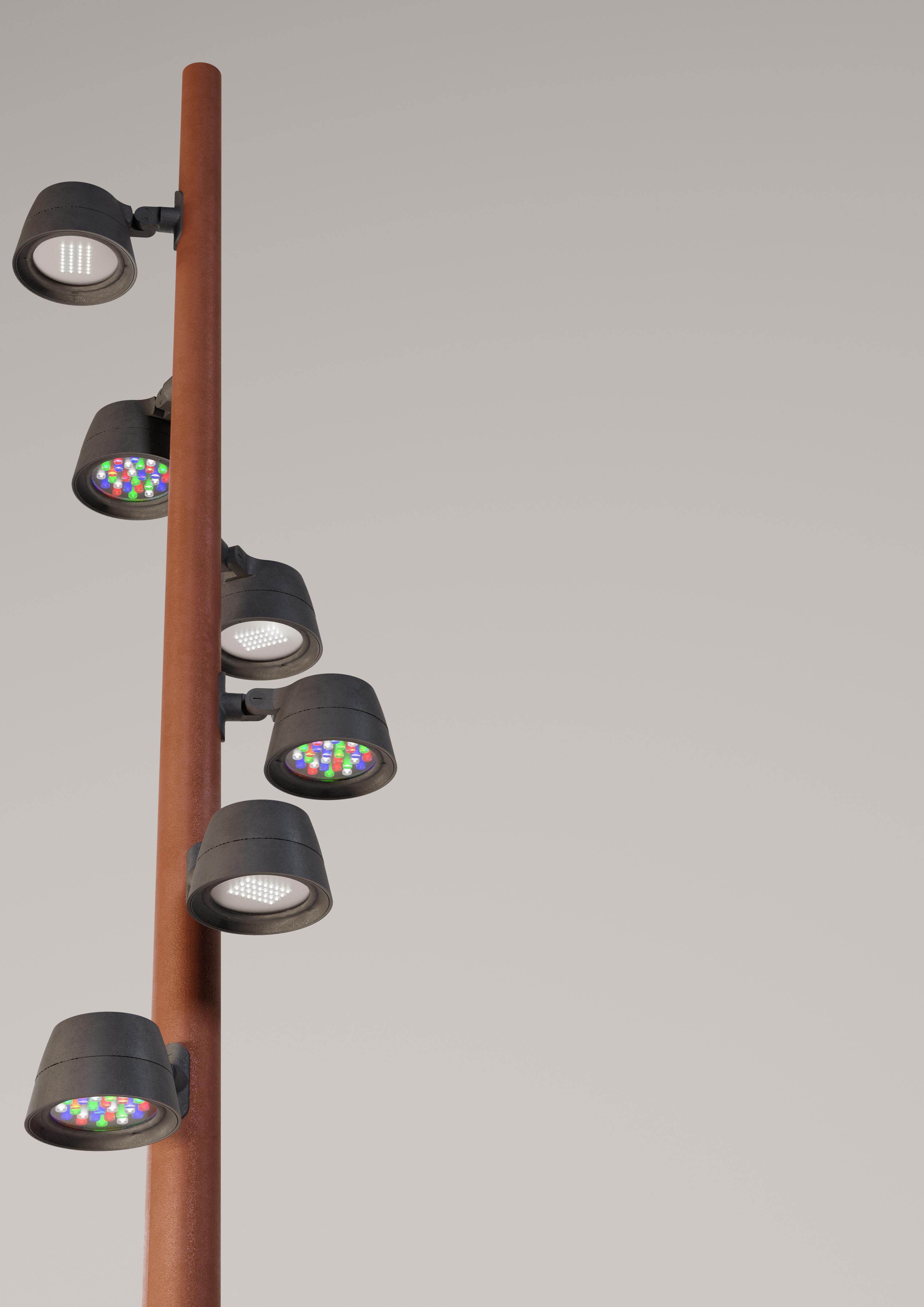
OCTOBER 2023 LIGHTING JOURNAL 42
Virtual reality (VR) visualisation is not new but its ability to visualise and configure colour-change animations, dimming regimes, and a variety of control-based solutions can significantly enhance and streamline the lighting design experience
Jack Cunningham using the VR headset to visualise handrail lighting
EXPERIENCING THE CONCEPT
I had been experimenting with lighting projectswithinavirtualscene–essentially creating an environment that allows the end user to explore an illuminated space beforeitbecomesareality.
This project was therefore the perfect opportunitytotestmyskillsandinvitethe endusertoparticipate.Wehadpreviously presented designs via still images or renders, so the concept of providing a ‘realistic virtual 360-degree experience’ forseveralcustomerswasveryexciting.
To begin, I recreated a basic to-scale replica of the task environment in the 3D software.Iinsertedthe8mcolumns,luminaires, and accurate photometry files into thespecifiedlocations.
This would allow me to understand the scaleoftheproject,thescaleoftheproposed columns, and how the lighting equipment interacts with the space. This was thensettorender.
The 3D software being used is able to accept IES photometry files, meaning the Schréderluminairesbeingplacedintothe scene were being very accurately simulated.
The completed 360-degree render was then loaded into the VR headset, allowing us our first glimpse at how the scheme might actually look in reality. However, what we discovered next was even more valuable.
PICKING UP ISSUES
The VR model seemed to suggest that we werenotachievingthe40%uniformitythat had previously been calculated in Lighting Reality.Thiswasveryevidentwhileviewing the scheme from the perspective of a user ontheground.

It was massively beneficial to discover this issue before the lighting installation began–savingbothusandourclienttime and cost in potentially having to amend theschemeafterinstall.

I revisited the 3D software, where I found that removing the lower RGBW luminaires greatly improved the uniformityacrossthescheme.
ThisledmetoconcludethattheRGBW luminaires, mounted 1m below the static white urban lighting luminaires, were creating a blocking effect despite having a 60-degree offset from the lanterns above. This effect was being replicated virtually on the ground, resulting in a lower uniformitythanrequired.
Toimproveonthis,wetriedrotatingthe lower RGBW luminaires by a further 60 degrees – placing them directly underneaththeurbanwhitelightluminaires.
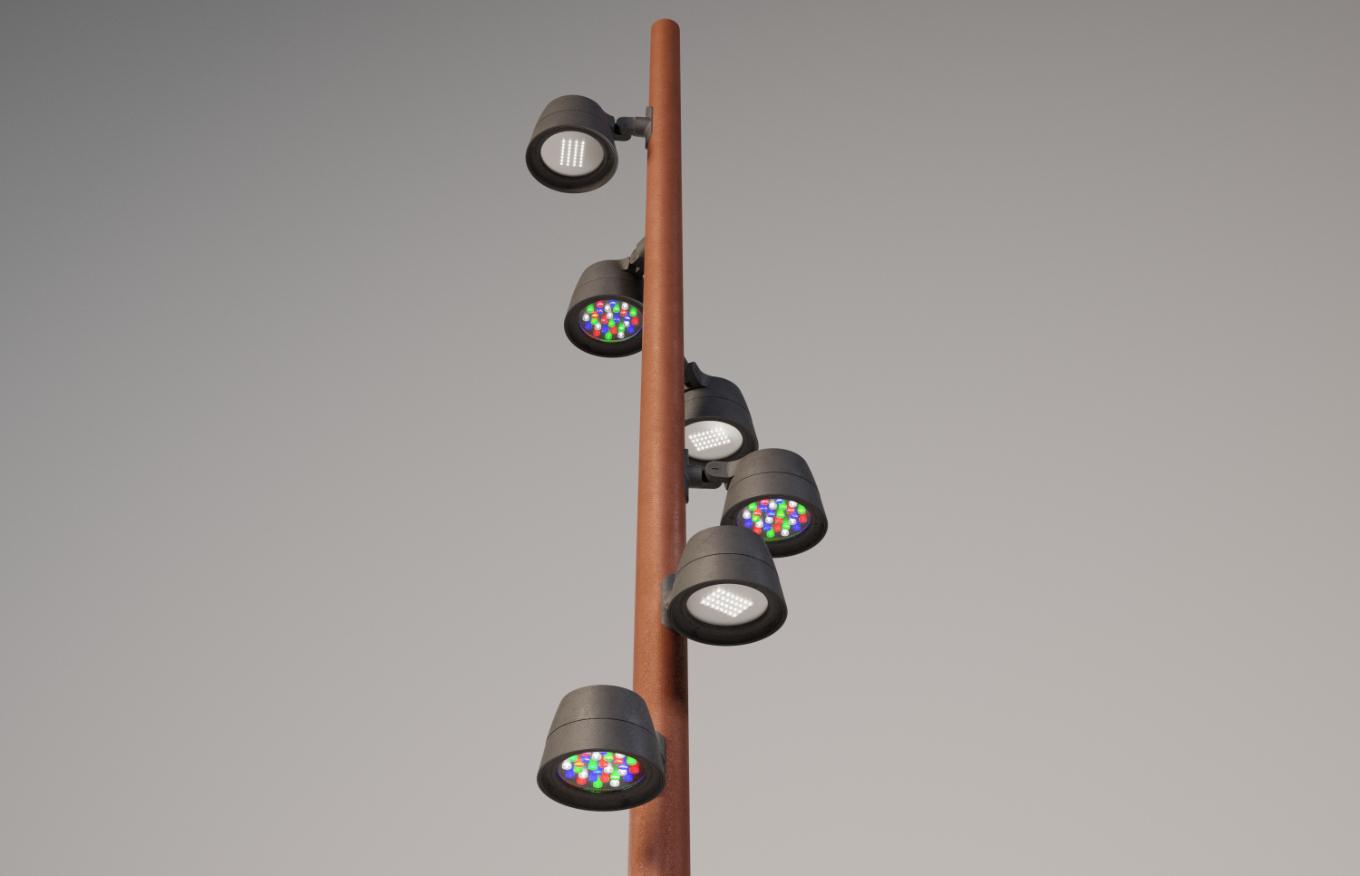
I theorised that this would reduce the blockingeffect,asitwouldonlybecreated

43 Lighting technology LIGHTING JOURNAL OCTOBER 2023 www.theilp.org.uk
A visualisation of a luminaire layout showing (from top) the first, second and third revisions
Lighting technology
by one RGBW luminaire below the white light lantern. I rendered this iteration as another 360-degree image for viewing in VR.
This revision improved on the previous design, where two RGBW luminaires would create a blocking effect either side ofthewhitelightluminaire.Theuniformity within the VR model increased, but I feltitcouldbeimprovedevenfurther.
I therefore conducted a complete redesign of the luminaire layout – spacing luminaires further apart to reduce the blockingeffectasmuchaspossible.
Furthermore, we mounted the luminaires at 0.5m increments with no direct overlap: placing the urban lighting and RGBW luminaires in a staggered spiral arrangement.
Thisstaggeringallowedtheurbanluminaires above and below the RGBW luminaires to override the blocking effect of saidluminaires60degreestotherightand 0.5mlower.
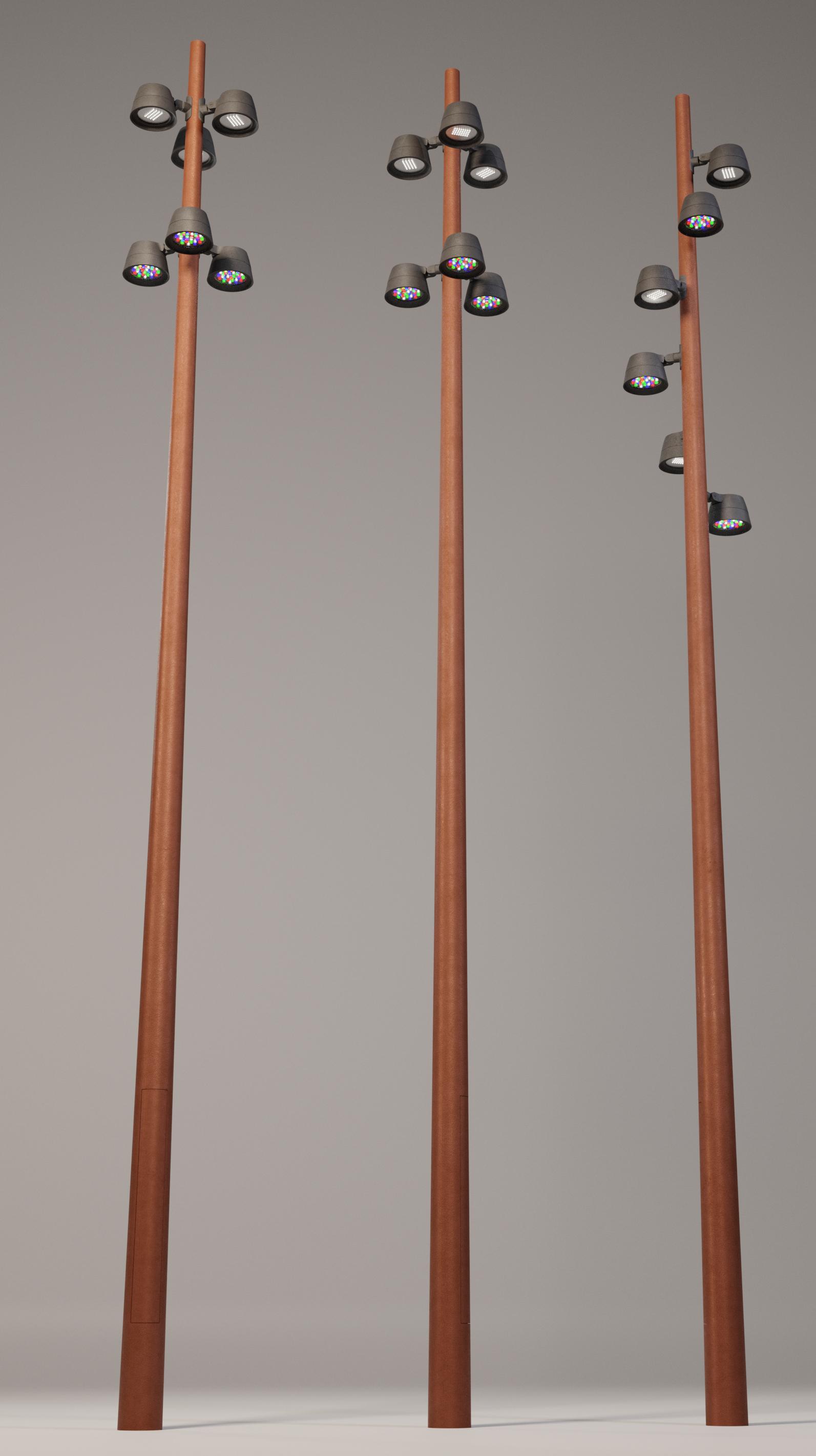
VIRTUAL RENDER
Thisnewluminairearrangementwasthen rendered within the virtual scene. When I viewedthisintheVRenvironment,Ifound the uniformity had improved significantly andtheblockingeffecthadbeenreducedto whatIbelievedmatchedourinitiallighting

OCTOBER 2023 LIGHTING JOURNAL 44 www.theilp.org.uk
Main image: a visualisation of all three luminaire arrangements together. Inset: visualising a scene
calculation. The Lighting Reality calculation was then adjusted to match the new mounting heights of the urban lighting luminaires, which reduced the theoretical uniformity from 49% to 42%. However, within the virtual scene the uniformity had greatly improved and still obtained the lighting standard outlined in BS5489:2020–C1.
With the luminaire layout finalised, I continued to develop the 3D scene to create a more immersive and realistic environment. GOBO projectors were added and removed from specific columns, and additional ‘set dressing’ such as planters, trees benches, and general objects were added to the virtual scene.Materialfinisheswerealsoaddedto thefloor.
Finally, we invited the end users and investors in the public realm redevelopmenttoexperiencetheirprojectinVR.
The feedback from the customers was verypositive.Beingabletofeelthescaleof their proposed scheme allowed for valuable comments and feedback during the earlystagesofdevelopment.
Virtualrealityhaspracticalusesbeyond just visualisations. In this case study, it enabled us to identify an issue that could havegoneunseenuntilinstallation.

This was pivotal for me as the lighting
Examplary running head
designerworkingonthisproject;allowing me to see how our photometry interacted with the environment from a functional and technical aspect. Moreover, VR enabled the customer to experience the scheme before committing large resourcestotheproject.
CONCLUSIONS
In sum, VR can also be used to visualise and configure colour-change animations, dimmingregimes,andavarietyofcontrolbasedsolutionsthatcantrulyenhancethe lightingdesignexperience.
ThemoreIhaveexperimentedwithVR, themorebenefitsandpracticalusecasesI have discovered. We must bear in mind that,whilstVRisstilladevelopingtechnology and may have a higher barrier to entry,thebenefitsarealreadycleartosee.
I plan to take the technology further in the coming months. We can render different observer points to check for other issues such as light spill, especially in terms of the effect a lighting scheme may haveonsensitiveenvironmentalareas.
Iwouldalsoliketoanimateanobserver moving at speed. For example, we may be abletoseetheeffectalightingschemehas on a train driver passing through a rail junction – identifying any glare or visual discomfort.

This also applies to colour-changing dynamic lighting projects, where it would be possible to animate the perspective of somebody driving a car through the scheme to see if the colour changing elementisdistracting.
A traditional lighting demonstration can also benefit from VR technology, where an in-person demo may be not possibleorimpractical.
For example, there may be equipment or installation constraints, such as road closures making a demo impractical or the area requiring illuminance may not have been constructed yet. These are all scenarios where virtual reality can play a powerfulrole.
Virtual reality lends itself to lighting. Whenusedalongsidetraditionalmethods, VR can provide a powerful real-time display of lighting effects. However, VR displaysrequireskill,time,andpatience.
This crossover of 3D artistry and technical knowledge takes a considerable commitment, but the benefits are clear to see.
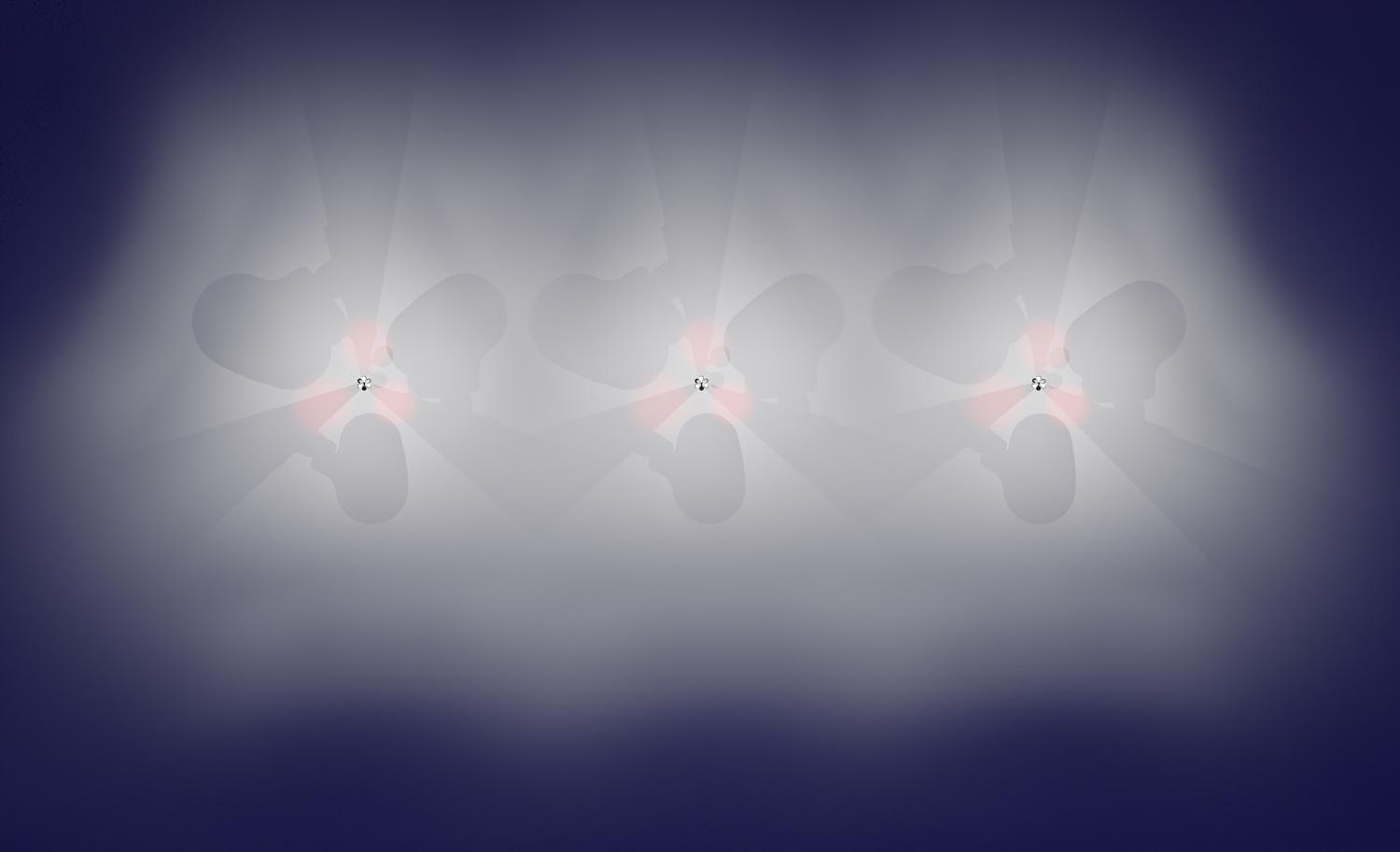
www.theilp.org.uk OCTOBER 2023 LIGHTING JOURNAL
45
Lighting technology
Main image: a visualisation showing good uniformity layout (from the third revision layout on the previous page). Inset: Jack visualising a scheme with good uniformity
Jack Cunningham is senior sales support engineer at Urbis Schréder
RIVER RECLAMATION
The city of Lyon in France is famous for, among other things, its annual FestivalofLights,whichtakesplace every December and sees the city transformed by temporary light installationsoverfournights.
Ahead of this year’s festival, the city is celebrating the completion of a new permanent light installation, the ‘glacier blue’illuminationofa2.5kmstretchofthe Rhône riverbanks, linking the Parc de la Tête d'Or and the Parc de Gerland in greaterLyon.


Theschemeisthelatestdevelopmentin a 10-year ‘reclamation for the people’ of the city’s two main rivers, the Rhône and theSaône.
This regeneration programme has swept away the abandoned spaces and large, ugly carparks that used to dot the riverbanks.Intheirplacehasbeencreated a network of nature walkways, fountains,
By Nic Paton
play areas, skate parks, cycle and jogging paths, benches and even (very French) places to lie down. There is tiered seating for chilling and contemplating in the sun, aswellasagrass-coveredopen-airtheatre.
The new LED lighting scheme, which has been driven by Lyon’s Urban Lighting Department (DEU), has replaced the original metal halide lighting fixtures installed in 2008, with 244 ‘ArcSource 24’ fixtures supplied by manufacturer Anolis. BeingLED,thescheme,naturally,issignificantlymoreenergyefficient–76%more.

ORIGINAL INNOVATION RETAINED
Theoriginal2008schemewasdesignedby Yves Adrien, of Coup d'éclat, and Charles Vicarini, of Studio Vicarini, working with architect Françoise-Hélène Jourda, of JourdaArchitects,andlandscapedesigners Emmanuel Jalbert and Annie Tardivon, of InSitu.
It was innovative for its time in that the 244 fixtures were cantilevered off the streetlight masts along the upper quay using long arms. Two fixtures per mast extend out by 5m, allowing them to be positioneddirectlyabovethestonewalls.
After testing and a proposal from interior designer and urban lighting specialist Jérôme Donna, the projectors, complete withadjustableellipticaloptics,werethen alignedsotheywouldsoftlyilluminatethe stonesurfacesofeachriverbank.
These innovations have been retained and built upon for the new LED scheme, with the new lights retrofitted into the existing fixtures. GOBO projectors have been added on all the bridge anchoring walls over the Rhône. These project the names of famous women on to the pathways and banks and occasionally create whiteandturquoisewaveeffects.
The switch to LED has brought further

OCTOBER 2023 LIGHTING JOURNAL www.theilp.org.uk Public realm lighting 46
A stunning new lighting scheme along the banks of the River Rhône in Lyon, France, is a key part of the city’s ongoing ‘reclamation’ of the river for its citizens
All photographs couresy of Vincent



Have you submitted your ELD Completion Project? Exterior Lighting Diploma ELD In order to gain the ILP Exterior Lighting Diploma, submitting a Completion Project is essential. For tutorial support please contact Angela@theilp.org.uk or Guy@theilp.org.uk If you are struggling WE CAN HELP! You will not qualify without it! We create bespoke low energy, durable festoon lighting for architects, designers, retail chains, sign makers, ship builders and more. Contact us to discuss your lighting project. Low Voltage | LED & Xenon options | IP68 rated | RGBW system available BESPOKE FESTOON LIGHTING ARCHITECTURE | FESTIVE | TREES | MARINE | SIGNAGE | SEAFRONT | RETAIL | MORE www.lumisphere.co.uk T:+44(0)1245329999 E:sales@lumisphere.co.uk
Public realm lighting


advantages,suchasadditivecolourmixing and increased light efficiency when creating the precise signature blue required. The very specific blue chosen was designed to represent the river’s glacial origins, high in the Alps of south-central Switzerland,aswellastocomplementthe hue and texture of the stonework of the redesignedquays.
SPECTROMETER ANALYSIS
A key challenge included transitioning fromasolidbluetintedmetalhalidefilter to the same chromatic result and density of light with additive colour mixing, yet without having the same spectrum. Ensuring uniformity of colour mixing was another key consideration, especiallygiventhatthelightsourcesareabout 25mto35mapart.
The ArcSource 24s have a navy blue with a colour point that shifts with added
green, but the city authorities wanted a lightbluethatincorporatedsomered.So, fortheexactcolourmatch,thecyancreatedwithblueandgreenissupportedwith red.
The values for the colour were calculated using Osram Sylvania's LED ColorCalculatorsoftware.Thisprogramallows designers to estimate the photometric performanceofcolourmixingschemes.
The colour was then set to a factoryadjusted light blue, with two devices configured in France to show the city it was correct. From there, DEU conducted continuity tests and validated the colour with a spectrometer to ensure it was an exact match for the ‘Rhône River blue’ required.
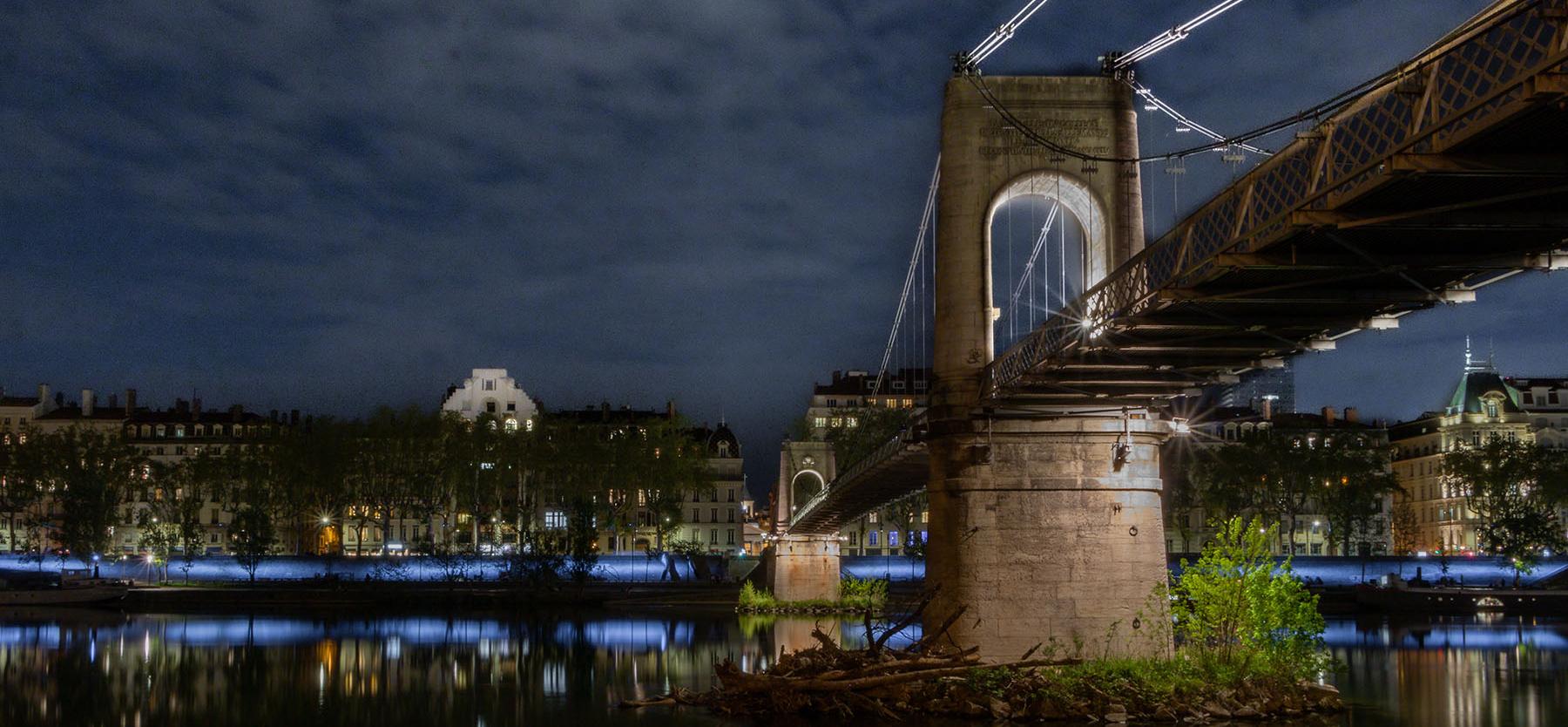
As well as the new GOBOs, the 244 projectors were painstakingly adjusted by hand over several nights by DEU apprenticeMaximeRobillard.
When the refurbishment project started, he was studying lighting for his bachelor's degree at IAE Lyon (or the Lyon Institute of Business Administration). By the end of it, Maxime’s passion for the project had so impressed that he was hired to work full time as part of the DEUteam.
‘We needed a compact projector powerful enough to bring some light to the lower sections of the banks,’ explains the DEU’s research scientist Frédéric Durand.‘Thecolourmixingalsohadtobe properly homogeneous with no streaked edgestotheglassorrainboweffects!’
‘As a manufacturer, our goal was to address questions of whether this particular blue was within our colour triangle, and if we had enough luminous flux in it to emulate the previous colour effect perfectly,’ adds Bruno François, architecturalspecialistatAnolis.

OCTOBER 2023 LIGHTING JOURNAL www.theilp.org.uk
48
The Safety of Lighting
Lighting has a profound and often misunderstood effect on all aspects of the human experience.
Did you know well-designed and implemented lighting can be used to detect criminals? For example, sensors can be attached to lights, which can pinpoint the location of criminal activity and send a signal to the emergency services quicker than anyone would be able to phone, allowing a faster response to rescue.
Examplary running head
Introba can be your partner in specialist design and assessment of light and lighting in all environments including:

Urban Realm, Interior and Exterior Lighting

Highway and Transportation
Landscape and Heritage
Aviation, Maritime and Border Facilities
Architectural and Feature Lighting
Sports Lighting
Planning Support
Daylight Analysis and Design

Obtrusive Lighting and Environmental Baseline Studies
Photometric and Performance Measurement
GN22 Asset Condition Assessments
Expert Advice and support
For further information on how Introba can help you, contact Lighting Design Consultant Kimberly Bartlett.
E: kimberly.bartlett@introba.com
T: 0203 697 9300
www.theilp.org.uk OCTOBER 2023 LIGHTING JOURNAL
©Martin Knowles Photography
49
CAREERS SERVICE
TheILP’spopularExterior LightingDiplomaisrunning againthisautumn.Itprovides would-belighterswiththecore skills,knowledgeandconfidenceto kickstarttheirprofessionalfutures inlighting
By Guy Harding
The ILP’s Exterior Lighting Diploma, or ELD for short, has become the established industry qualificationforlightingdesign.Inthisarticle, I want to give some more background information on the course and how it is run while, opposite, recent ELD ‘graduate’ Emma Gregory writes about herexperienceofthecourse.
The diploma is split into four modules. The first three – ‘A’,‘B, and ‘C’– are taught modules and the fourth, now called ‘the completion project’ is based on home study and is a chance for the students to demonstratewhattheyhavelearnt.
I’ll look in more detail at the completion module in next month’s edition of LightingJournal.ButModulesA,BandC are all held at the Draycote Hotel near
Rugby (pictured above). We normally run a set of A, B and C Modules in both the spring and autumn of each year and we have to book the hotel up to a year in advance. Once we have the dates for each course, these are put on the website (at theilp.org.uk/events/) to allow places to bebooked.
Bear in mind, the courses are popular andoftenselloutwellinadvance.Ingeneral, we limit places to 20 per module because of space limitation in the lecture room.
RESIDENTIAL COURSE
Each module is a week-long residential course, with students arriving on the Sundaynighttoawelcomemeal.
IamatthehotelontheSundayevening to welcome the students after their journeys and I stay at the hotel all week to deliversomeofthepresentations.
All the course equipment is delivered from ILP HQ, Regent House in Rugby,firstthingontheMondayandIam joined by ILP course administrator Angela Davies to help set up the room beforethecoursestarts.
Angelaalsolooksafterthecourseadministration and pastoral care and works closely with the hotel to ensure everyone has a comfortable stay. Everybody is well
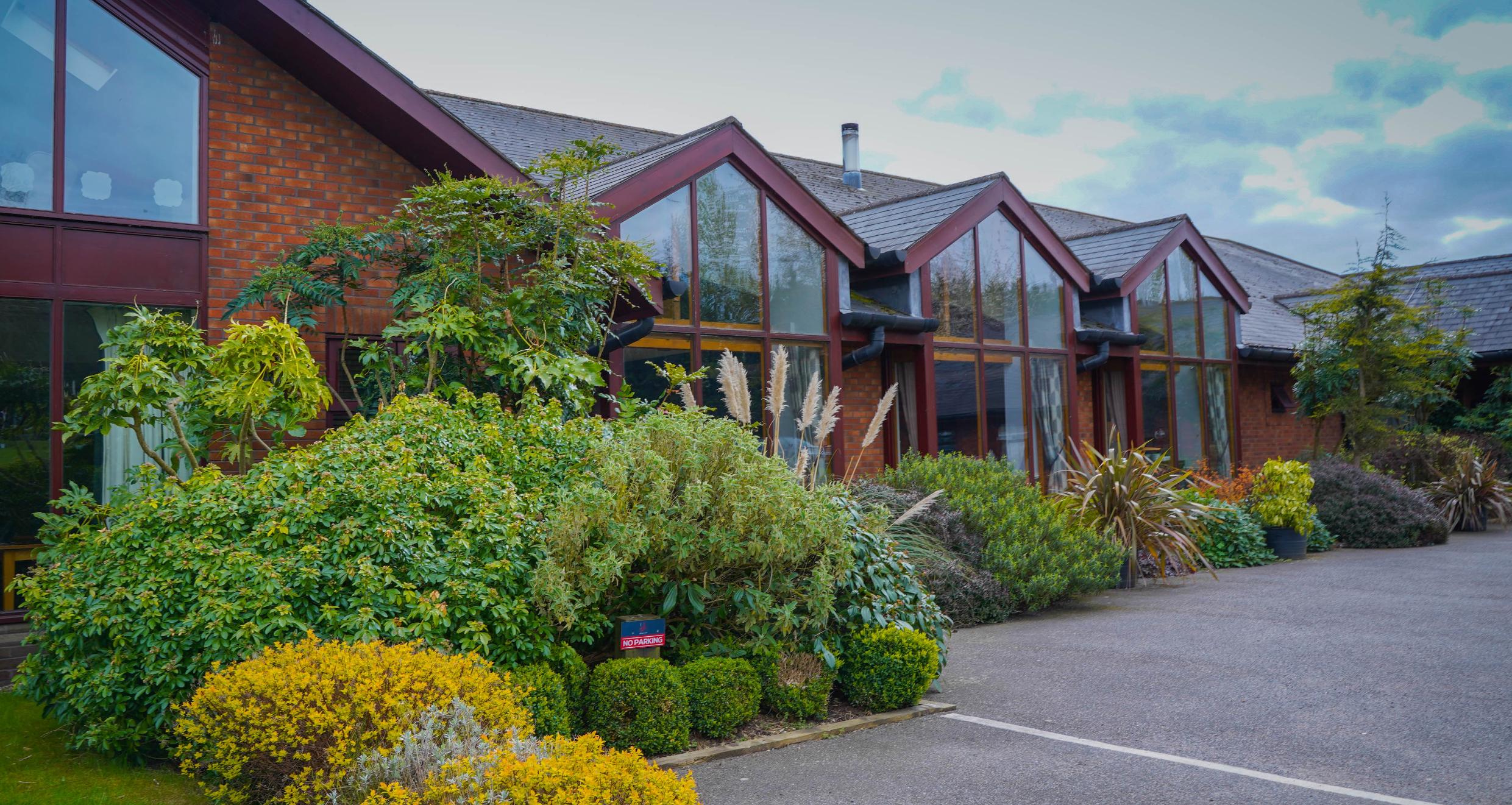
fed and each student gets to choose their evening meal from the wide-ranging menueachday.
Wedividethestudentsintoteams,typicallyoffive,andthestudentsstayinthese teams all week. Each day starts at 9am with hour-long lecture slots with a refreshment/comfortbreakeachhour.
Webreakforlunchat1pmanddinnerat 6pm with an evening session running until 9pm. The evening sessions are usually less intensive. Each course starts with introductions and the nominated team leader introduces his team to the restoftheroom.
Module A is all about illuminance, the lighting of subsidiary and residential areas. Module B is focused on luminance, the lighting of traffic routes. Module C, meanwhile, covers area and architectural lighting.
The presentations are delivered by experienced and respected professionals withintheindustry,allofwhomhavebeen trainedaspresenters.
They present on Monday, Tuesday and Wednesday morning and these are then followed by a 45-minute closed-book writtenassessment.
This consists of a mix of questions requiringawrittenanswerandalsomultiple choice. The results of these assess-
Lighting education
ments count towards the student’s diplomamark.
PROJECT TEAMWORK
The second part of the week is then devoted to project work. The students work in their teams to write lighting policies, perform lighting designs, and present their work to the other teams with each team member presenting a section of the project.
The project work includes a site visit, and the locations include residential roads in Rugby, The National Exhibition Centre in Birmingham and the historic town centre of Leamington Spa. Travel is bycoachtoandfromthesites.
We also do a night-time site visit to get some hands-on experience with luminaires, with this normally being lighting up a localchurch.

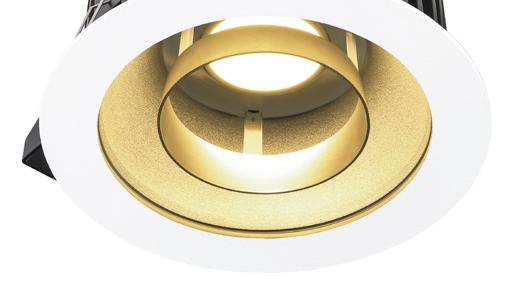
You’ll no doubt be pleased to hear it is not all work, however. There is a social side with a non-lighting based interactive presentationsessionandalsoaquiznight, againstrictlynon-lighting.
On the Friday morning, the teams present their work on which the tutors give constructive comments. The course then finishes on Friday lunchtime and everybody is given a packed lunch as they leaveforthejourneyhome.
COMPLETION MODULE
To conclude, over the three courses each student can develop their presentation skills in a friendly, non-critical environmentthatwillequipthemtogivepresentations at work or even at ILP events in the future.
On Module C, each student has their presentation skills assessed as well as their teamworkandinteractionwithothers.This is part of the EngTech qualification that students can achieve on completion of the finalmodule.
However, and importantly, students needtobeawarethattheyhavenotcompleted their ELD until they have finished and handedintheircompletionproject.Itisall tooeasytoattendthetrainingweeksatthe Draycoteandassumethatisthat,‘jobdone’. Thatisverymuchnotthecase.
That’s why, in next month’s Lighting Journal, I’ll do a deep dive into the importantinsandoutsofgettingyourcompletion project right – what it involves, what to expect and how to make it as painless as possible.So,watchthisspace!
EUR ING Guy Harding BSc CEng FILP FSLL is the ILP’s Technical Manager
WAS PROOF THAT I AM A “PROPER” LIGHTING PROFESSIONAL’
DWWindsor’sEmmaGregory describesherELD‘journey’and thevalueithasbroughttoher lightingcareer
By Emma Gregory
When I joined DW Windsor six years ago it wasn’t initially in a lighting role. I started out within customer service, managing quotations and dealing with enquiries and complaints.

But about three years ago, when a vacancy for a junior lighting designer position came up, I decided I wanted to apply for it. I got the role and have loved beinginlighting;Inowworkasanapplications’ engineer with DW Windsor.

However, there was of course the question of how best to gain the specialist lighting knowledge I now needed for both my new role and to progress my career? Both of my managers had done the ELD and said it would be beneficial for me to learn the basics.
What is great about the ELD is that youdon’tneedtohaveanypriorlighting knowledge or experience. It is designed to be a qualification for total beginners to the industry, one that allows you to learn and build in confidence as you go, which was just what I needed.
I did Modules A and B in January and October last year respectively, and then finished Module C and the completion project this year. I was also fortunate in that DW Windsor covered the costs for the course.
www.theilp.org.uk OCTOBER 2023 LIGHTING JOURNAL
51
Examplary running head
‘IT
ILLUMINATING INTERIORS AMBIANE™ AP anolislighting.com WARMING COLOURS & ADJUSTABLE WHITES
Lighting education
IMMERSIVE EXPERIENCE
Having the diploma as a residential course was, for me, a great experience. It is intensive but completely immersive. It is a great opportunity, in what is a small industry, to make new friends and build your networks; normally with different people on each module. I still speaktopeopleImetonthemoduleson LinkedIn, for example.
For me, I would definitely say Module A was the hardest one to get my head around. There was a lot of terminology and explanations I really had to work hard to understand and remember. However, another good thing about the ELD is that each module goes back over things. There is a lot of opportunity to refresh and relearn and make sure things stick.
In Module C, as Guy has touched upon, you get the opportunity to go to a churchyard and light the church (as shown above). It is an experience I will always remember because it was something I had never done before. We were able to try all different types of luminaires to show the different effects we could achieve.


Another valuable element of the training is the fact it has a really practical focus. Everything you learn in the clas-

sroom is applied to a project; every time you did something in the lessons you would then take that away and do it in ‘real life’. In fact, I was proofreading a document just today and a lot of the stuff is what I wrote in my completion project, so the knowledge you gain is very transferable.
You do, of course, need to apply yourself and work hard. I did a lot of revision outside of the classroom learning, things like extra work on Pythagoras or trigonometry, especially before the assessment, just to make sure I wasn’t going to go in and panic. Even with the assessment,however,therewerealways revision sessions in advance.
PATH TO ENGTECH AND AMILP
It does feel a bit like school but not in a bad way. We’re all professionals in there, so there is often a lot of back and forthandquestioningthroughout.Itisa really good learning experience as well as a really good confidence-building experience. Everyone is always so helpful and friendly; they always make time for you.
As the completion project is being looked at in a separate article, I won’t go into it in depth here. Suffice to say, at the end of each module you are given a

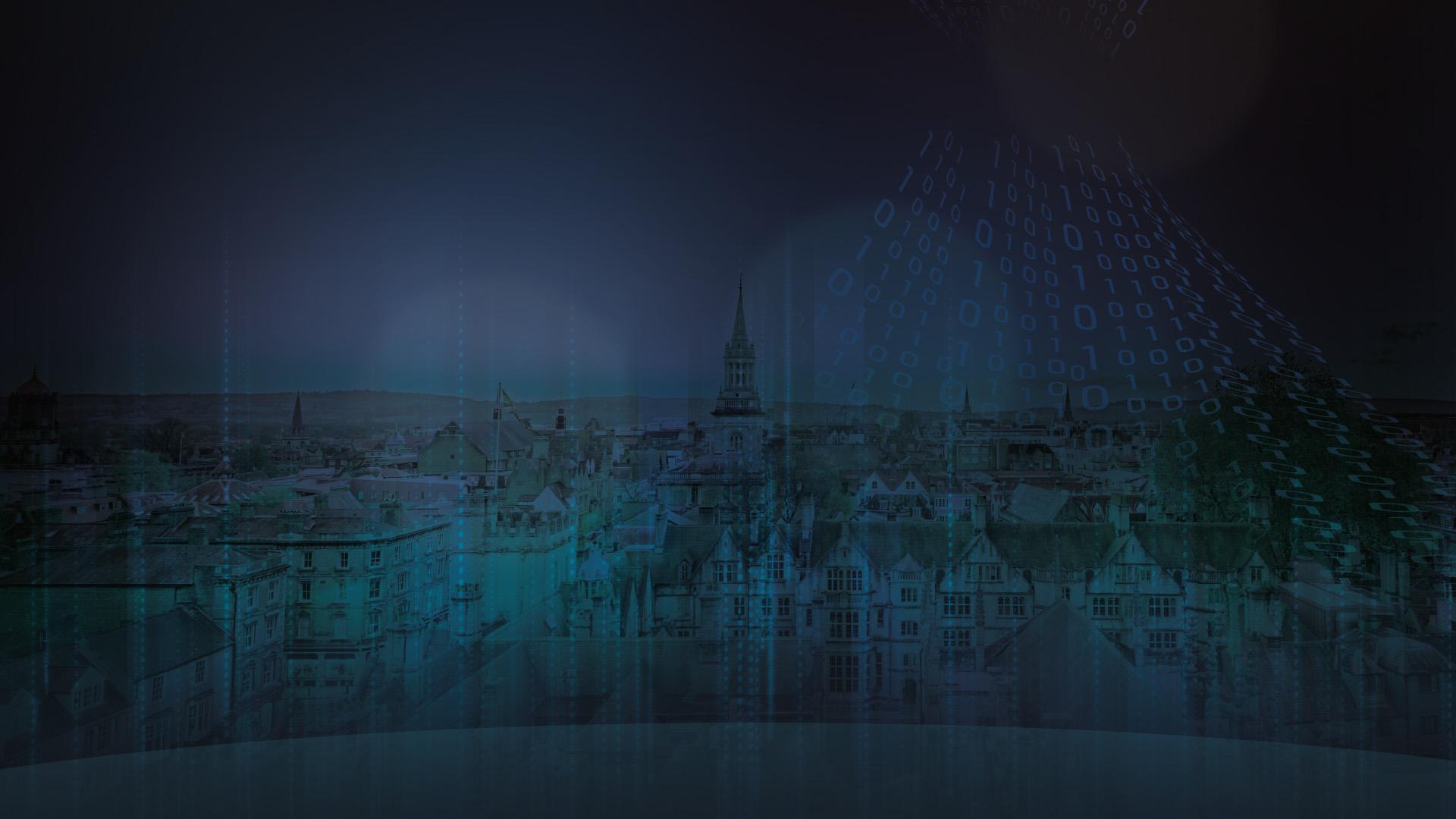
section of the project that you go away to do in your own time. My company gavemeanicelotoftimetodoitatwork and I had a lot of help from my managers.
The best advice I would give is not to leave it all to the end but work on it during the modules, doing it in small chunks as you go makes it much more manageable.
It also helped me to get it done really quickly, pretty much straightaway after I had completed the modules.

Importantly, fully completing the ELD has enabled me to get my EngTech and my AMILP, too. In fact, because I’d already done my completion project, completing my EngTech was a breeze.
When I got my marks and my certificate through, I turned to my manager and said, ‘oh I’m allowed to be here now!’. For me it was proof that I was good enough, that I was now a ‘proper’ lighting professional.
OCTOBER 2023 LIGHTING JOURNAL www.theilp.org.uk
52
Emma Gregory Bsc (Hons) EngTech AMILP is applications’ engineer at DW Windsor


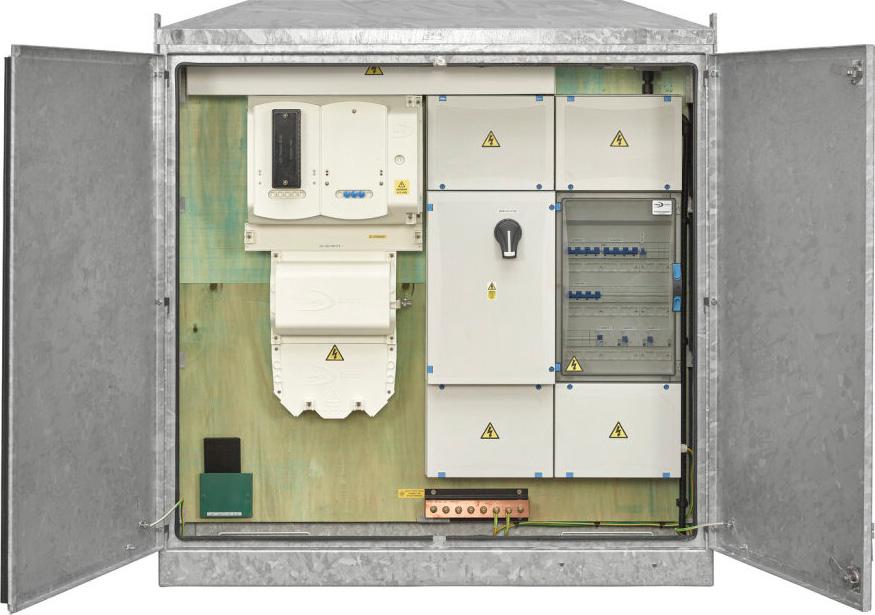
If you need an EV Pillar. Make it Lucy. Electric Vehicle Infrastructure Solutions: from On-Street Charging to EV Hubs Sales & Technical Help 01422 317 335 For Quotes – quotes@lucyzodion.com For Orders – orderline@lucyzodion.com lucyzodion.com If you need help getting 2035 ready, contact us today. www.theilp.org.uk OCTOBER 2023 LIGHTING JOURNAL Examplary running head 53
‘I LIKE HOW LIGHTING CAN CHANGE PERCEPTION AND ATMOSPHERE’
Fromachancemeetinginataxithroughtorunningateamin Bangalore,assistantlightingengineerJordanBrienexplainshow lightinghasledhimtowhereheistoday
By Jordan Brien
TELL US ABOUT YOURSELF
My name is Jordan Brien. I work for Atkins/SNC Lavalin as an assistant lightingengineerinWarrington,Cheshire.
HOW DID YOU GET INTO LIGHTING?
IhappenedtojoinAtkinsinanunconventional way in August 2013. I had just completed my BTEC Level 3 diploma in ConstructionandtheBuiltEnvironment, with the aspirations to become either a quantitysurveyororcivilengineer.
My father is a taxi driver who, by chance, was picking up a member of the Atkins team based in the Warrington office.
He discussed my situation which, in turn,openedupaninterviewopportunity for an apprenticeship as a CAD designer withinthehighwaysteam!
A few years down the line – and after completing my HNC in civil engineering – I was providing CAD support to various disciplines. But I became increasingly interested in lighting design and so decided permanently to transfer to the lightingpracticein2015.
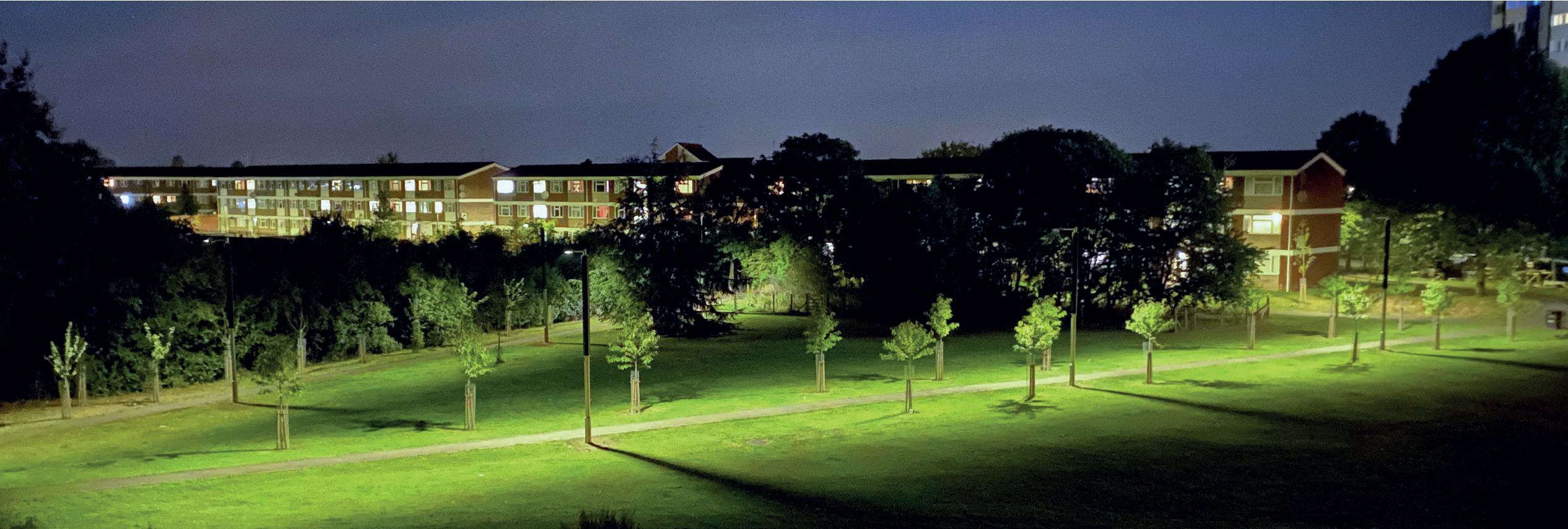
WHY LIGHTING?
Ihadprovidedsupporttovariousdisciplines in Atkins but, after engaging with the lighting team, I knew instantly it was the pathIwantedtotake.
I had always taken street lighting for granted.ButasIwasexposedtohowLEDs actually work, I became intrigued with how detrimental poor lighting is to everydaylife.
WHAT DO YOU FIND MOST INTERESTING OR ENGAGING ABOUT YOUR ROLE AND WHY?
The most interesting subject for me in lighting design is how it can affect the biodiversityofspecies.
Introducing artificial light into the atmosphere can have a significant impact on the natural rhythms of nocturnal species. This includes confusing migration,increasingpredationriskandinterferencewithnocturnalpollination.
As a keen admirer of nature, I take into consideration how the local wildlife may be affected within my schemes and work to ensure I mitigate the effects of the
OCTOBER 2023 LIGHTING JOURNAL 54 www.theilp.org.uk





www.theilp.org.uk OCTOBER 2023 LIGHTING JOURNAL Examplary running head 55 Contact us today info@svlt.co.uk +44 (0)1923 726150 solarvisionlt.co.uk Helia Astral Heritage Templar Off grid solar products that actually work! Your One Stop Solution 100% Solar or Hybrid options available • From start to finish • Free advice • Fully programmable lighting • Fully installed • Fully managed maintenance Clients include • National & Local Developers • Local Authorities • Private Estates • Commerical Landlords
Young and new lighters
proposed lighting. Considerations will include the selection of lighting class, column height, optic setting, colour temperature,andshielding.
HAVE YOU BEEN INVOLVED IN ANY PROJECTS YOU ARE PARTICULARLY PROUD OF, AND WHY?
I have gained experience on a variety of schemes, including ‘smart’ motorway and activetraveldesigns.

OneprojectIamparticularlyproudofis theLEDconversionschemeIdesignedon behalfofStockportMetropolitanCouncil.
I was responsible for the design, management and delivery of an LED replacement, which was successfully installed overathree-yearperiod.
Iworkedalongsidethecounciltocreate aformatthatwouldbeutilisedforthedelivery of 21 wards throughout the borough of Stockport, with a total replacement of 33,000streetlightingluminaires.

Once the initial format of the deliverables was agreed, I then utilised and managed a small team of the Atkins Global Design employees based in Bangalore to deliverthefuturewards.
ThiswasthefirsttimeIwasabletolead on a scheme and I really enjoyed the experience.
HOW DOES LIGHT INSPIRE YOU?
Lightinginspiresmetocreatepracticalyet aesthetically pleasing designs to the best ofmyability.
I like how lighting can change the perception and atmosphere of an area makingitfeelsaferandmoreenjoyable.
WHAT BARRIERS OR CHALLENGES ARE THERE FOR YOUNG PEOPLE TO ENTER THE INDUSTRY?
I think the main barrier for young people entering the industry is the lack of representation and engagement in STEM events.
By attending schools or colleges, we wouldbeabletoattractayoungeraudience and play a part in the future of lighting professionals.
DO YOU HAVE A MENTOR OR SOMEONE WHO HAS PARTICULARLY INSPIRED OR SUPPORTED YOU?
I have been lucky enough to join a team withsomanyexperiencedemployeeswho have been approachable and encouraging everystepoftheway.
Mymainmentorfromstartingwiththe lighting team has been senior engineer Gary Campbell, who has helped me gain a widevarietyofknowledge.
I would also like to thank Robert Banks and my line manager (and former ILP President) Colin Fish, who have both helped to develop a progression plan for myfuturewithintheindustry.

HOW HAS THE ILP HELPED YOU ON YOUR LIGHTING ‘JOURNEY’?
By attending the ILP Exterior Lighting Diplomamodules,IhavegainedknowledgethatIuseineveryaspectofmydesigns.
TheILPsummitsandconferenceshave helped me to gain a wide network of contacts, including being able to speak to lighting designers, sales representatives andproductmanufacturers.
WHAT’S YOUR AMBITION IN LIGHTING? WHERE WOULD YOU LIKE TO BE IN, SAY, 10 YEARS’ TIME?
My ambition for the next 10 years would be to venture more into architectural lighting design and eventually progress to theroleoflinemanager.
InthisroleIwouldbeabletohelpnavigatejuniormembersofstaffthroughtheir ownjourney.

WHAT WOULD BE YOUR MESSAGE TO OTHER YOUNG PEOPLE INTERESTED IN OR THINKING ABOUT A CAREER IN LIGHTING?
I would say lighting is a lot more interestingthemoreinvolvedyouget.
I have worked with Atkins for 10 years now and I constantly broaden my knowledgeeveryday!
OCTOBER 2023 LIGHTING JOURNAL www.theilp.org.uk
56
Jordan Brien is an assistant lighting engineer for Atkins/SNC Lavalin
Stockport Town Hall, where Jordan Brien (inset right) worked on the town's LED conversion scheme
Illuminating my career in street lighting
Meet Charlie Holland, YPO’s street lighting procurement buyer
How did you get into lighting procurement?
When I left school at 15, I wasn’t sure about my future career. I contemplated whether to continue my studies or enter the workforce directly. I decided to start working and I began my journey as a YPO apprentice. I embarked on this journey armed with determination and a thirst for knowledge, unaware of the incredible journey that would eventually lead me to my role as a Highways buyer.
The apprenticeship programme allowed me to gain work experience and earn a valuable qualification. The skills and insights I acquired as a sales and marketing apprentice have been instrumental in my career and will continue to serve me well. Working in various departments at YPO allowed me to explore different roles and ultimately helped to shape my career path.

Would you recommend an apprenticeship?
For those unsure about their post-school plans, apprenticeships are an excellent way to gain experience and develop a versatile skill set, regardless of the sector you intend to work in.
Towards the end of my apprenticeship, I joined the Fleet, Highways, and Buildings team in Procurement Services as a parttime Further Competition Coordinator. This role allowed me to delve deeper into procurement, compliance, and, most importantly, the world of street lighting.
If you had told me at 15 that I’d have a career in procurement, I would have likely asked, “What’s that?” I don’t think many people leave school with the goal of becoming a procurement professional, but it turned out to be one of the best decisions I ever made.
What happened after your apprenticeship?
From there, my career journey led me through various categories, including Energy, Facilities Management, Data Analytics, and eventually, the IT department, where I became an assistant buyer.
This role marked a pivotal moment in my journey, giving me a taste of what it meant to be a buyer. I was responsible for running procurement projects and conducting relationship management meetings, which prepared me for my current role. It also allowed me to pursue my CIPS qualification.
After leading the Smart Cities agreement in the IT team and delving into smart lighting, I realised how much the world of street lighting illuminated my path to success. Now, at 24, I’ve finally found my niche as a buyer within the Construction team, overseeing the Highways frameworks. What’s next for you?
I still have much to learn in the lighting world. I owe a debt of gratitude to the ILP for providing me with the knowledge I’ve gained so far. Without their CPD opportunities and events, my understanding would be limited. The lighting industry is ever-evolving, and I’m committed to continuing my learning. I’m about to embark on the Fundamental Lighting Course, which will further enrich my knowledge base.
As for the future, I’m uncertain what it holds, but I’m committed to passing on my knowledge and experience of my apprenticeship and contributing to sharing best practices.
YPO can support you, from smart lighting to project management, to ensure your exterior environments are procured compliantly.
Contact Charlie to discuss your lighting procurement needs: charlie.holland@ypo.co.uk
To find out more about our apprentice frameworks, email: apprenticeships@ypo.co.uk
www.theilp.org.uk
“As a 15-year-old just leaving school, I wasn’t sure if an apprenticeship was the brightest decision, but pun intended, ‘watt’ a decision it turned out to be! I couldn’t have asked for a better first job or a more wonderful organisation to work for.”
LIGHTING CONSULTANTS
KEVIN RAMSAY HERBIE BARNIEH
BEngCEngMILP
PROJECT CENTRE

1 AMERICA SQUARE, LONDON, EC3N 2LS
T: 0330 135 8950, 077954 75570
HERBIE.BARNIEH@PROJECTCENTRE.CO.UK
WWW.MARSTONHOLDINGS.CO.UK/PROJECTCENTRE
Efficient, innovative,and bespokelighting designservices from anaward winningconsultancy.
Experienced indelivering exteriorlighting projects from feasibilitystudies topost constructionservices. Whether it’shighway, street,or publicrealm lighting, let usassist youto realiseyour projectgoals.

STEVEN BIGGS
IEngMILP
MILESTONE INFRASTRUCTURE
PETERBOROUGH PE1 5XG
T: 07834 506705
STEVEN.BIGGS@MILESTONEINFRA.CO.UK
MILESTONEINFRA.CO.UK

Award winninglighting designspecialists, delivering innovative design,installation andmaintenance solutionsin highways, publicrealm, commercialand architectural environments.
Our HERSregistered teamprovide designstrategies, impact assessment, technical& certifiersupport.

BONNIE BROOKS
BA(Hons)BEng(Hons)MSc
CEngMSLLMCIBSEMILP
THE LIGHTING BEE LTD

EXETER EX4 1NF

T: 07840 054601, E: INFO@THELIGHTINGBEE.CO.UK
WWW.THELIGHTINGBEE.CO.UK
Professional independentlighting designconsultancy providing designsfor allexterior applications,including street lighting.Specialists inassisting atthe planning application stagewith designs,strategies, lightingimpact assessments, andexpert witness,with afocus onmitigating ecological andenvironmental impacts.
SIMON BUSHELL MBADMSIEngMILP
ENERVEO
PORTSMOUTH PO6 1UJ
M: +44 (0)7584 313990 T: +44 (0)121 387 9892
E: SIMON.BUSHELL@ENERVEO.COM
WWW.ENERVEO.COM
Professional consultancyfrom theUK’s andIrelands largest external lightingcontractor.
From highwaysand tunnels,to architecturaland publicspaces our electricaland lightingdesigners alsoprovide impact assessments, lightingand carbonreduction strategiesalong with wholeinstallation packages.
LORRAINE CALCOTT
IEngFILPIALDMSLLILABSS IT DOES LIGHTING LTD
THE CUBE, 13 STONE HILL, TWO MILE ASH, MILTON KEYNES, BUCKINGHAMSHIRE, MK8 8DN
T: 01908 560110 E: INFORMATION@ITDOES.CO.UK
WWW.ITDOES.CO.UK
Award winning lighting design practice specialising in interior, exterior, flood and architectural lighting. Emphasis on section 278/38, public realm, ecology receptor mitigation and supporting Councils with planning approvals, CDM2015 and SBD accredited. Specialists in circadian spectrally specific lighting design.
MARK CHANDLER
EngTechAMILP
MMA LIGHTING CONSULTANCY LTD
READING RG10 9QN
T: 0118 3215636
E: MARK@MMA-CONSULTANCY.CO.UK
WWW.MMA-CONSULTANCY.CO.UK

Exterior lightingconsultant’s whospecialise inall aspects of streetlighting design,section 38’s,section 278’s, project managementand maintenanceassistance. We alsoundertake lightingappraisals and environmental lightingstudies
IEngMILPMIET
SWECO
SWECO, EDINBURGH EH3 9QG
T: 07467685753 E: KEVIN.RAMSAY@SWECO.CO.UK
WWW.SWECO.CO.UK

Lighting andelectrical designconsultancy providingprivate and public sectorinnovative professionalservices. Specialisingin

Section 38,Section 278,RCC, highways,architectural, public spaces, carpark, lightingimpact assessments,Internet ofThings, interior andemergency lighting,EV design.From planningto post-construction weprovide innovativeand environmental balanced solutions.
REBECCA HATCH
IEngMILP
WSP


LONDON WC2A 1AF
T: 07385 461143
E: REBECCA.HATCH@WSP.COM
WWW.WSP.COM
National teamof specialistlighting andenergy professionals offering thelatest thinkingand bestclient serviceacross all aspects oflighting andenergy, bothpublic andprivate sector. Architectural, Highways,Environmental, LocalGovernment, Electrical andTechnical Expertise
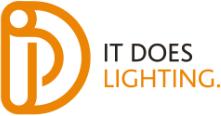
STEPHEN HIGHAM
IEngMILP
SHD LIGHTING CONSULTANCY LTD
BOLTON BL2 6SE
M: 07834 490 192
E: STEVE@SHDLIGHTING.CO.UK
WWW.SHDLIGHTING.CO.UK


Outdoor lightingdesign consultancyspecialising instreet lighting andprivate lightingdesign services. We provideSection 38,Section 278,Car Parklighting designs, Commerciallighting andEnvironmental Impact Lighting Assessmentsand planningapplication consultancy advice throughoutthe UK.
ALLAN HOWARD
BEng(Hons)CEngFILPFSLL WSP
HERTFORD SG13 7NN
T: 07827 306483
E: ALLAN.HOWARD@WSP.COM
WWW.WSP.COM
Professional artificialand daylightlighting servicescovering design, technicalsupport, contractand policydevelopment including expertadvice andanalysis todevelop and implement energyand carbonreduction strategies.Expert witness regardingobtrusive lighting,light nuisanceand environmental impactinvestigations. registeredpersonnel.
ALAN JAQUES
IEngFILP ATKINS
NOTTINGHAM, NG1 5FW
T: +44 (0)115 9574900 M: 07834 507070
E: ALAN.JAQUES@ATKINSGLOBAL.COM
WWW.ATKINSGLOBAL.COM

Professional consultancyproviding technicaladvice, design and managementservices forexterior andinterior applications includinghighway, architectural,area, tunneland commercial lighting.
Advisors onenergy savingstrategies, assetmanagement, visual impactassessments andplanning.
PATRICK REDMOND
MILPMSLLIEngTechIEI REDMOND ANALYTICAL MANAGEMENT SERVICES LTD.

M: + 353 (0)86 2356356
E: PATRICK@REDMONDAMS.IE
WWW.REDMONDAMS.IE
Expert lightingand electricalinfrastructure forall interior, exterior,andemergencylightingapplications. OnstreetEV charginginfrastructuredesign. AuthorisingOfficerandLive Working Managerfor LocalAuthorities.


ANDREW LONGMAN
BEng(Hons)CEngMILPMIET
MHEA-ManagingDirector
DFL-UK

WINCHESTER SO23 7TA
T: +44 (0)1962 855080 M: +44 (0)7779 327413
E: ANDREW@DFL-UK.COM
WWW.DFL-UK.COM
Professional lighting design consultancy offeringtechnical advice, designandmanagementservicesforexterior/interiorapplications for highway, architectural, area, tunnel and commercial lighting. Advisors on lighting and energy saving strategies, asset management, visualimpact assessmentsand planning.
ANTHONY SMITH
IEngFILP
STAINTON LIGHTING DESIGN SERVICES LTD
STOCKTON ON TEES TS23 1PX
T: 01642 565533, E: ENQUIRIES@STAINTONLDS.CO.UK
WWW.STAINTONLDS.CO.UK

Specialist in:motorway, highwayschemes, illumination of buildings,major structures,public artworks,amenity area lighting, publicspaces, carparks, sportslighting, asset management, reports,plans, assistance,maintenance management, electricaldesign, LightingImpact Assessments and DarkSkies CompliantLighting.
NICK SMITH
IEngFILPMIES
NICK SMITH ASSOCIATES LIMITED
CHESTERFIELD, S40 3JR
T: 01246 229444
E: MAIL@NICKSMITHASSOCIATES.COM
WWW.NICKSMITHASSOCIATES.CO.UK
Specialist exteriorlighting consultant.
Private andadopted lightingand electricaldesign for highways,car parks,area andsports lighting. Lighting Impactassessments, expertwitness and CPDaccredited Lightingdesign AutoCAD and LightingReality trainingcourses.
ALAN TULLA
IEngFILPFSLL
ALAN TULLA LIGHTING

WINCHESTER, SO22 4DS
T: 01962 855720
M:0771 364 8786
E: ALAN@ALANTULLALIGHTING.COM
WWW.ALANTULLALIGHTING.COM
Visual ImpactAssessments forplanning applications.Expert in minimising environmentalimpact. 3Dbuilding modellingof light spill.Exterior andInterior architecturallighting design. Site surveysand lightingmeasurements. Specialisesin problem solvingand out-of-the-ordinaryprojects..
MICHAEL WALKER
IEngMILPCMS
MCCANN LTD
NOTTINGHAM NG9 6DQ
M: 07939 896887
E: M.WALKER@JMCCANN.CO.UK
WWW.MCCANN-LTD.CO.UK
Design forall typesof exteriorlighting includingstreet lighting, car parks,floodlighting, decorativelighting, andprivate lighting. Independentadvice regardinglight trespass, carbon reductionand investto savestrategies. Asset management,data capture,inspection andtesting services available.
PETER WILLIAMS
EngTechAMILP WILLIAMS LIGHTING
CONSULTANTS LTD.
OFFICE 6, STONEHOUSE BUSINESS CENTRE, 1A MIDDLE ROW, CHIPPING NORTON, OX7 5NH
T: 01608 642530 E: PETER.WILLIAMS@WLCLIGHTING.CO.UK

WWW.WLCLIGHTING.CO.UK
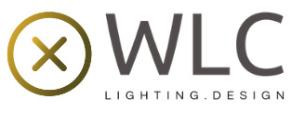
Specialists inthe preparationof qualityand effectivestreet lighting designsolutions forSection 38,Section 278and other highway projects.We alsoprepare lightingdesigns forother exterior applications.Our focusis ondelivering solutionsthat provide bestvalue.
Neither Lighting Journal nor the ILP is responsible for any services supplied or agreements entered into as a result of this listing
OUR EMINERE™ LINE UP EMINERE™ anolislighting.com
Thisdirectorygivesdetailsofsuitablyqualified,individualmembersoftheInstitutionofLightingProfessionals(ILP)whoofferconsultancyservices
Discover NAVAR Series
Blending circular economy values with maximised performance through bespoke optical packages, the NAVAR Series o ers 0% ULOR and up to 48m spacings.
With more than 280 unique configurations and full smart controls capabilities, this collection allows for complete project versatility.
Colour temperature variants, catenary, post top, side entry and bespoke bracketry opportunities, all with a marine grade finish and e icient output places NAVAR ahead of the competition.



01623 415900 www.kingfisherlighting.com plc Part of the group of companies STREET | AMENITY | ARCHITECTURAL | SPORT | HIGH MAST | RAIL | CONTROLS






 Community Reassurance Theme Manager City of Doncaster Council
Jess Gallacher Exterior Lighting BDM ASD Lighting
Community Reassurance Theme Manager City of Doncaster Council
Jess Gallacher Exterior Lighting BDM ASD Lighting



















 NicPaton Editor
NicPaton Editor

 By Perry Hazell
By Perry Hazell



























































 By Pierre Michard
By Pierre Michard




 By Nic Paton
By Nic Paton




 By Matthew Sieglitz
By Matthew Sieglitz





























 By Ross Evans
By Ross Evans























































































